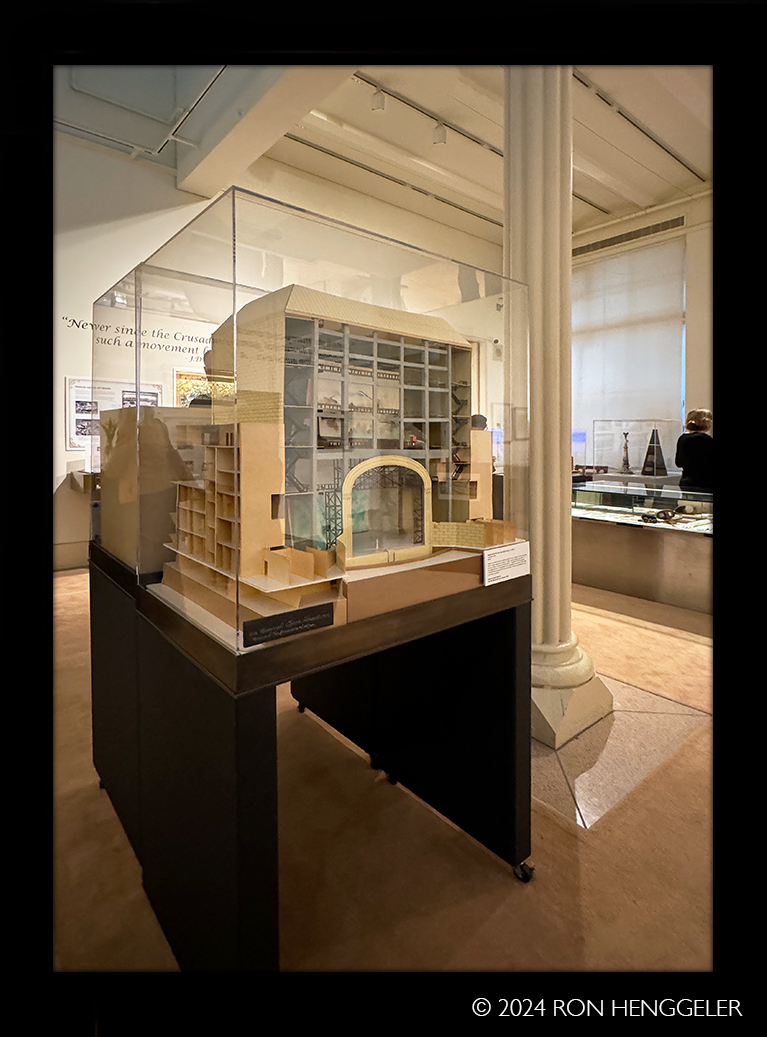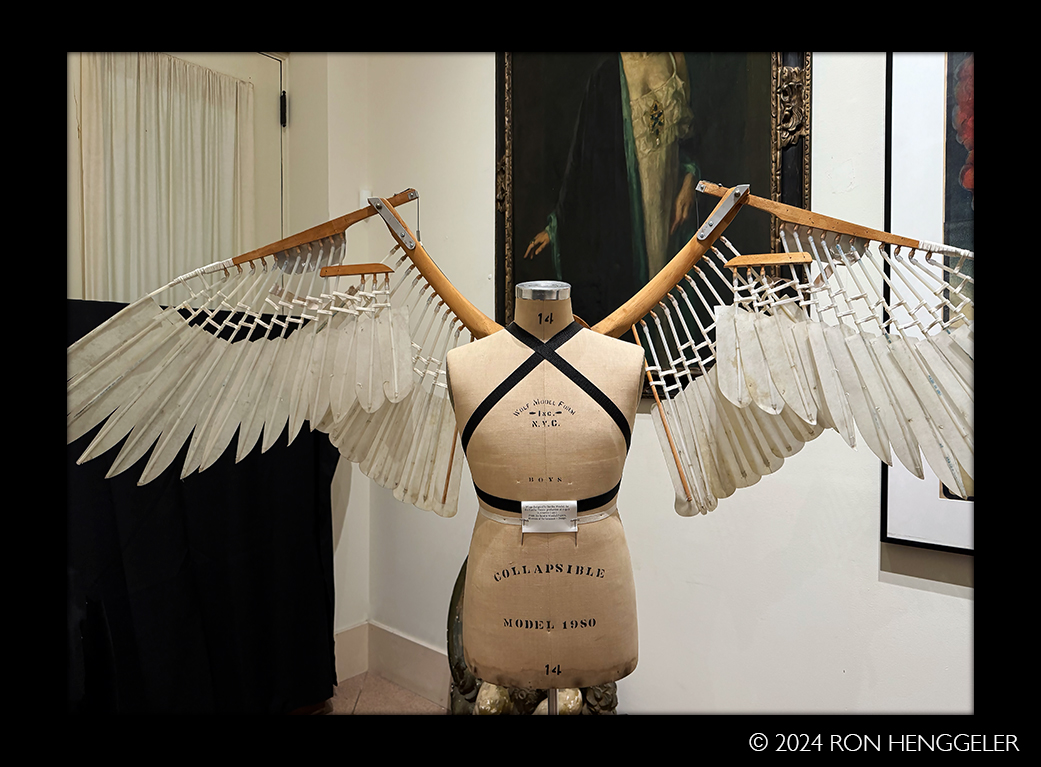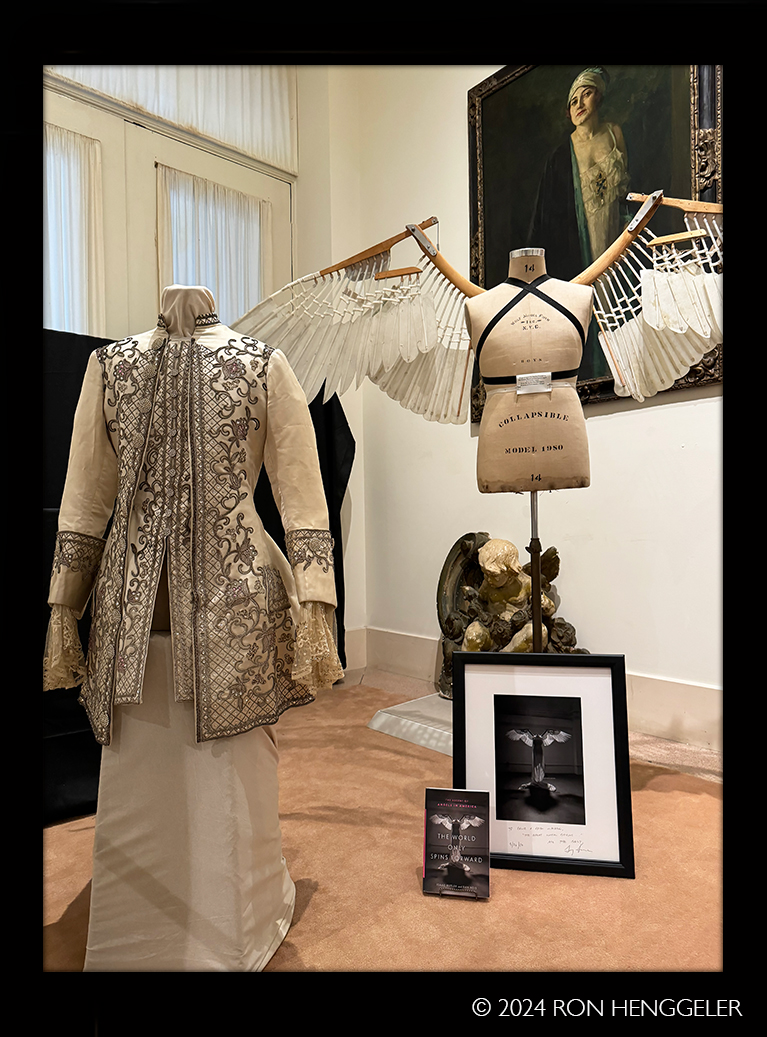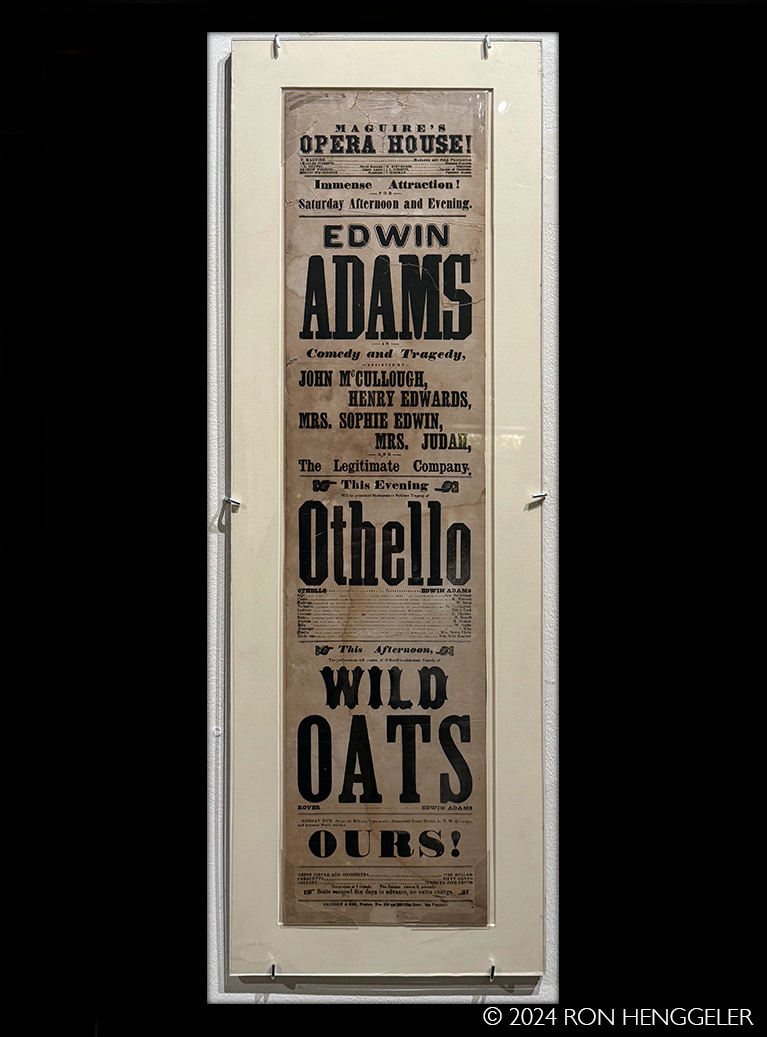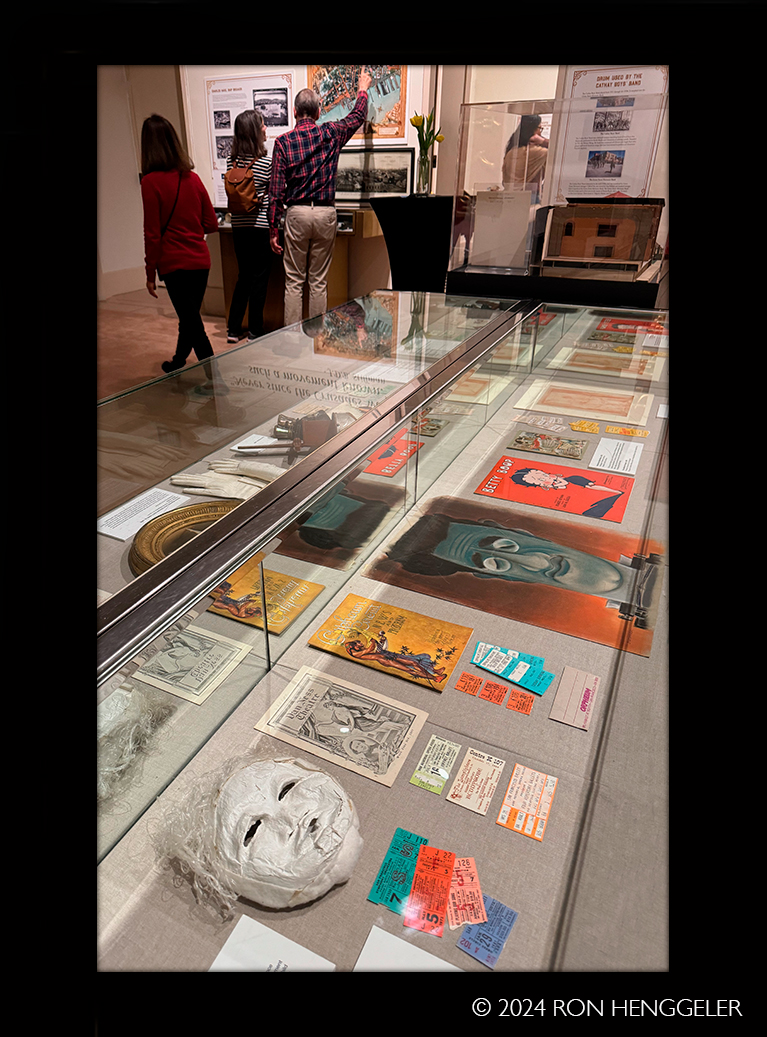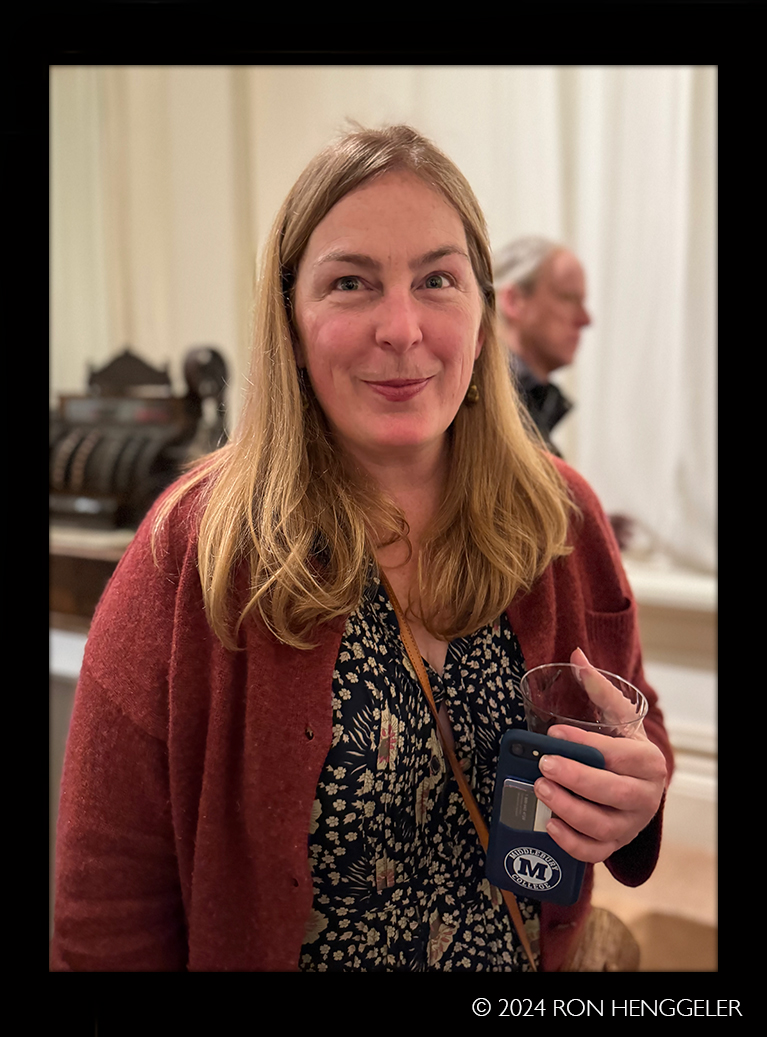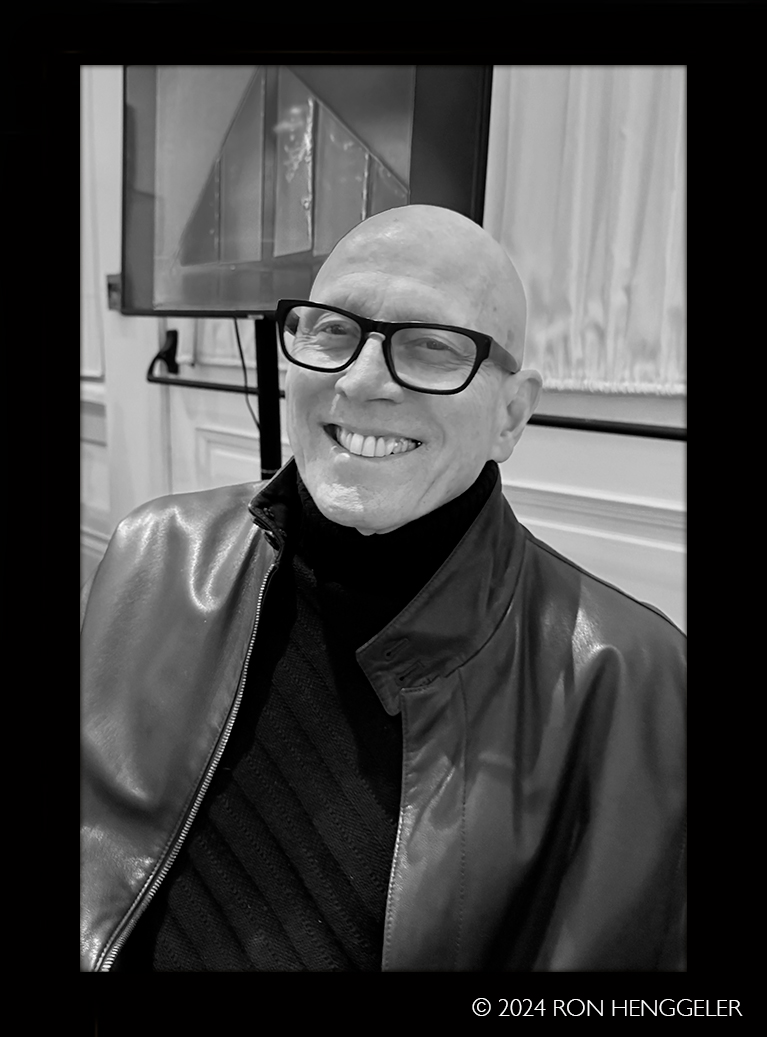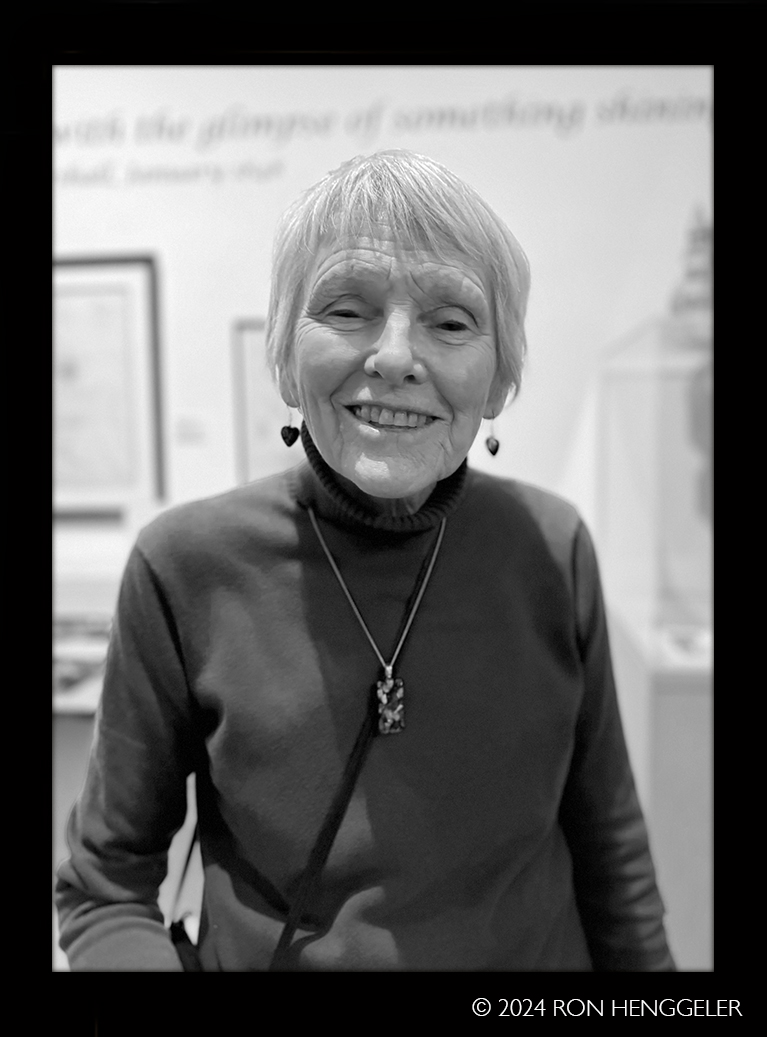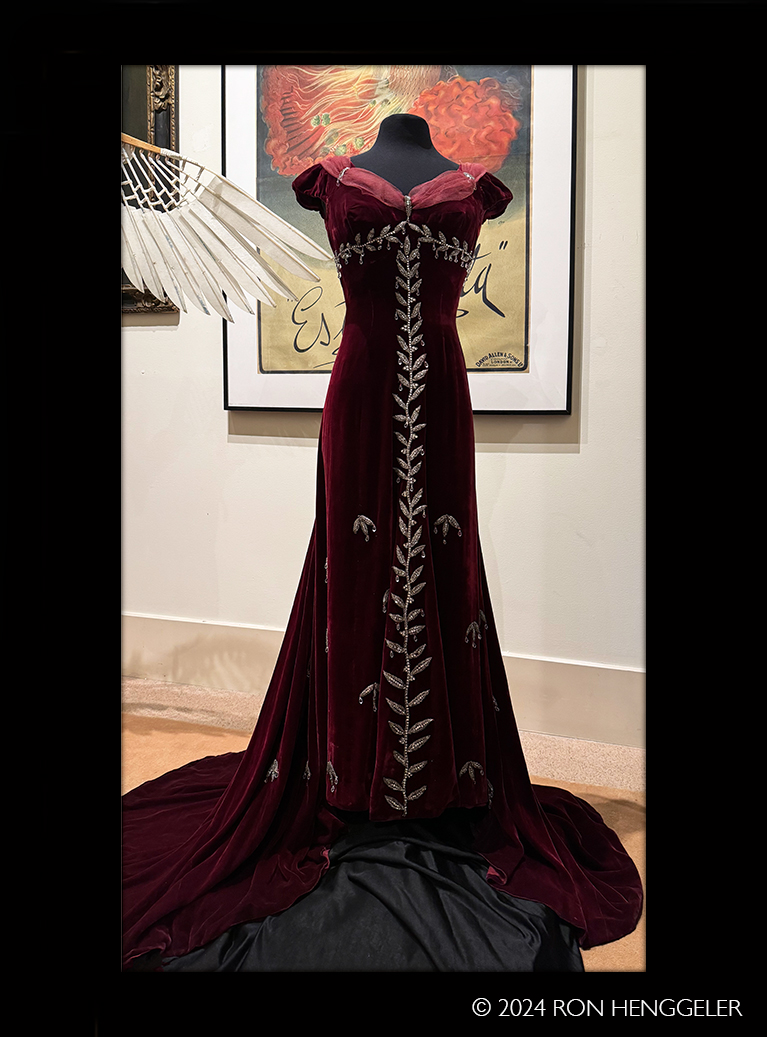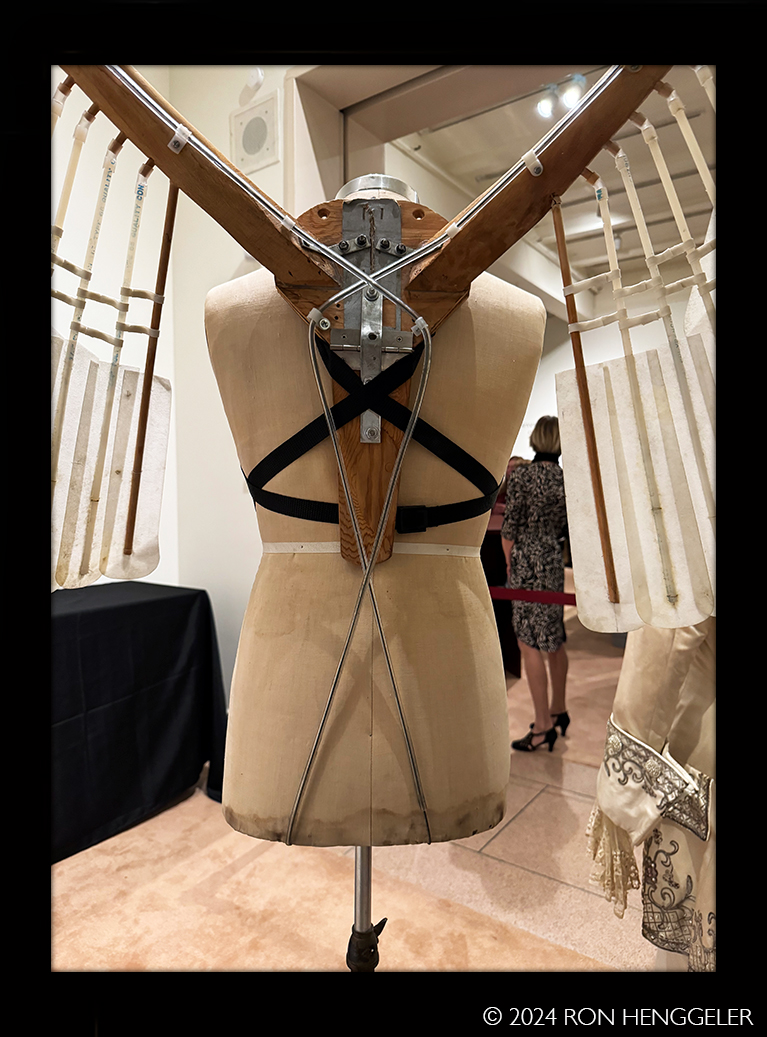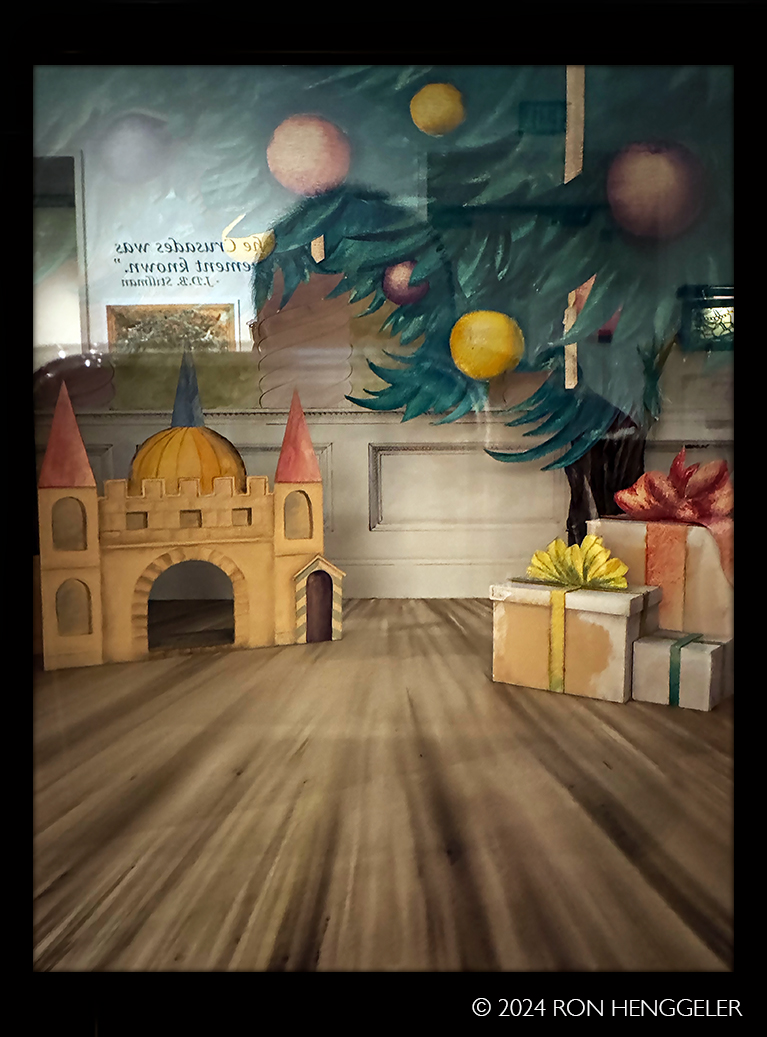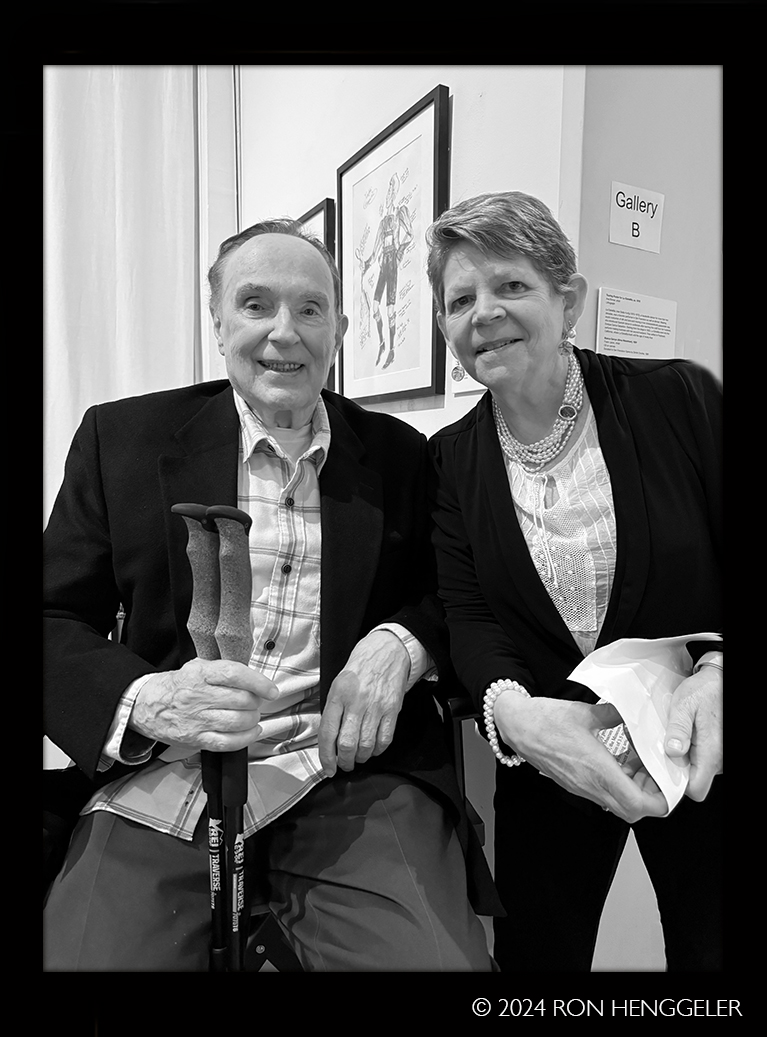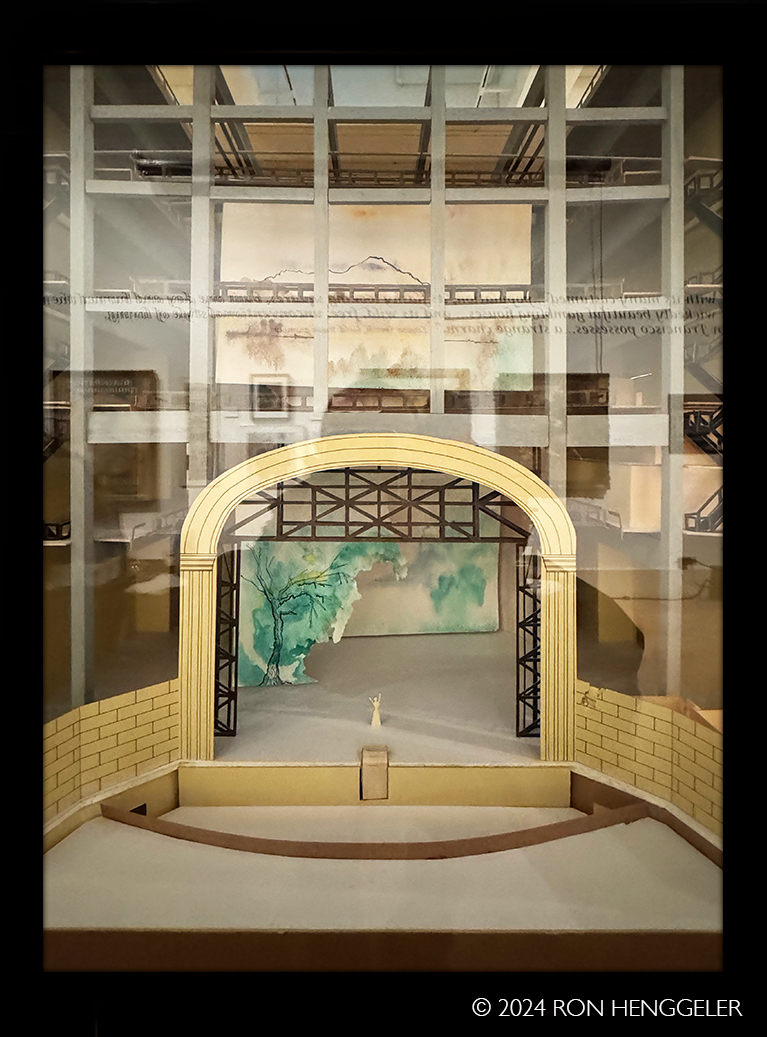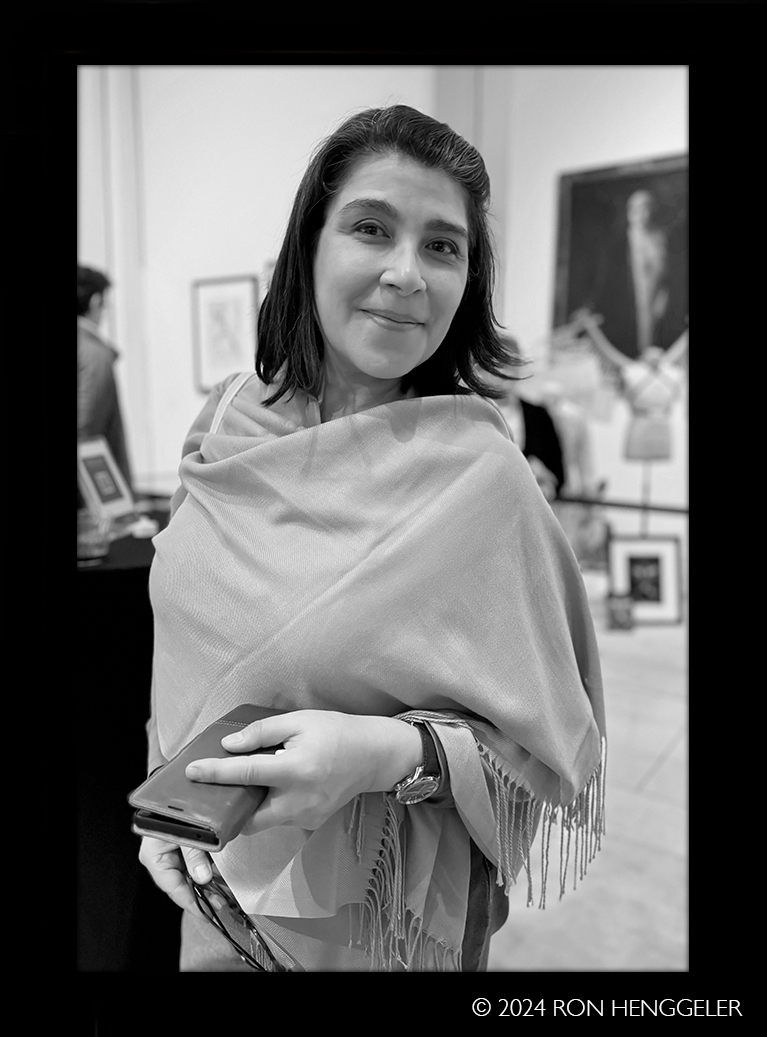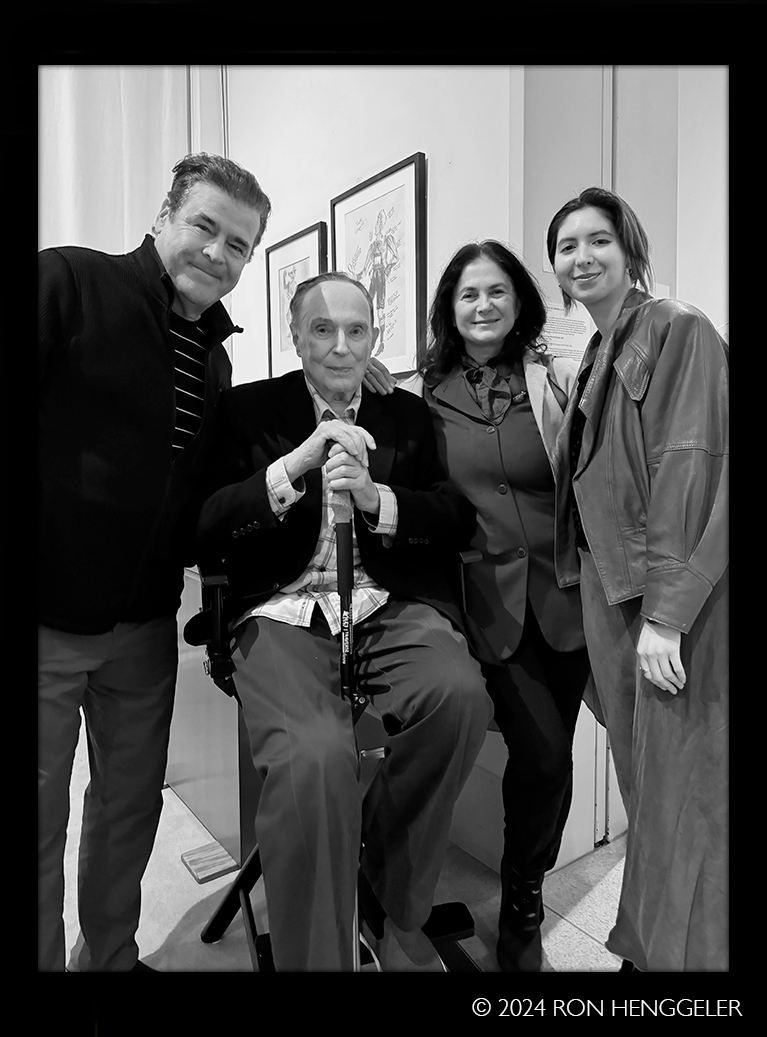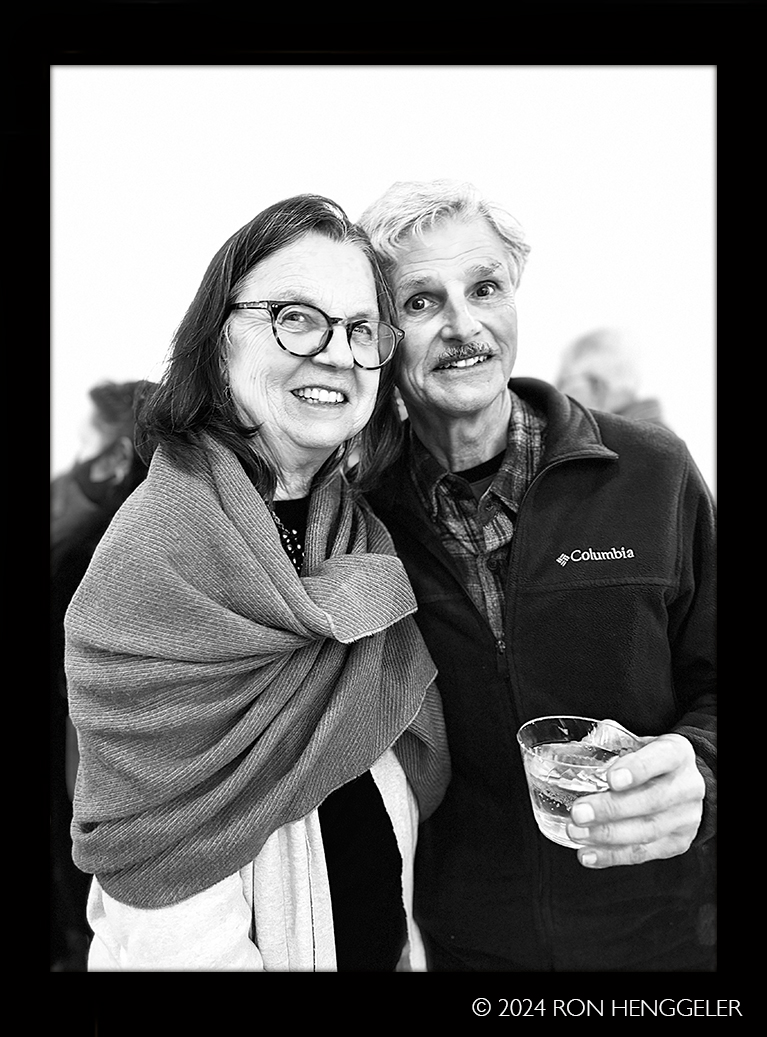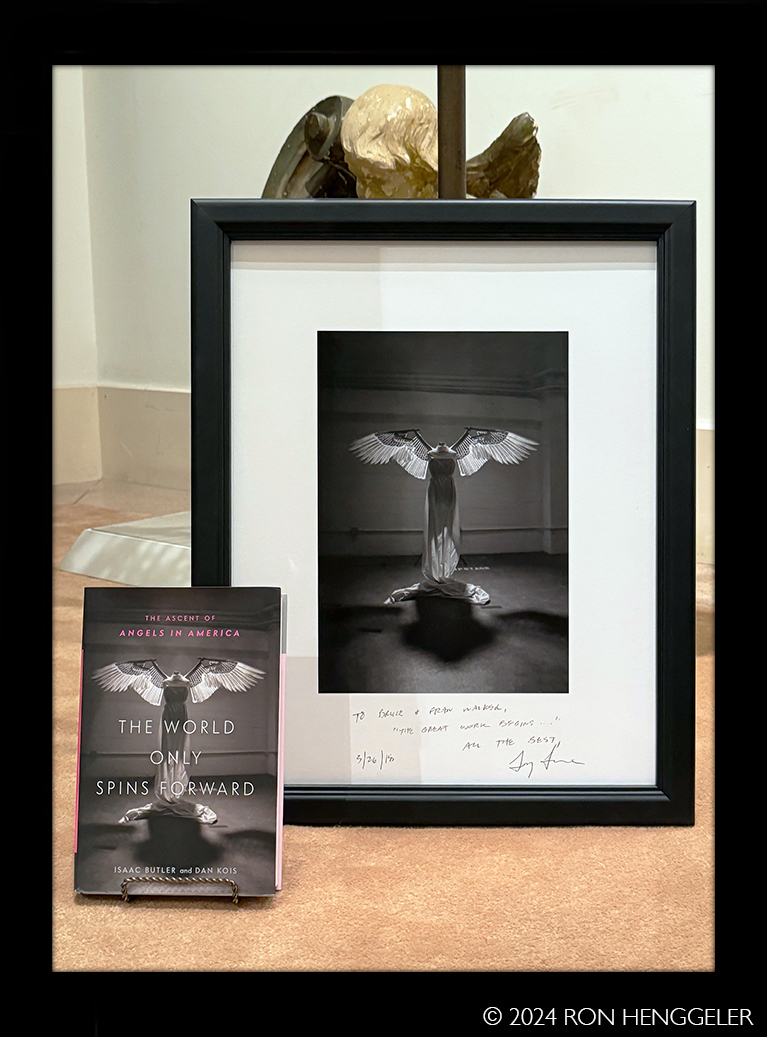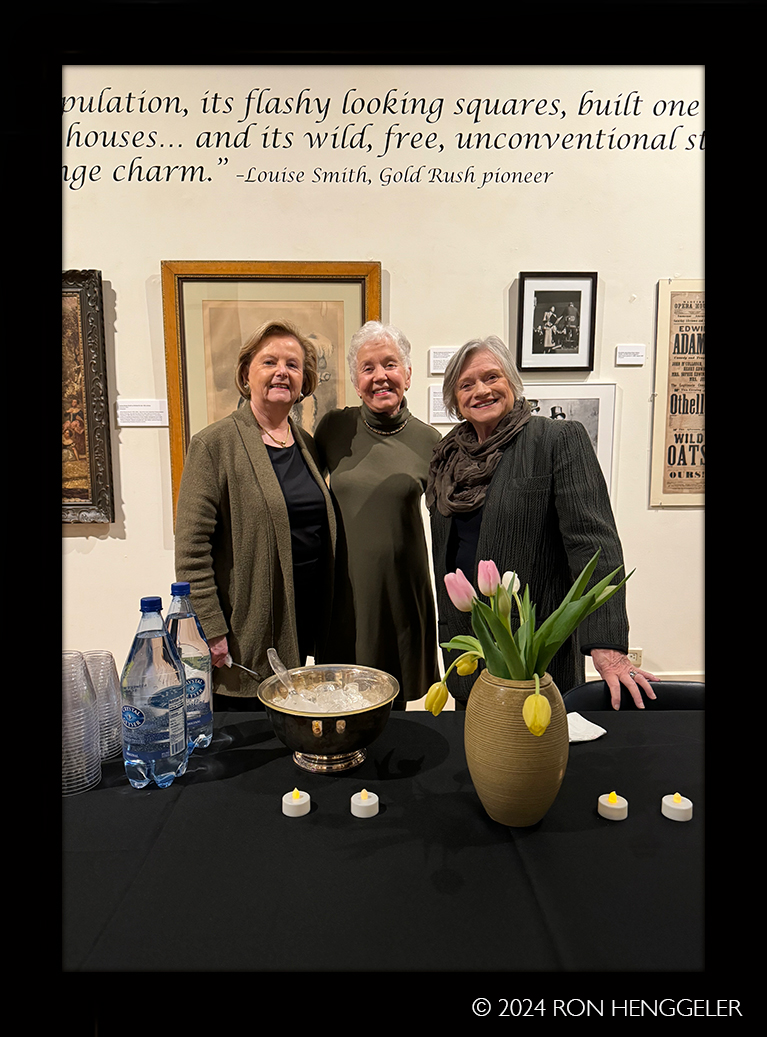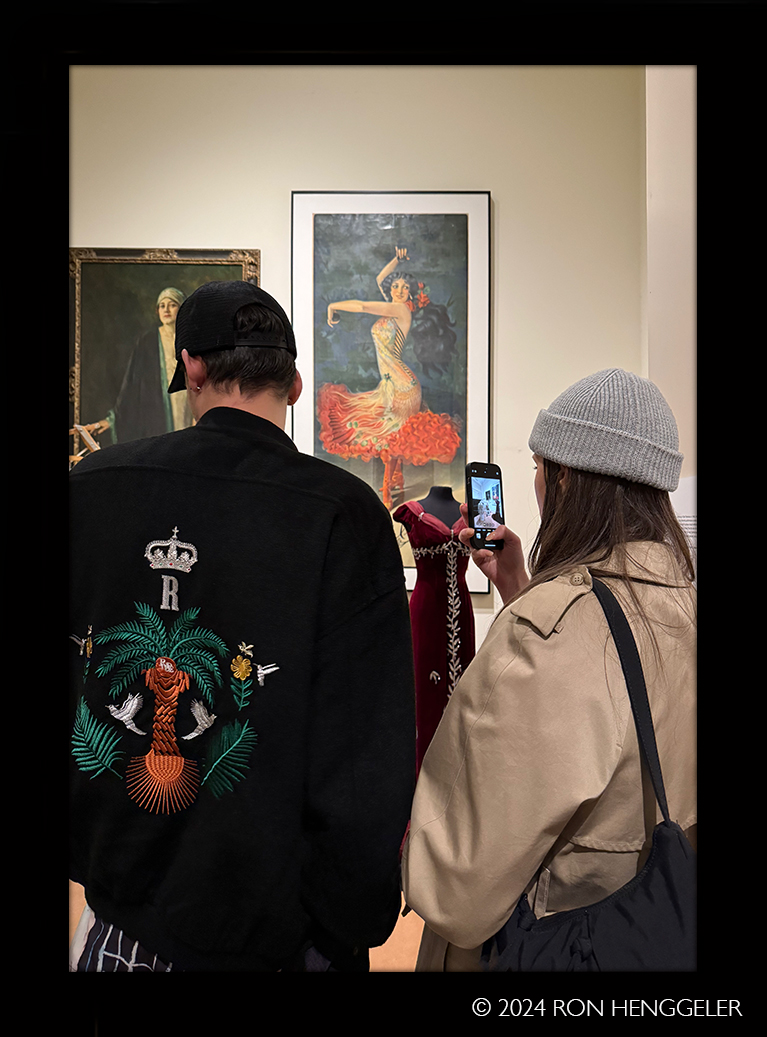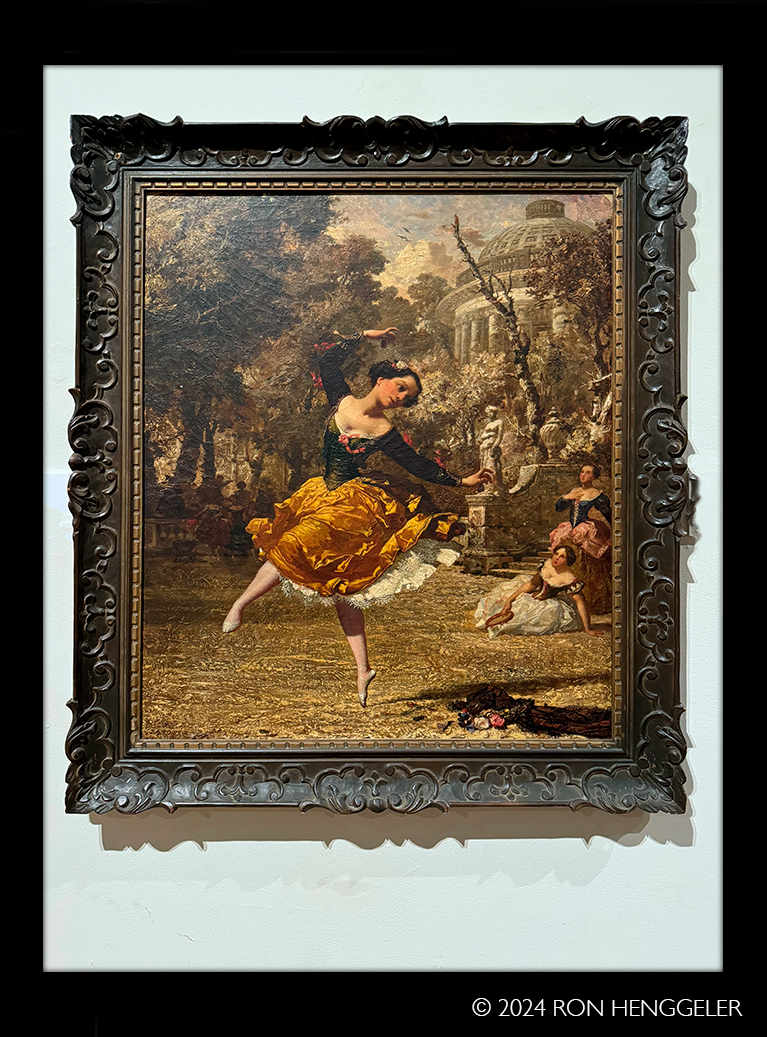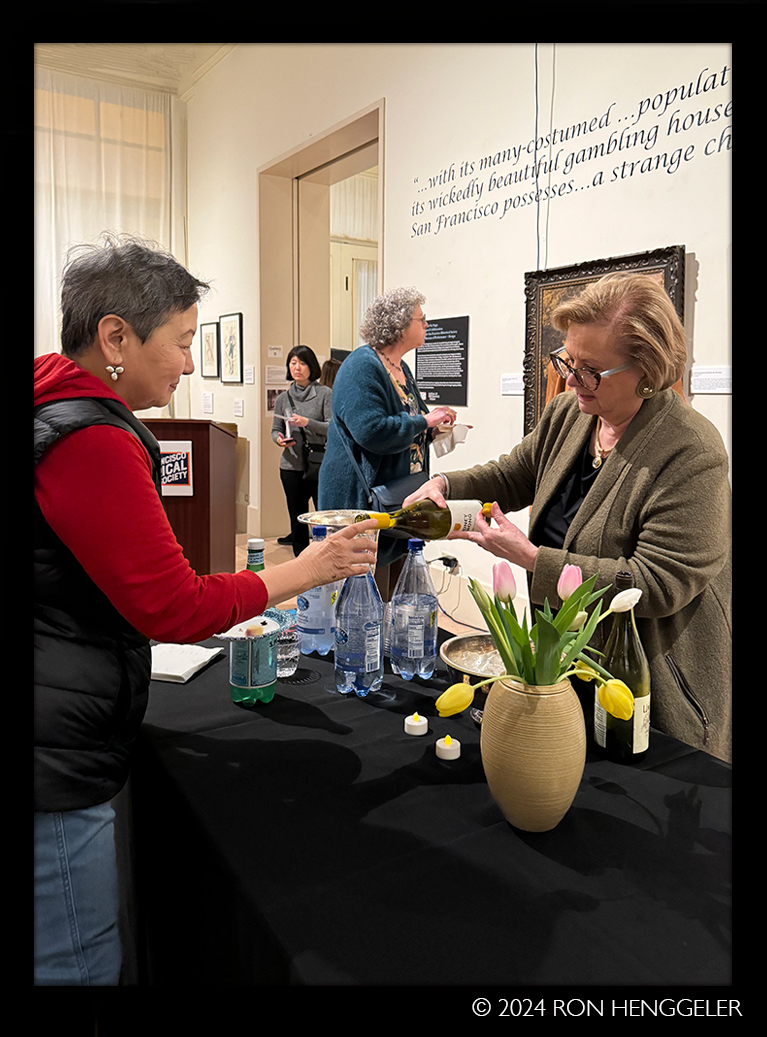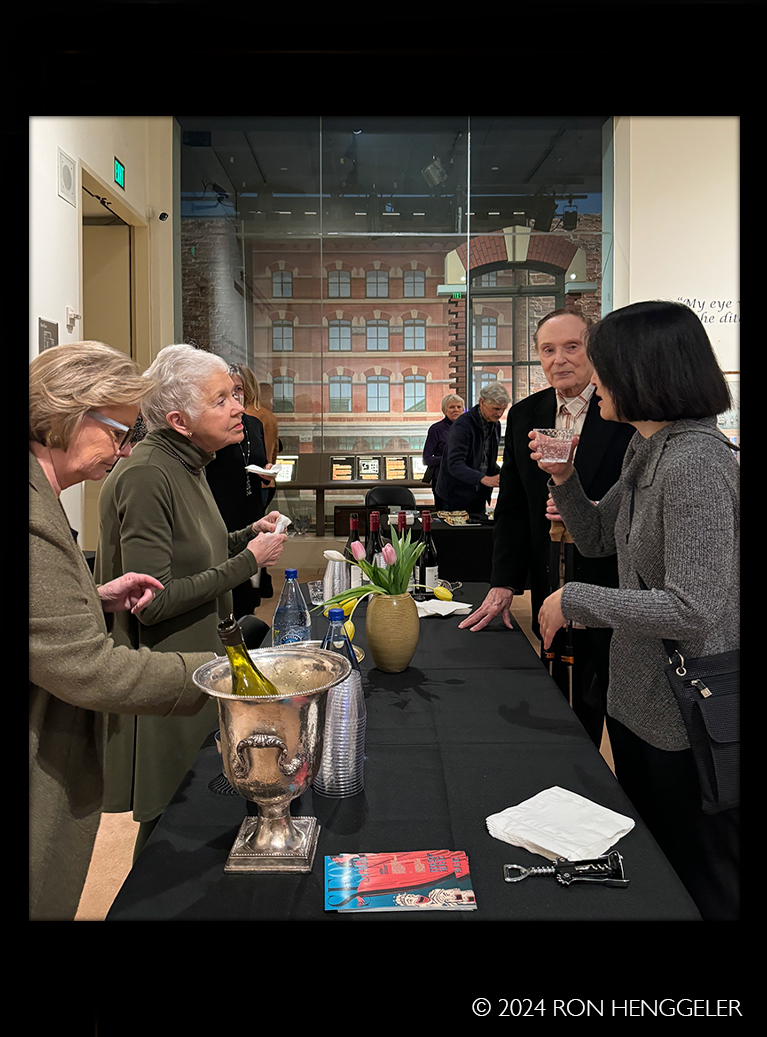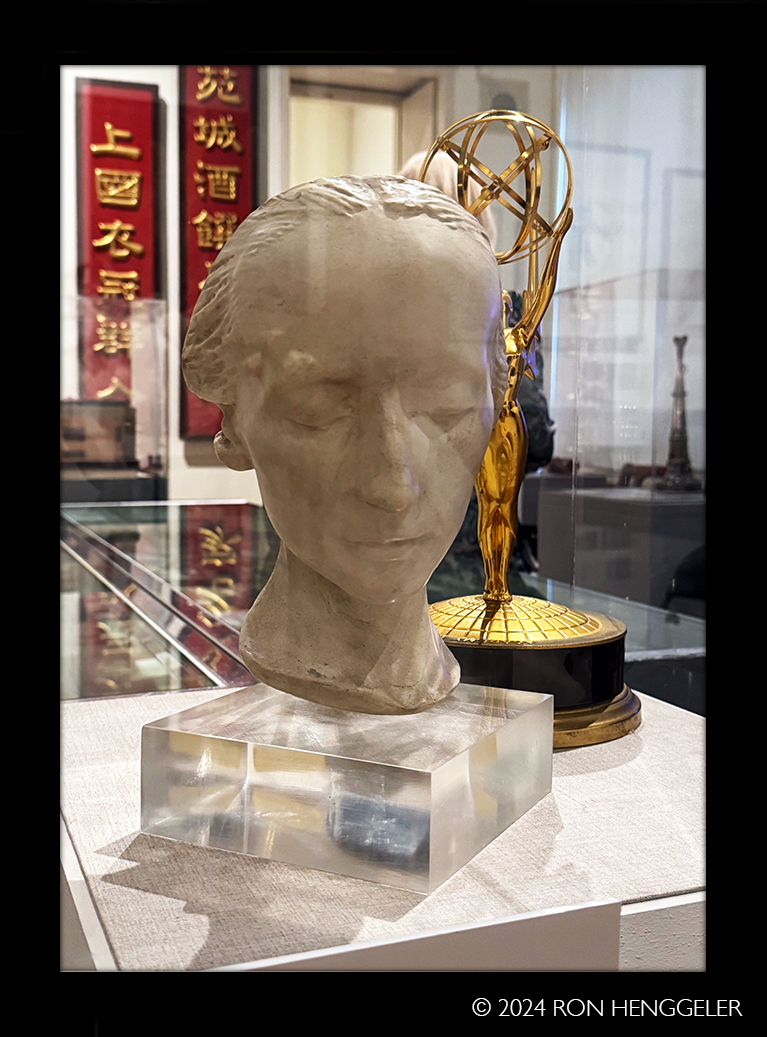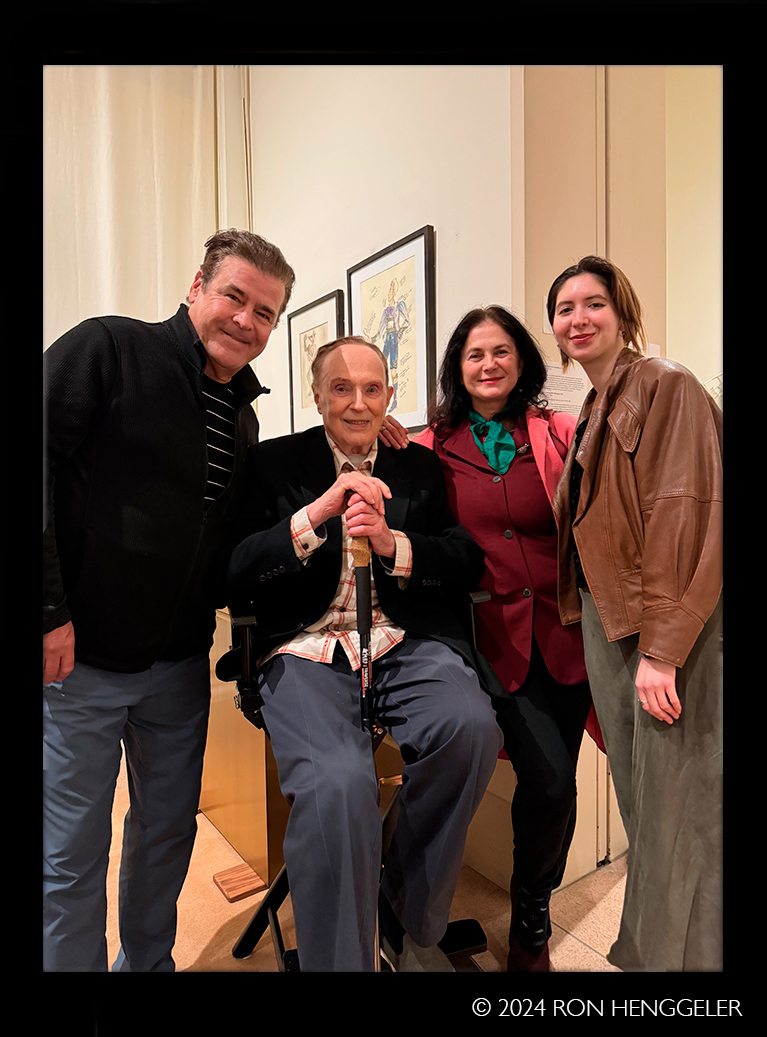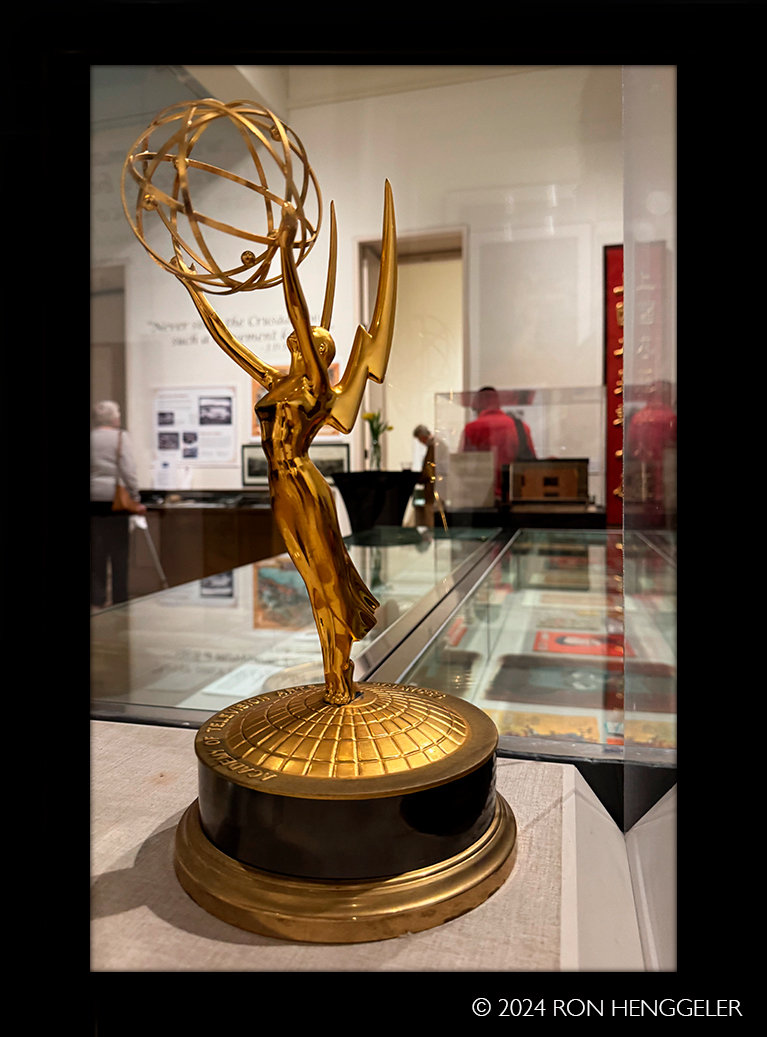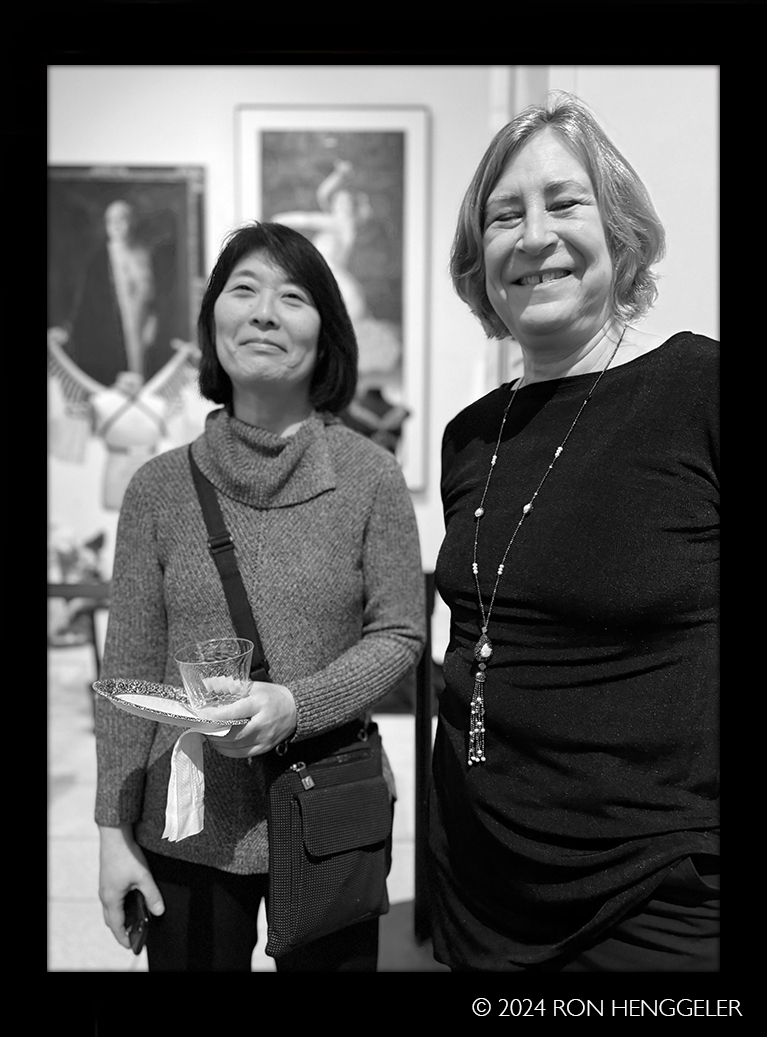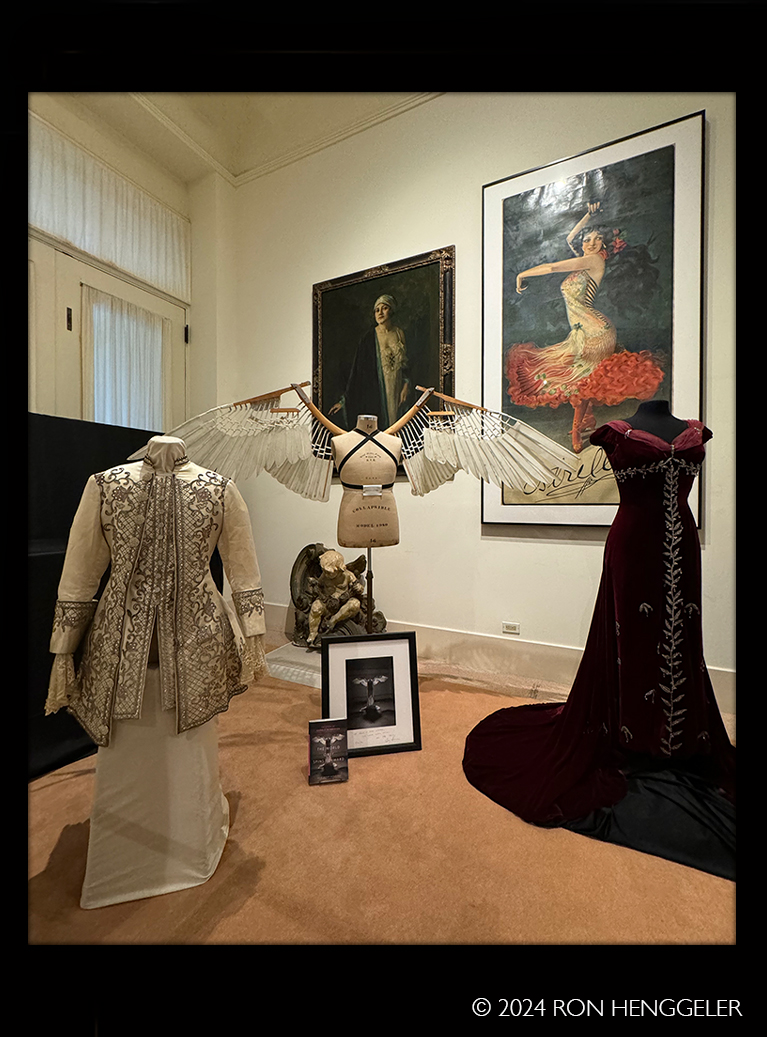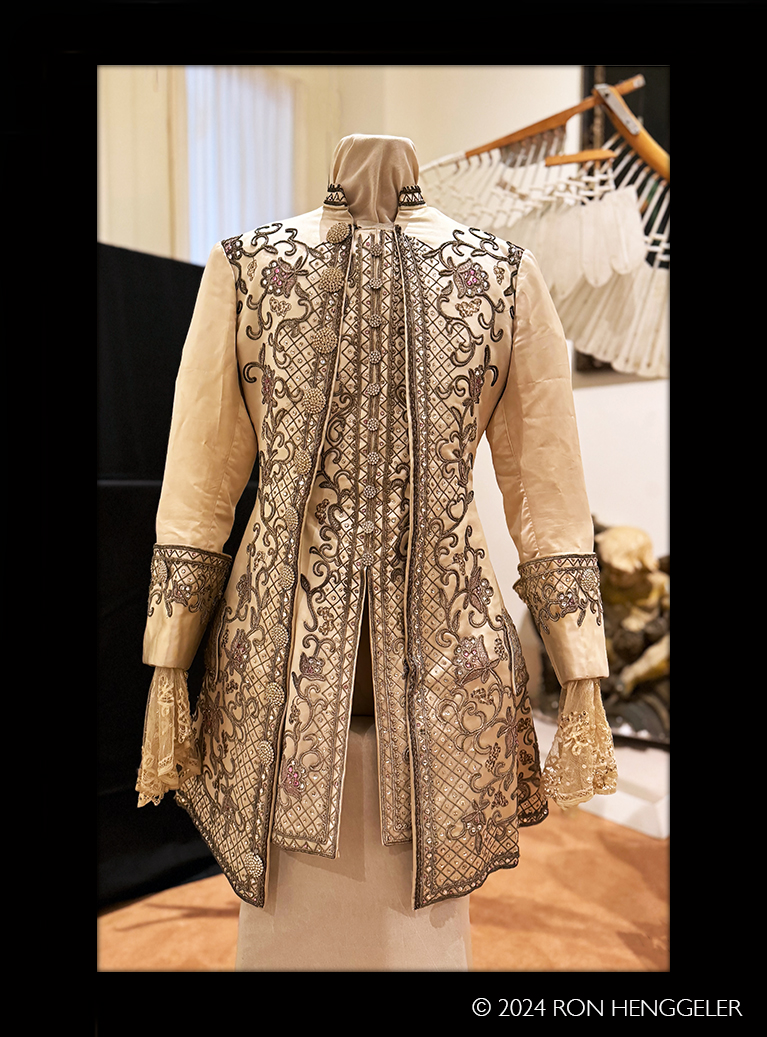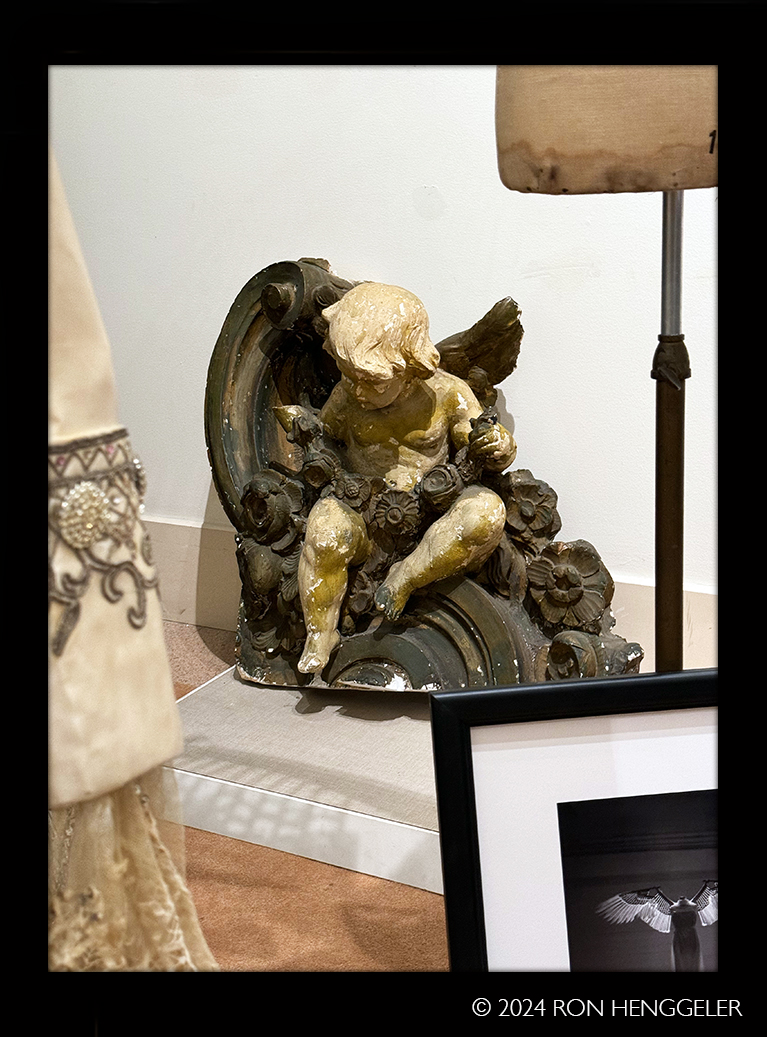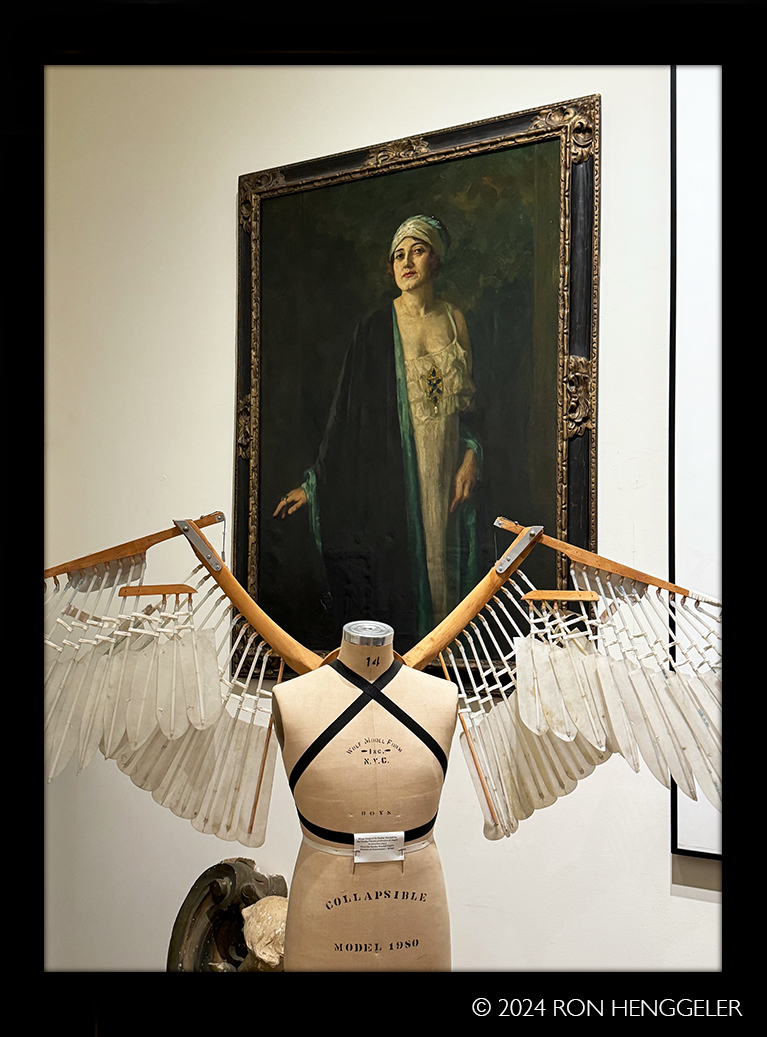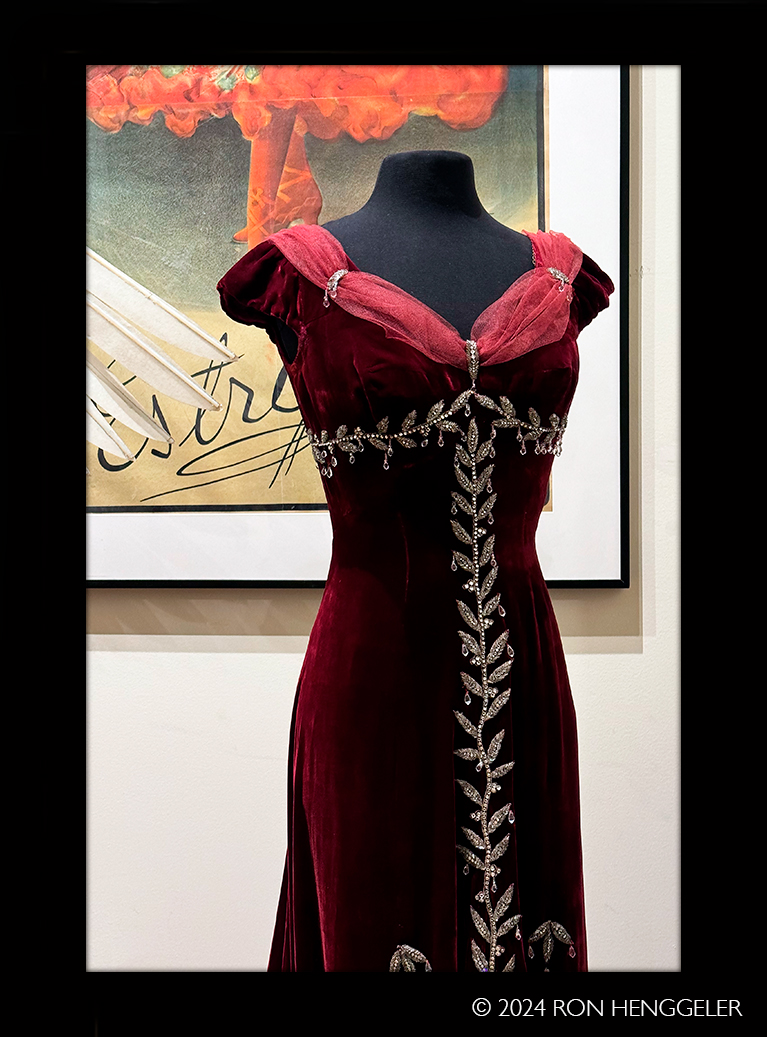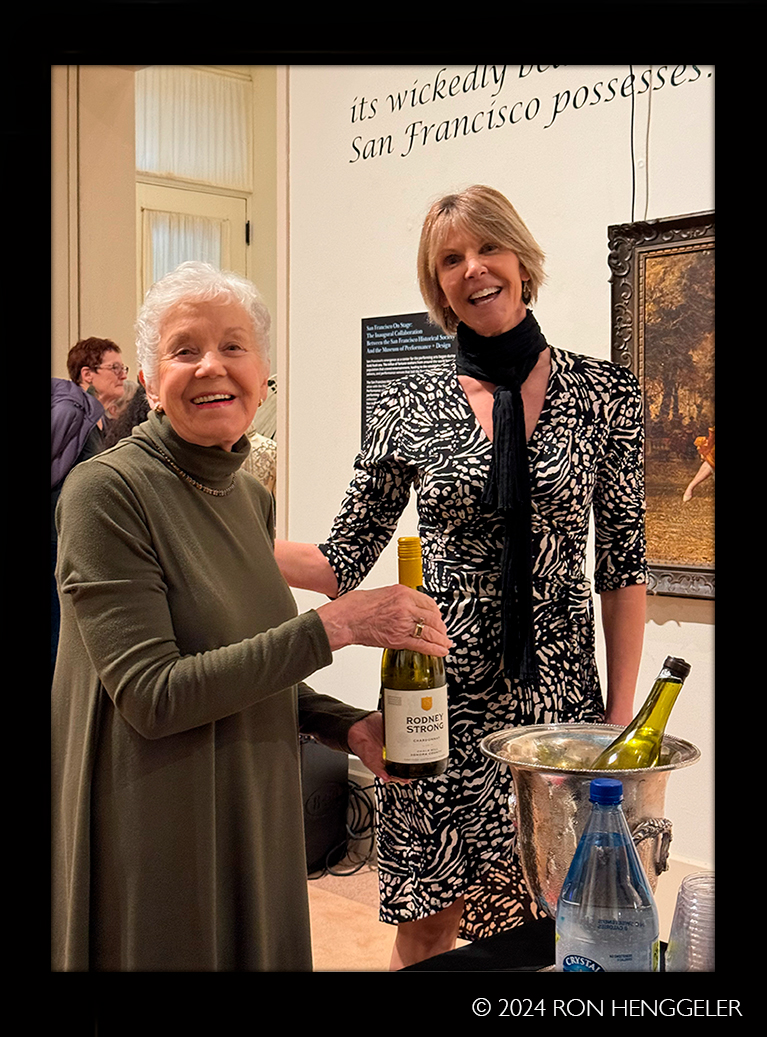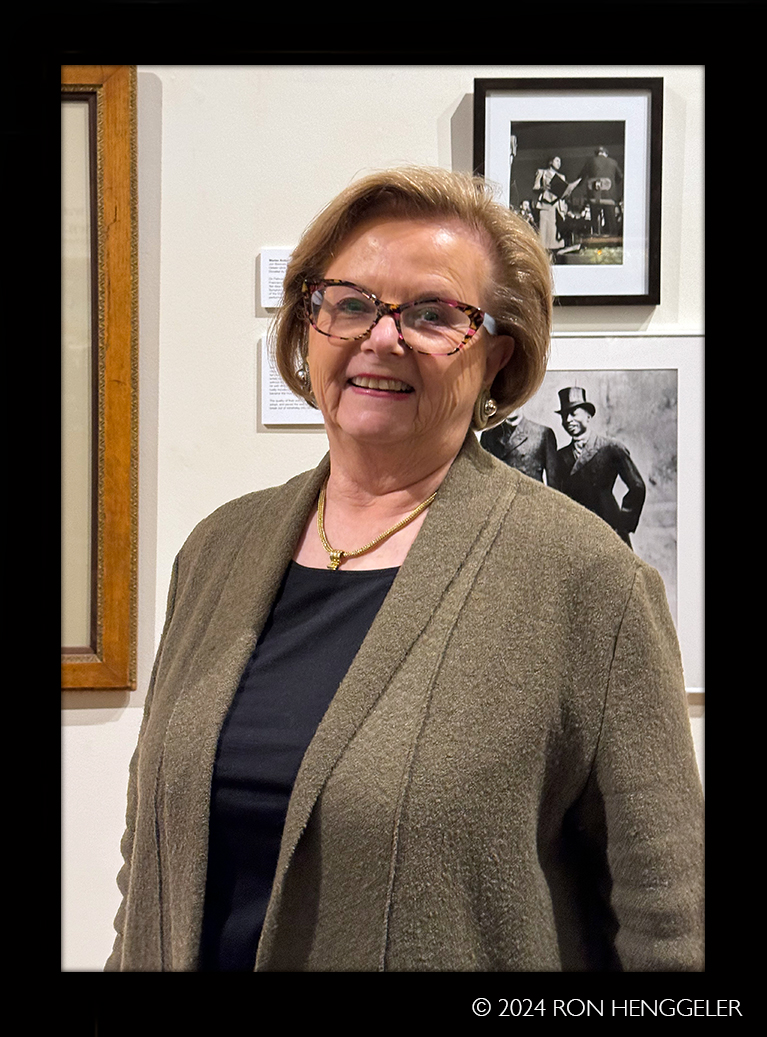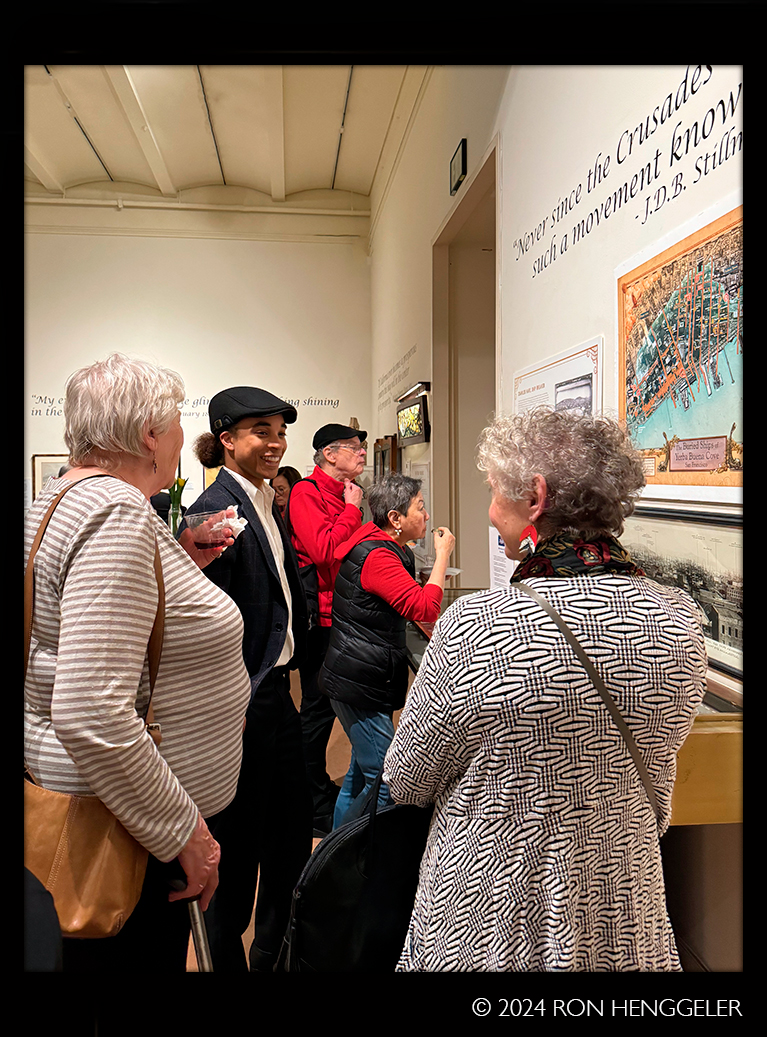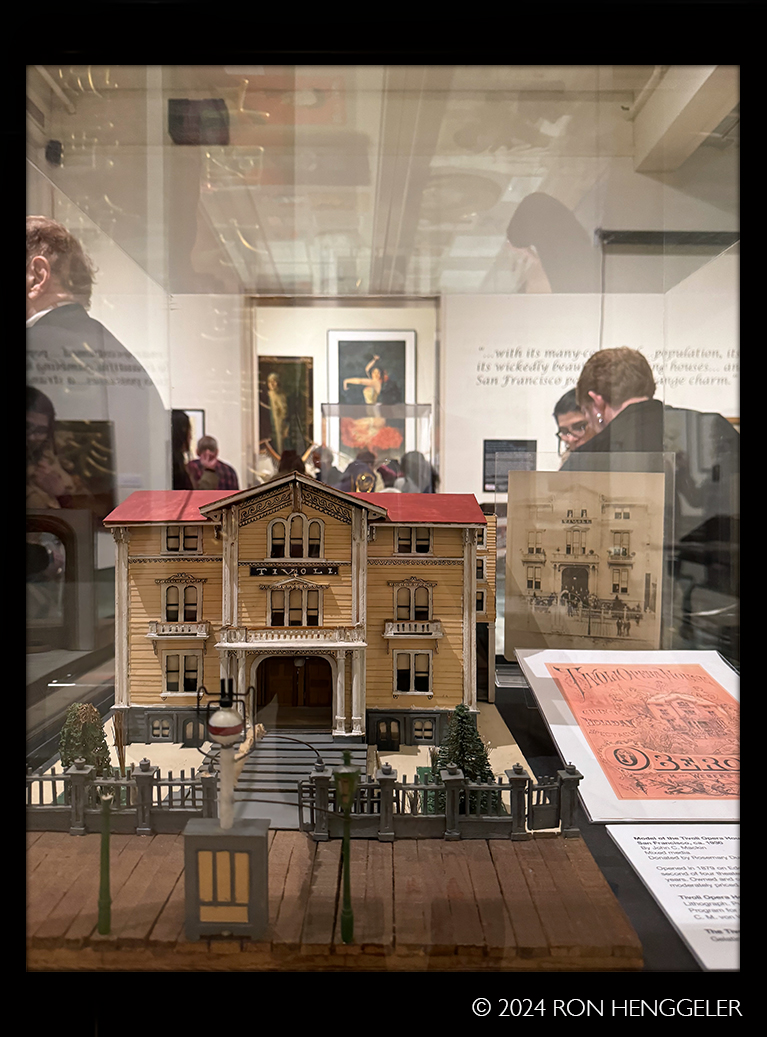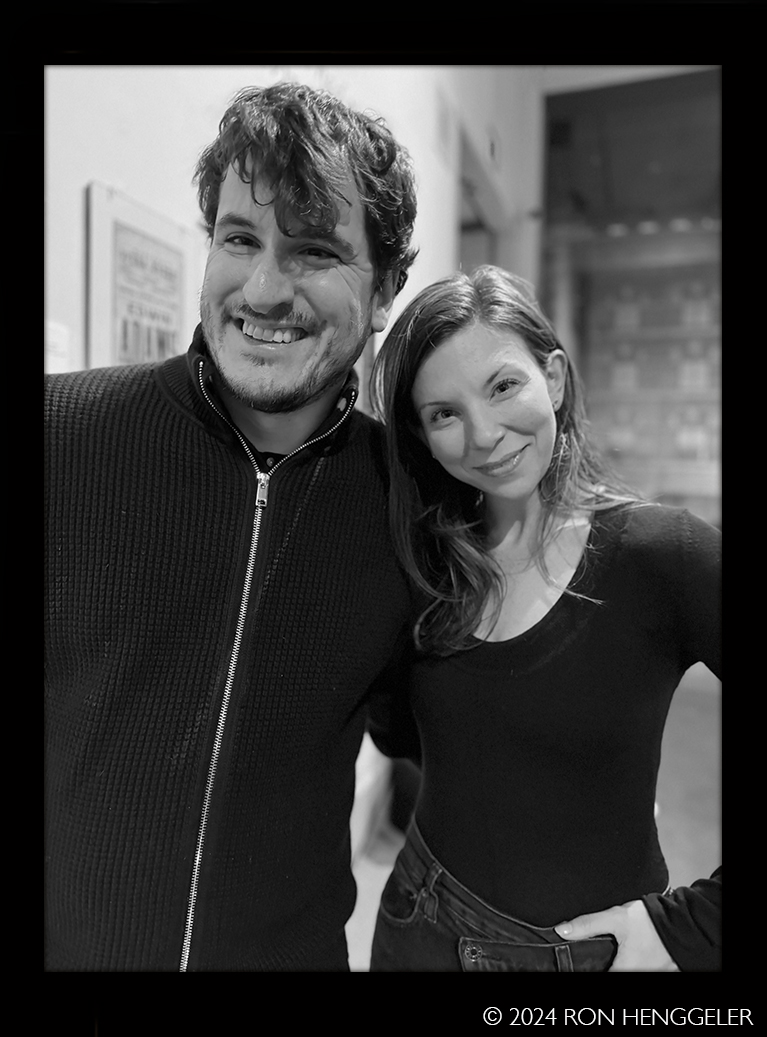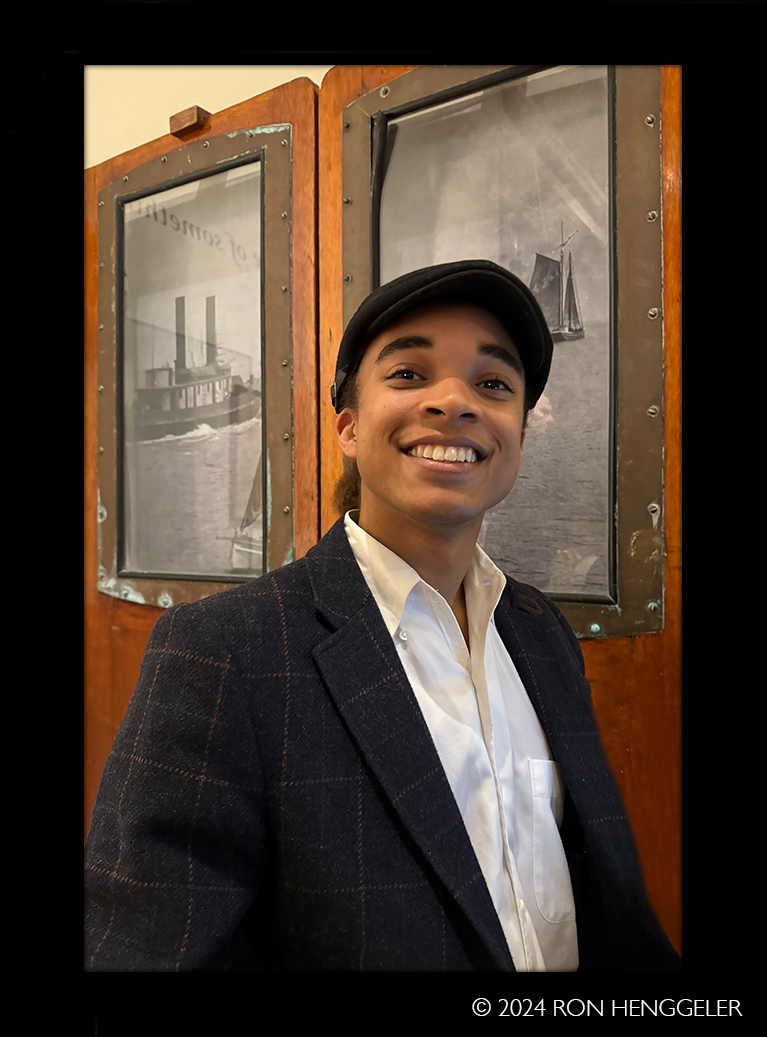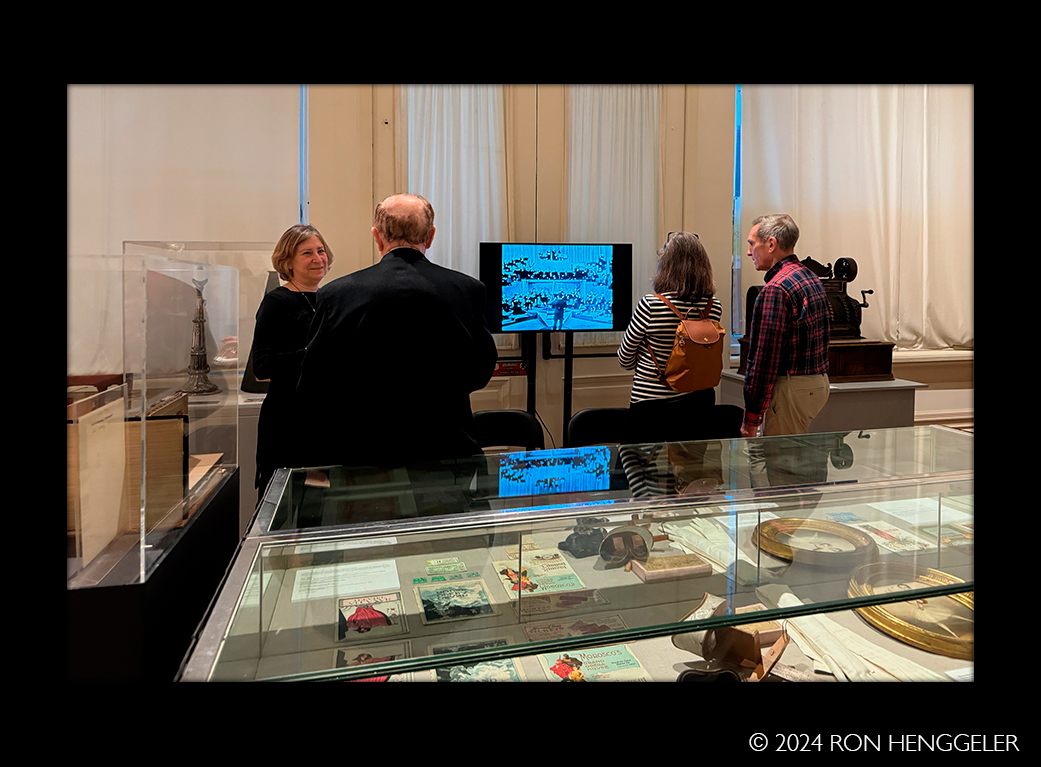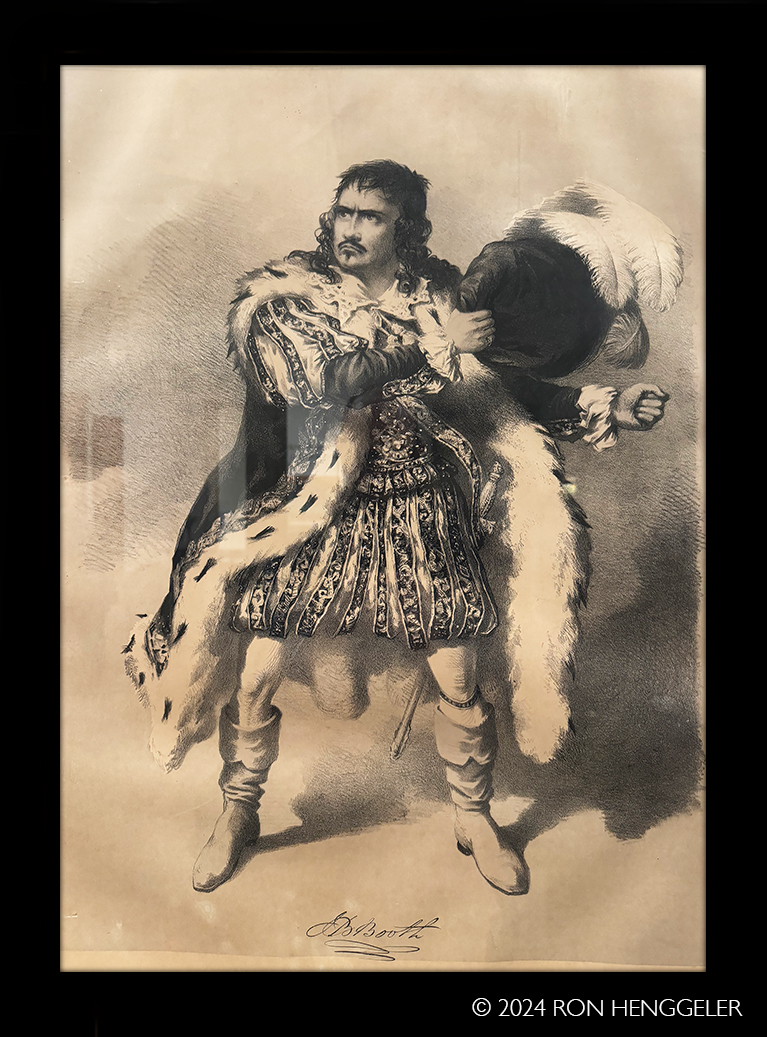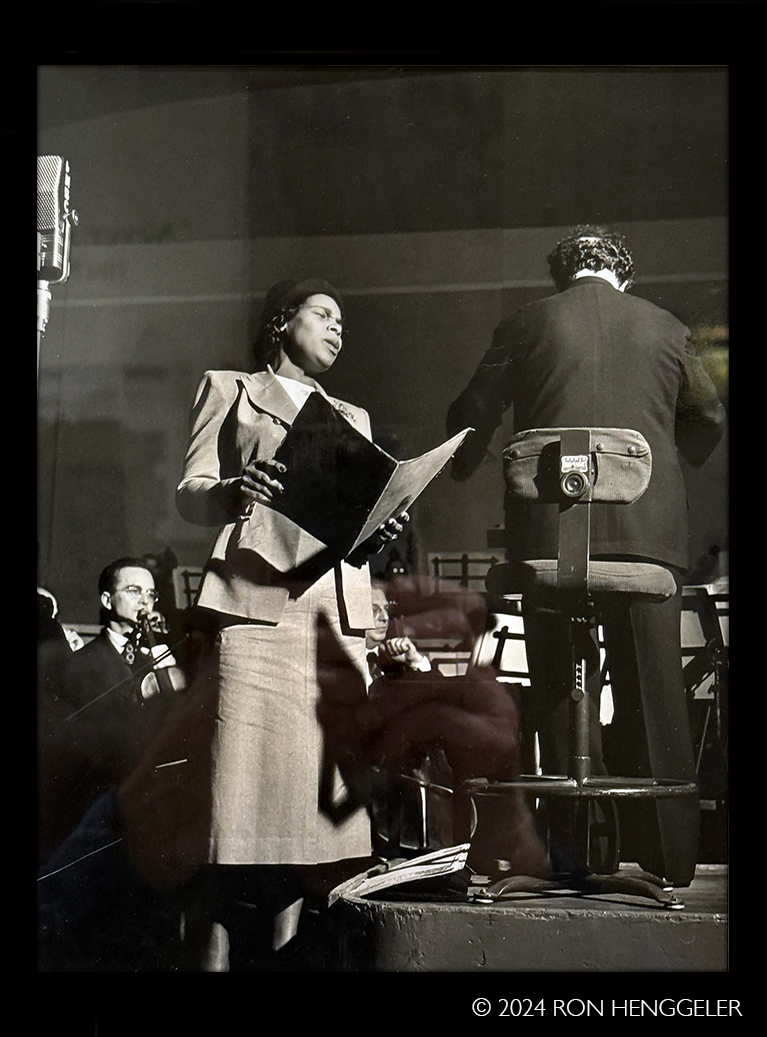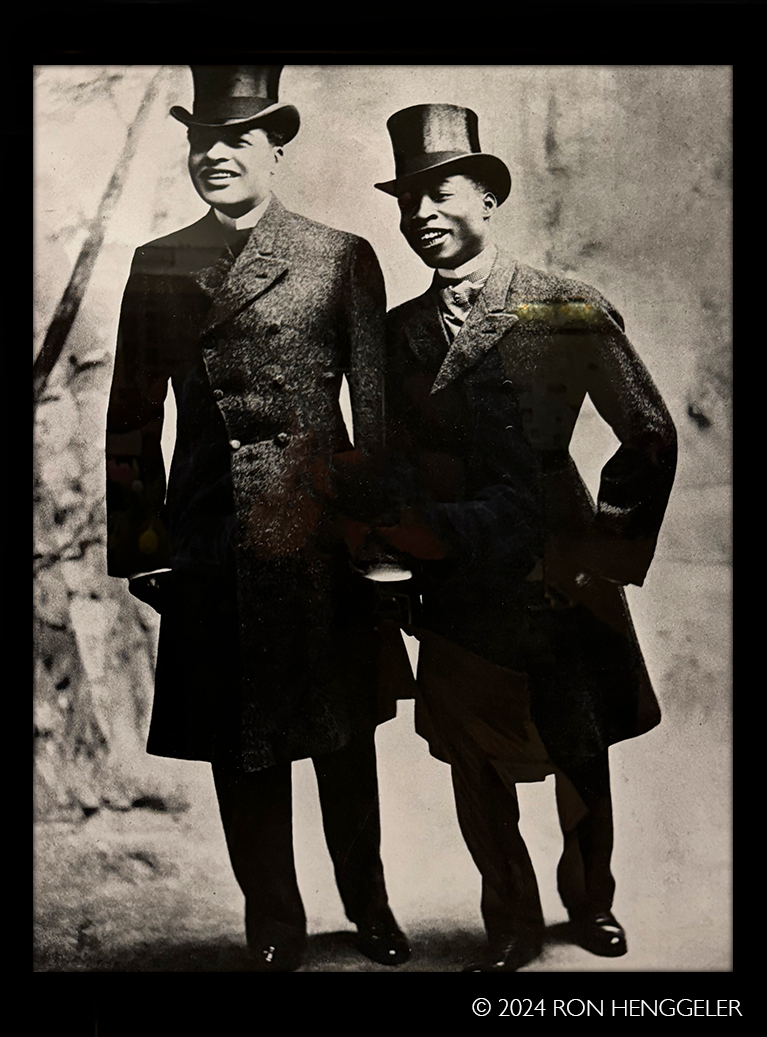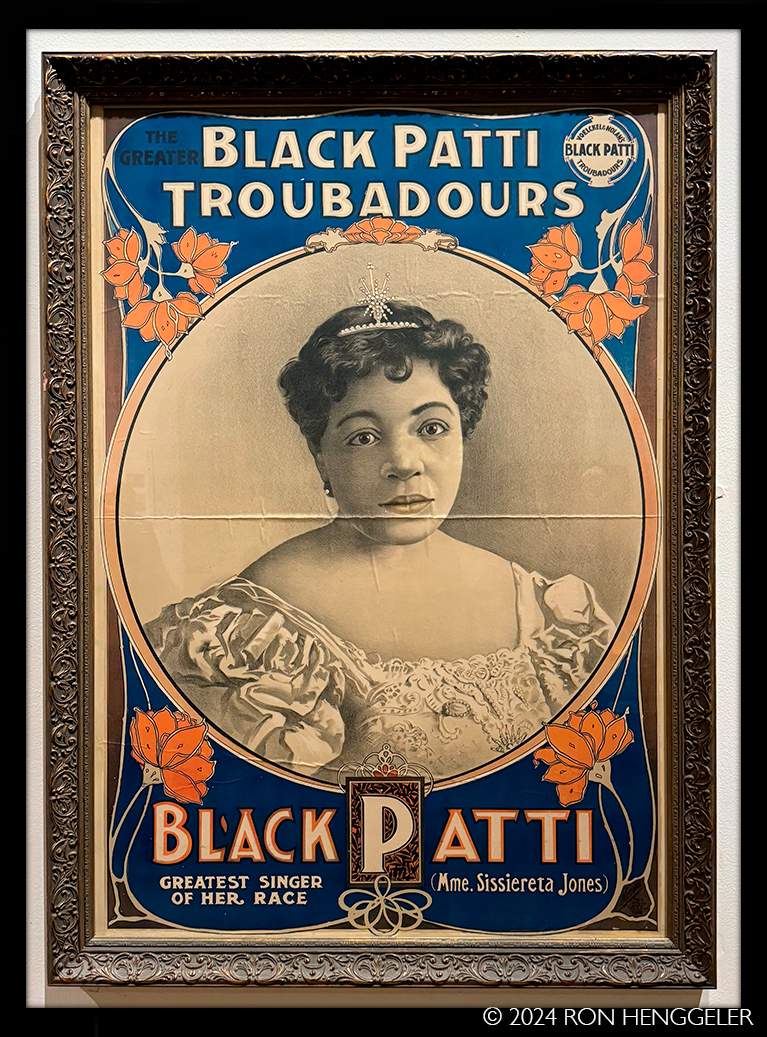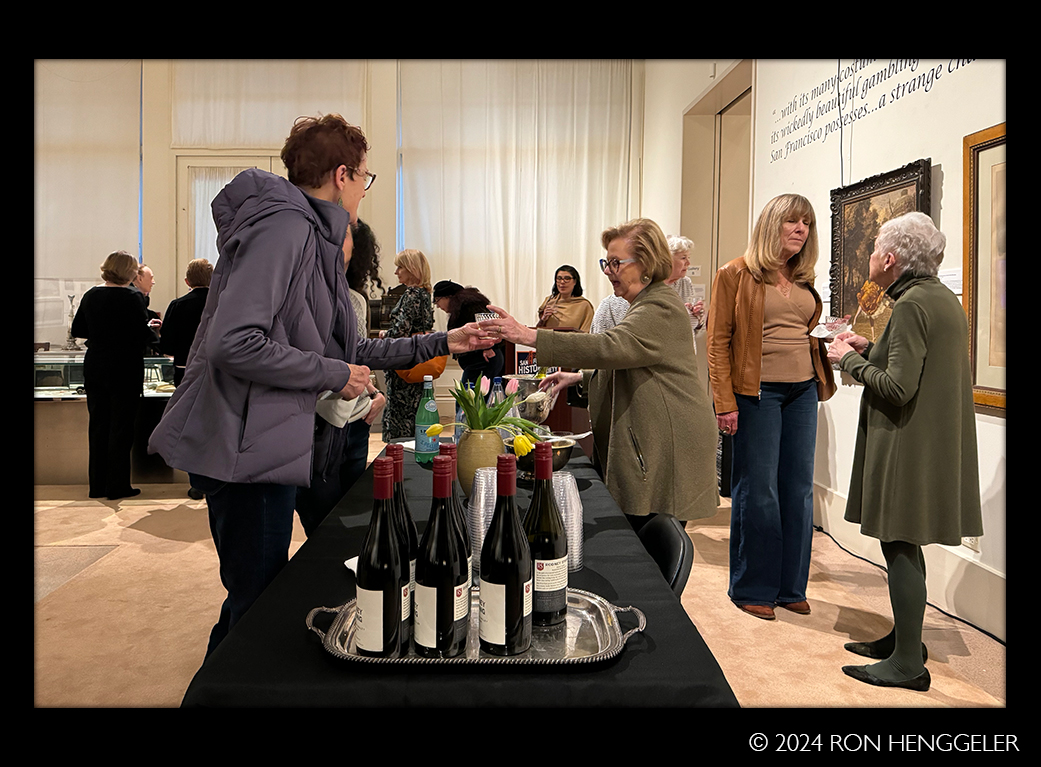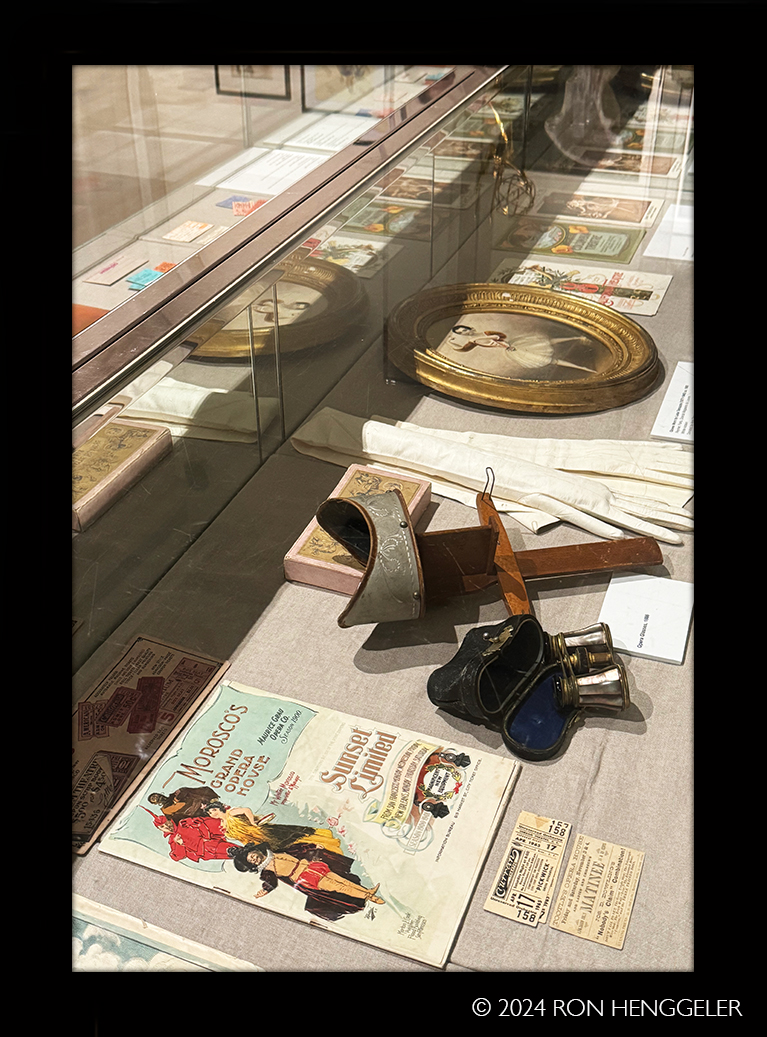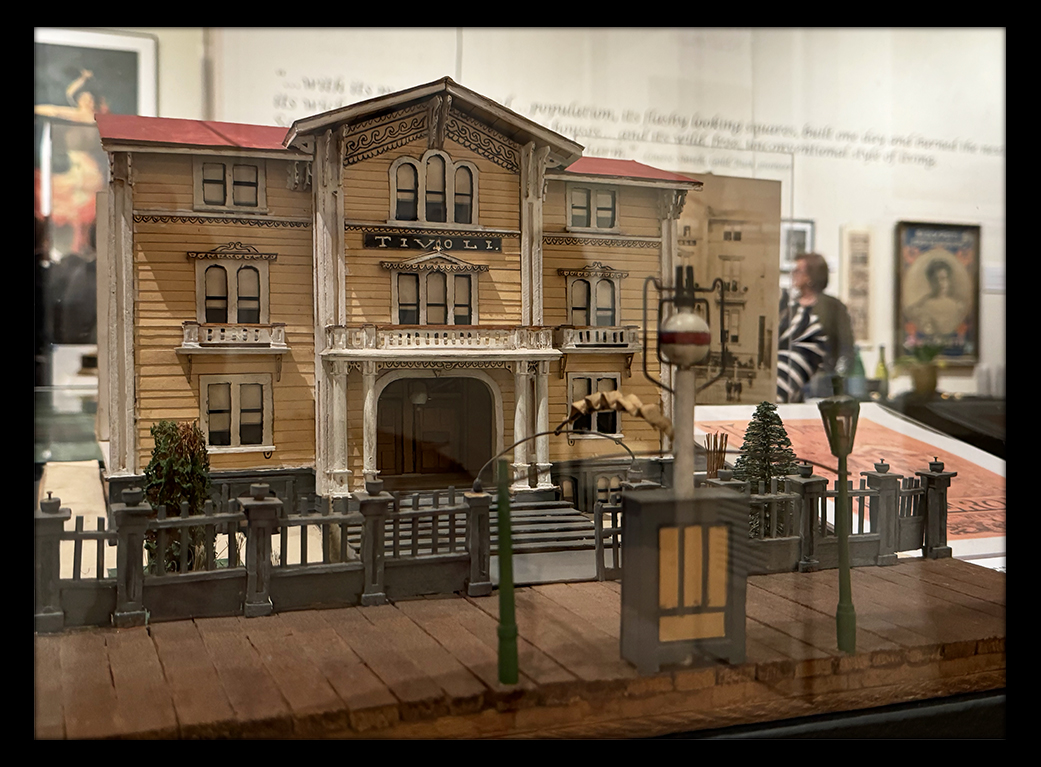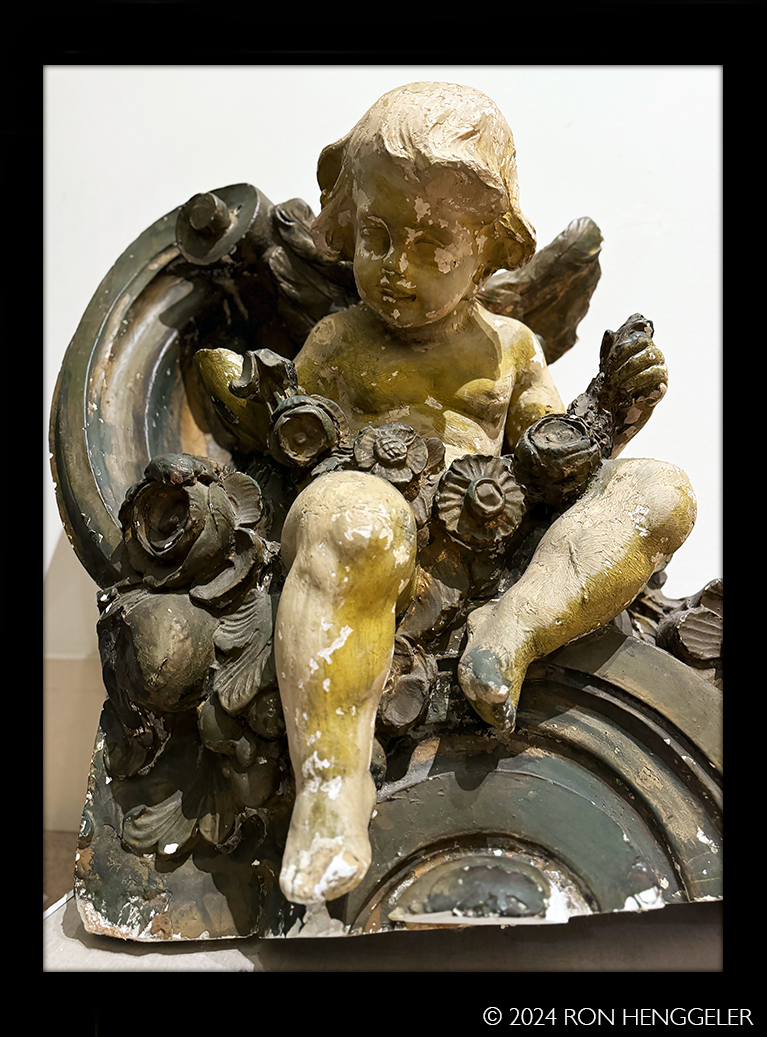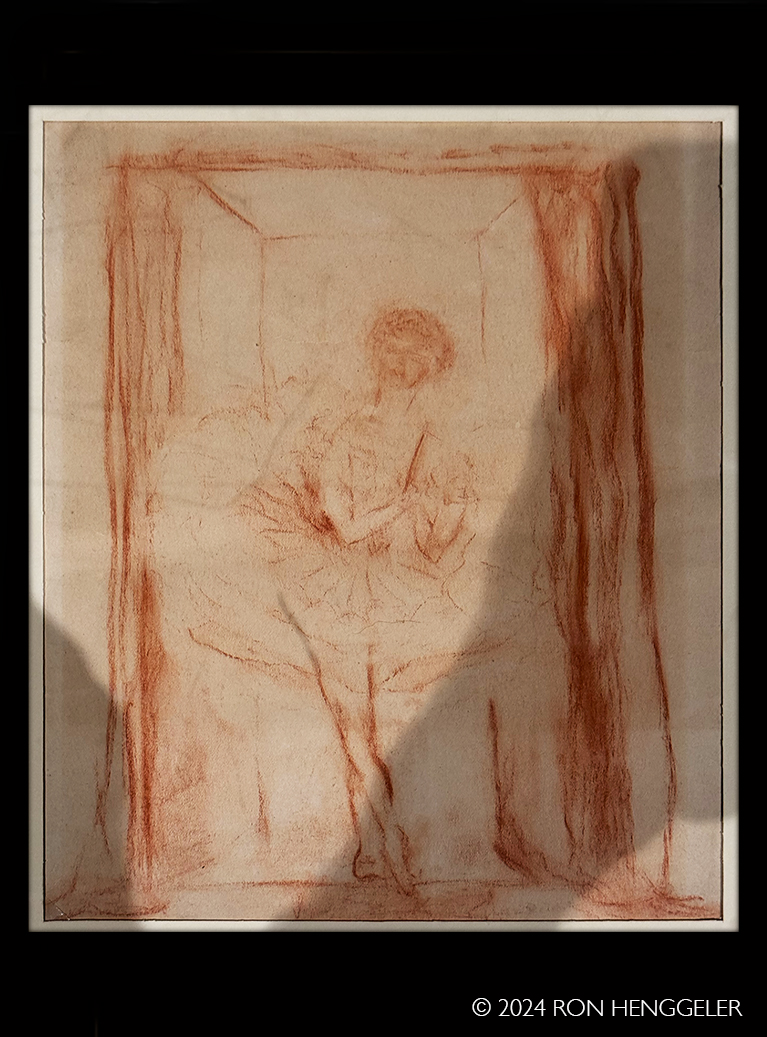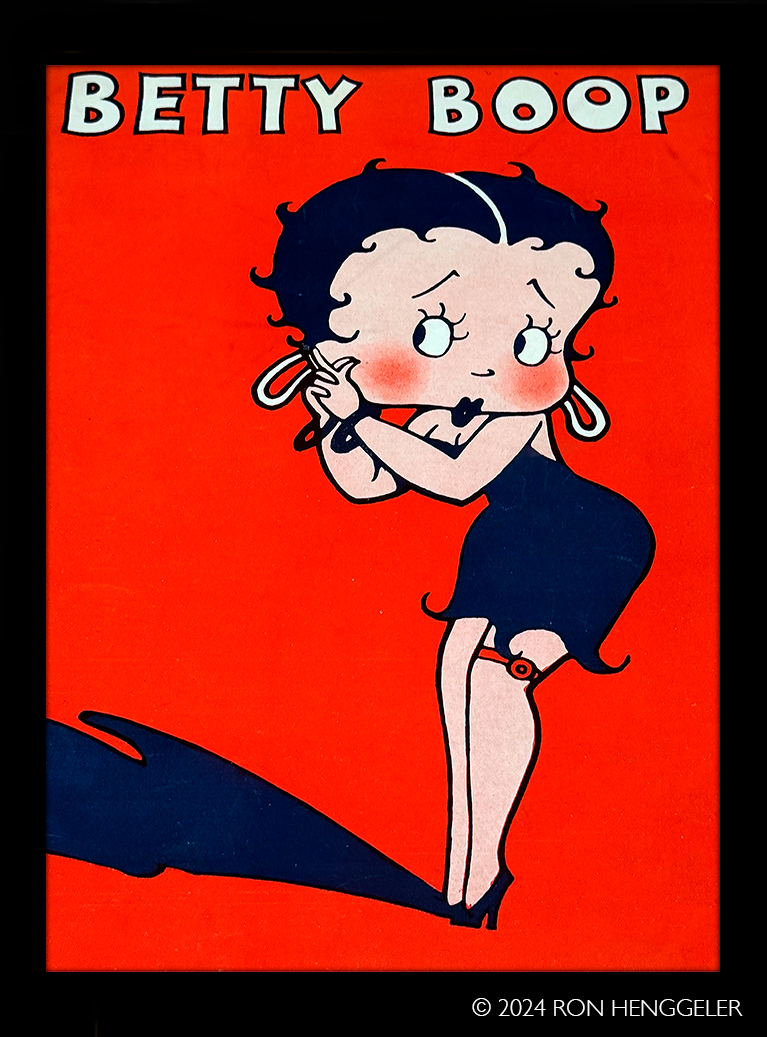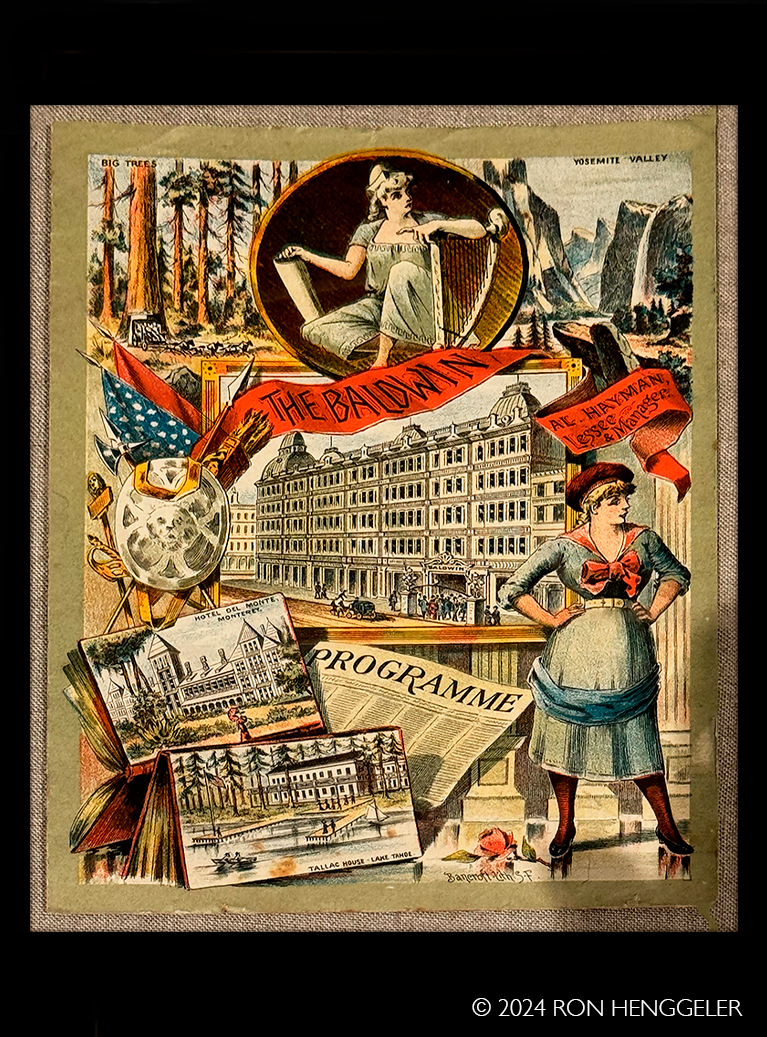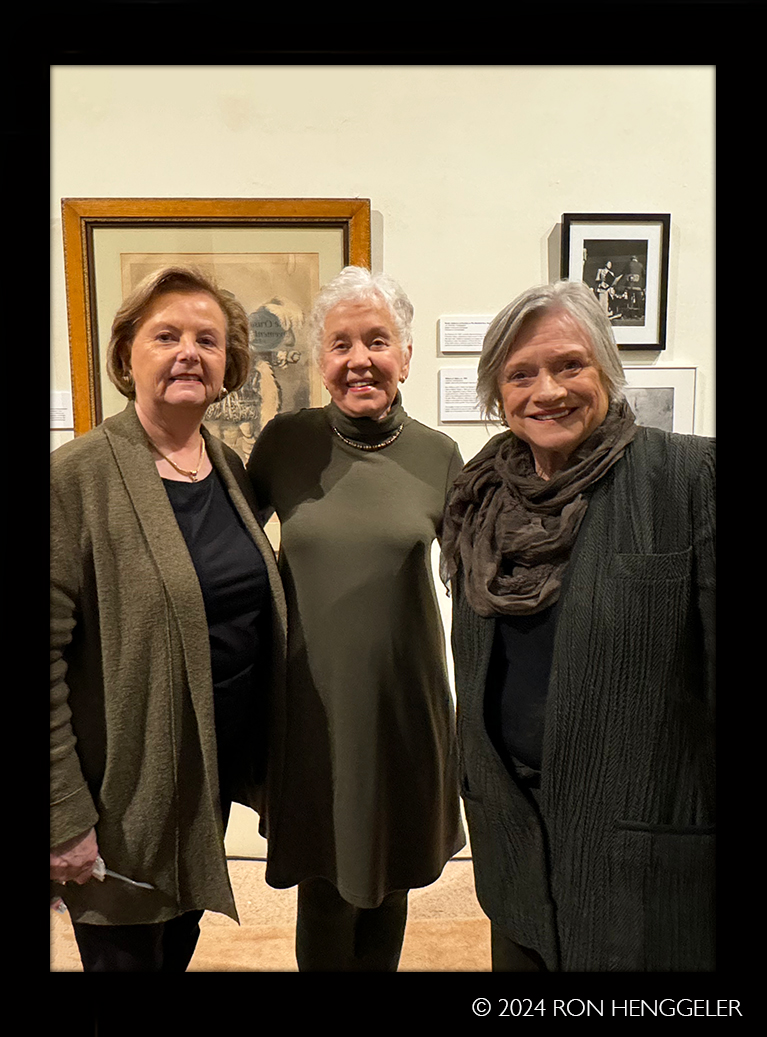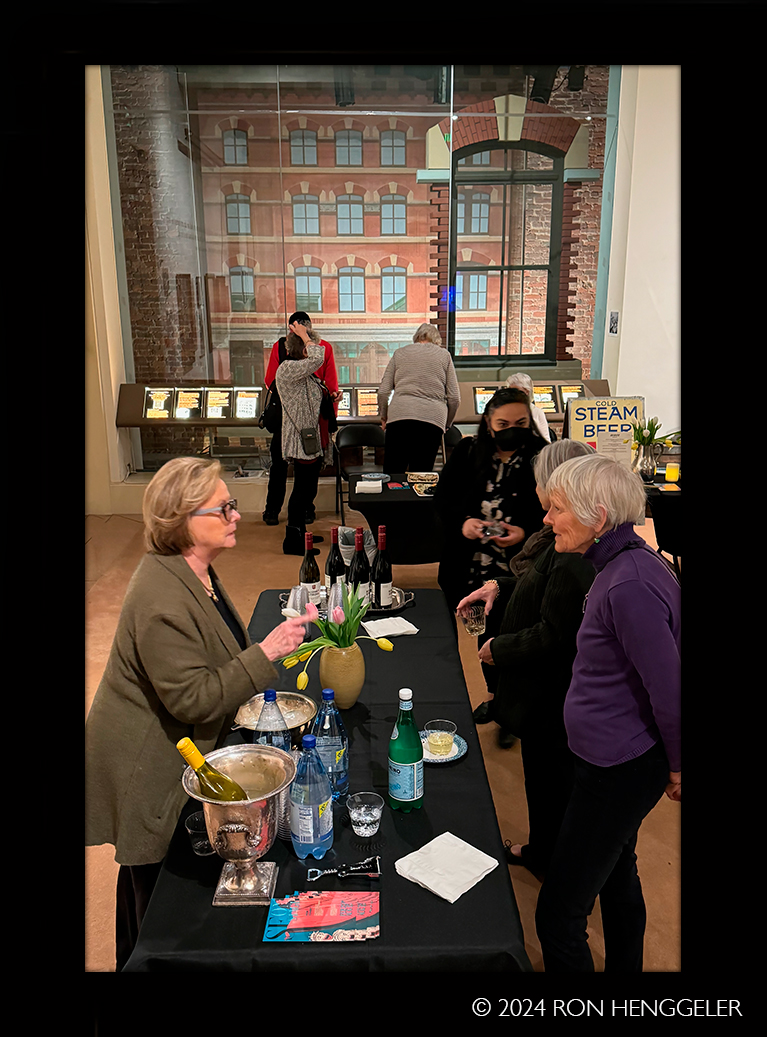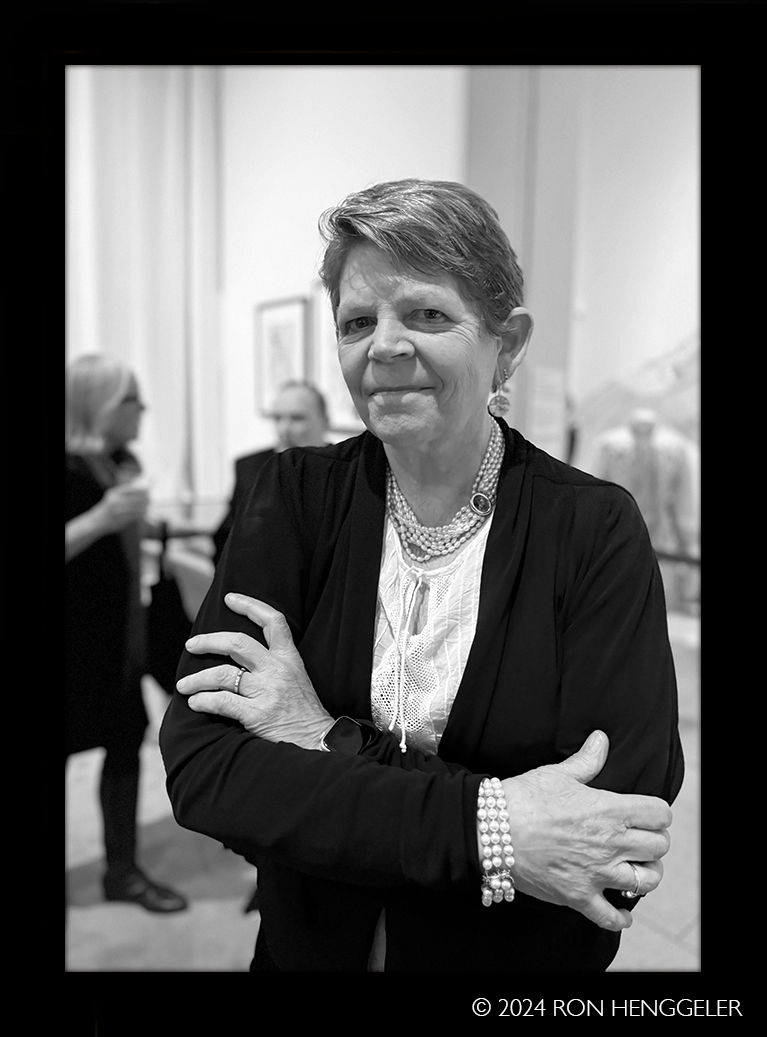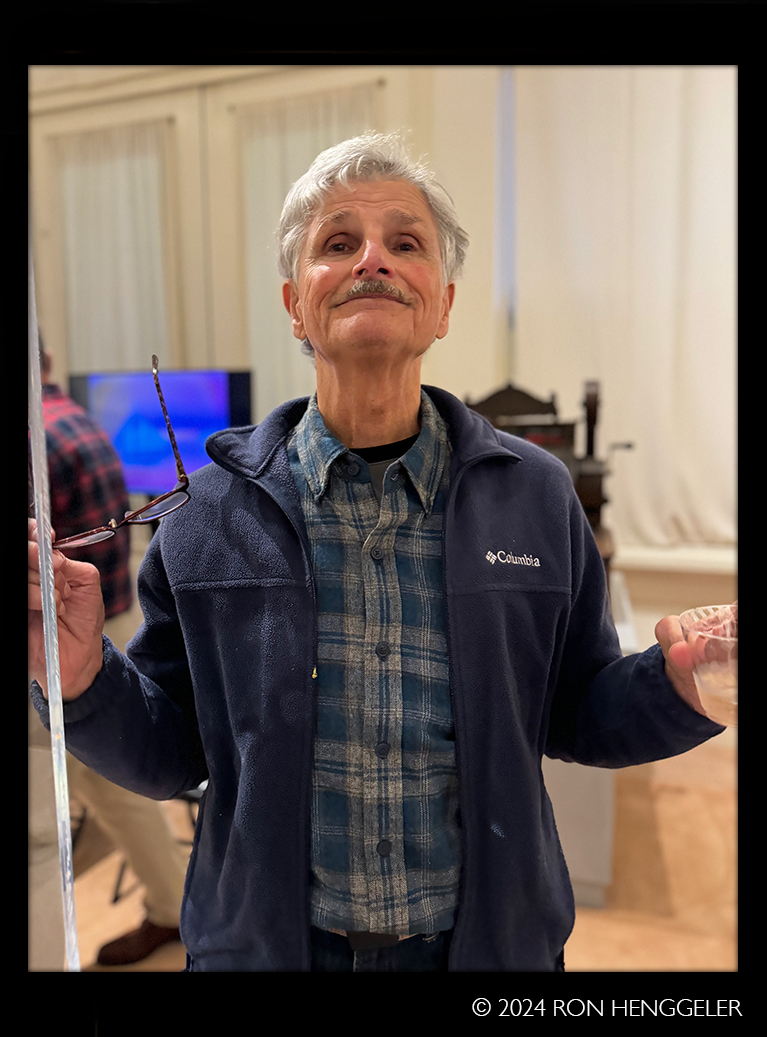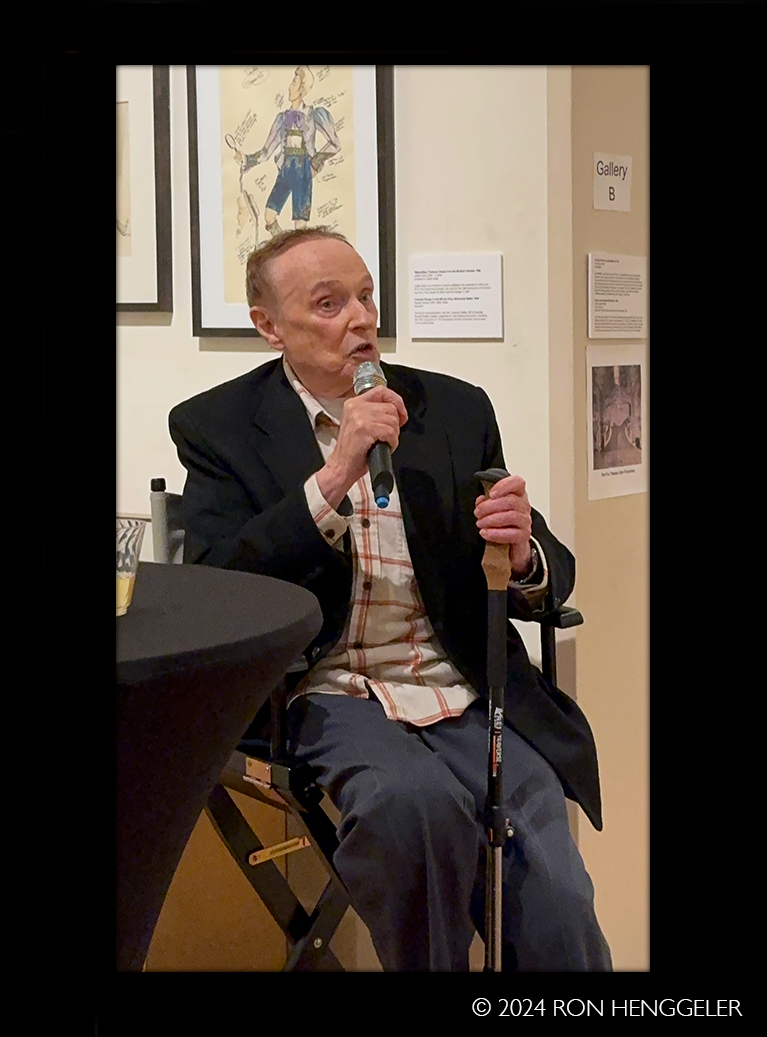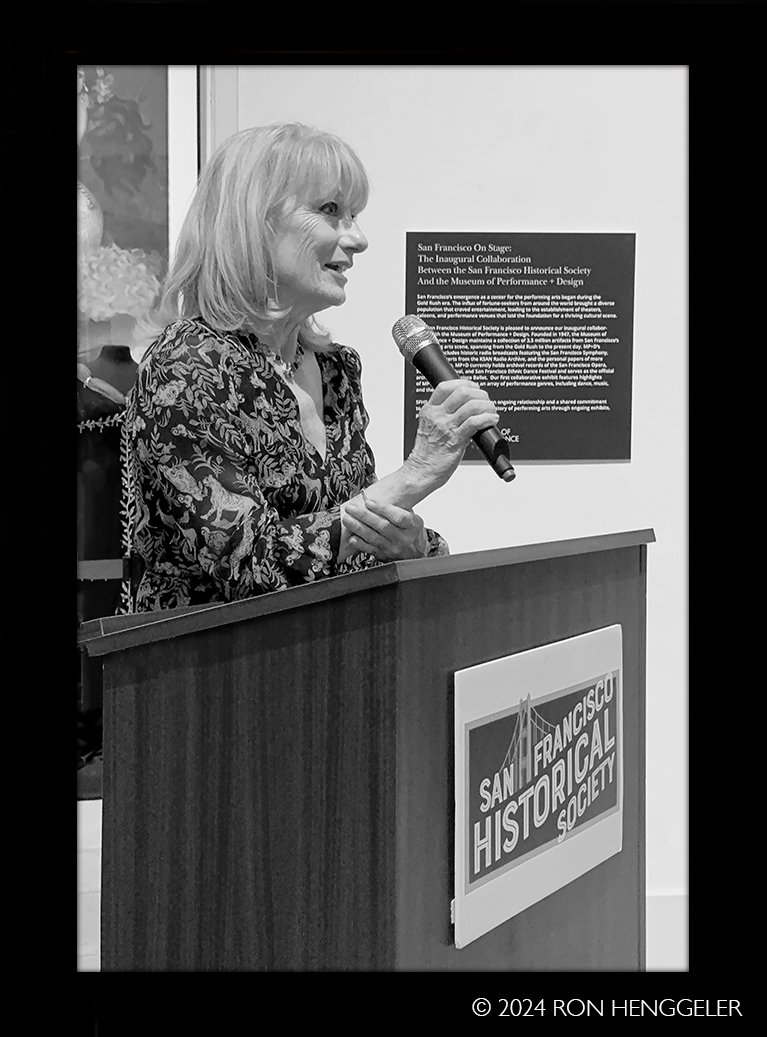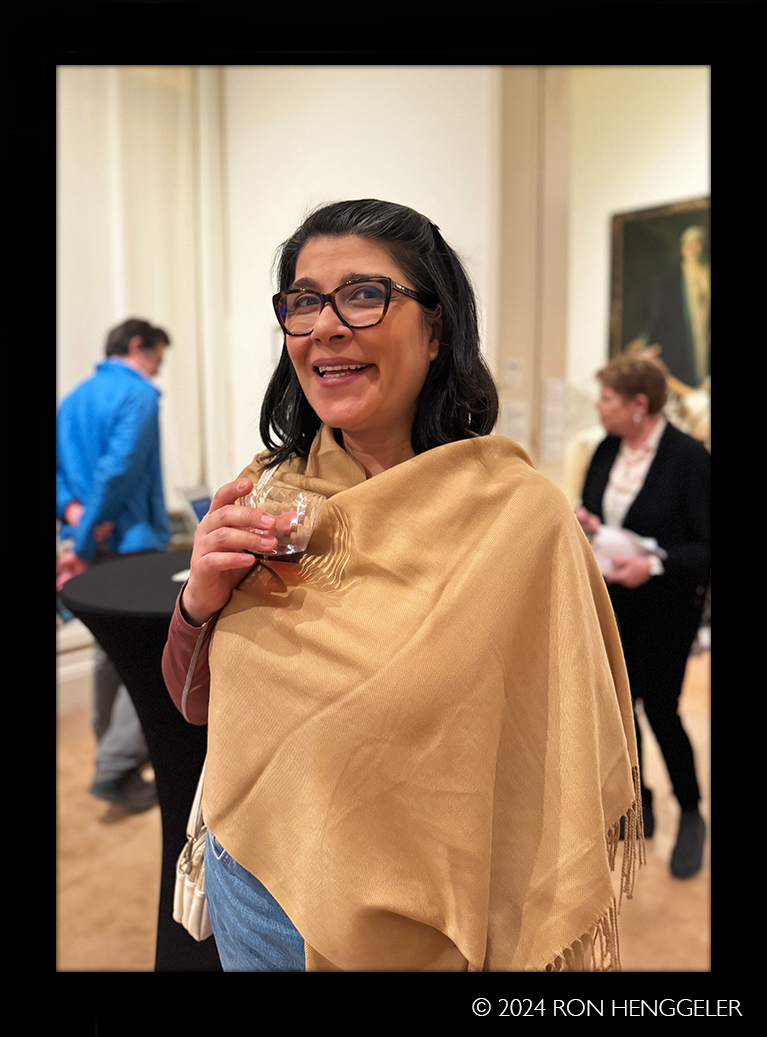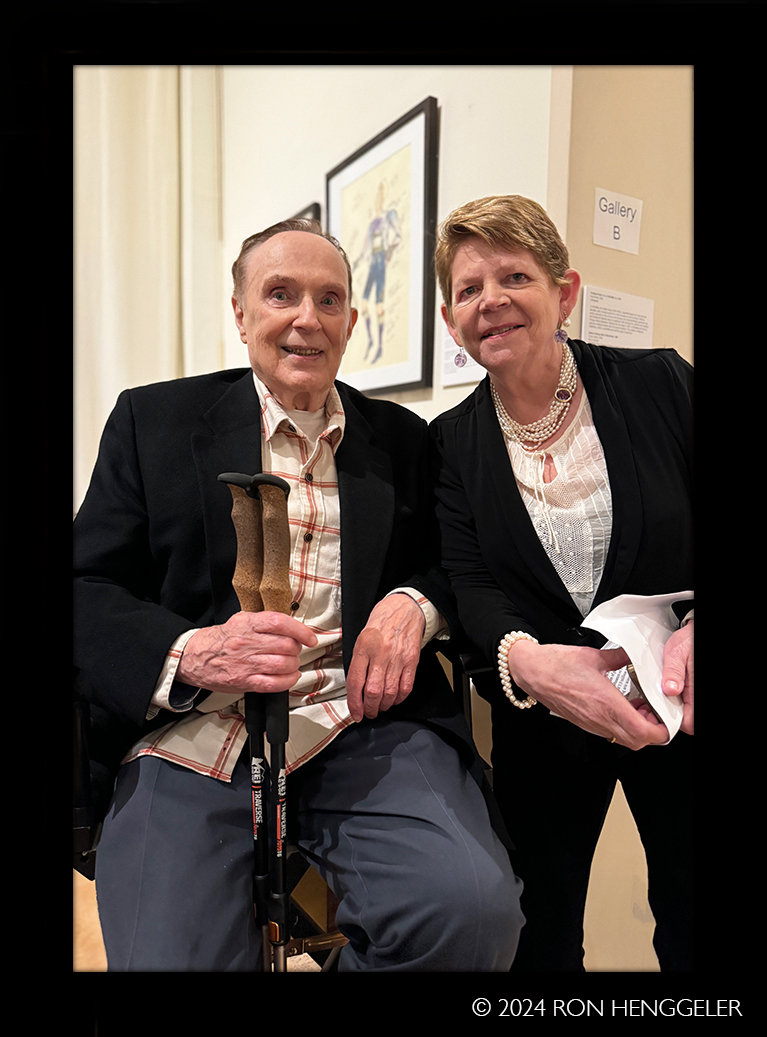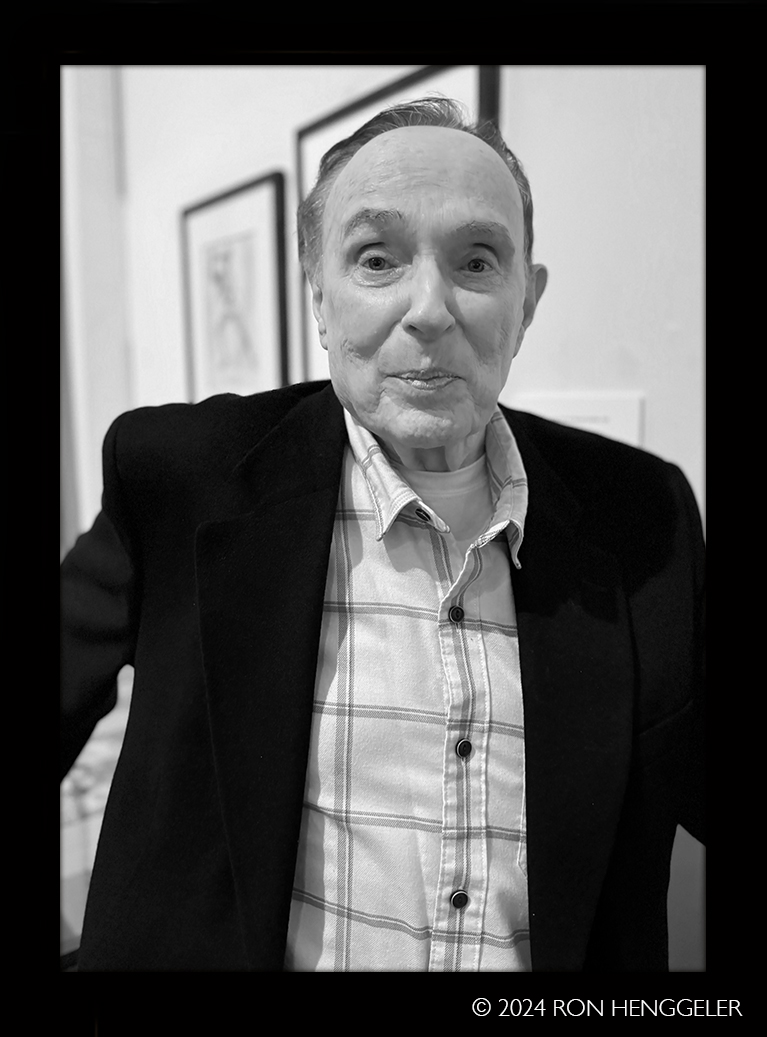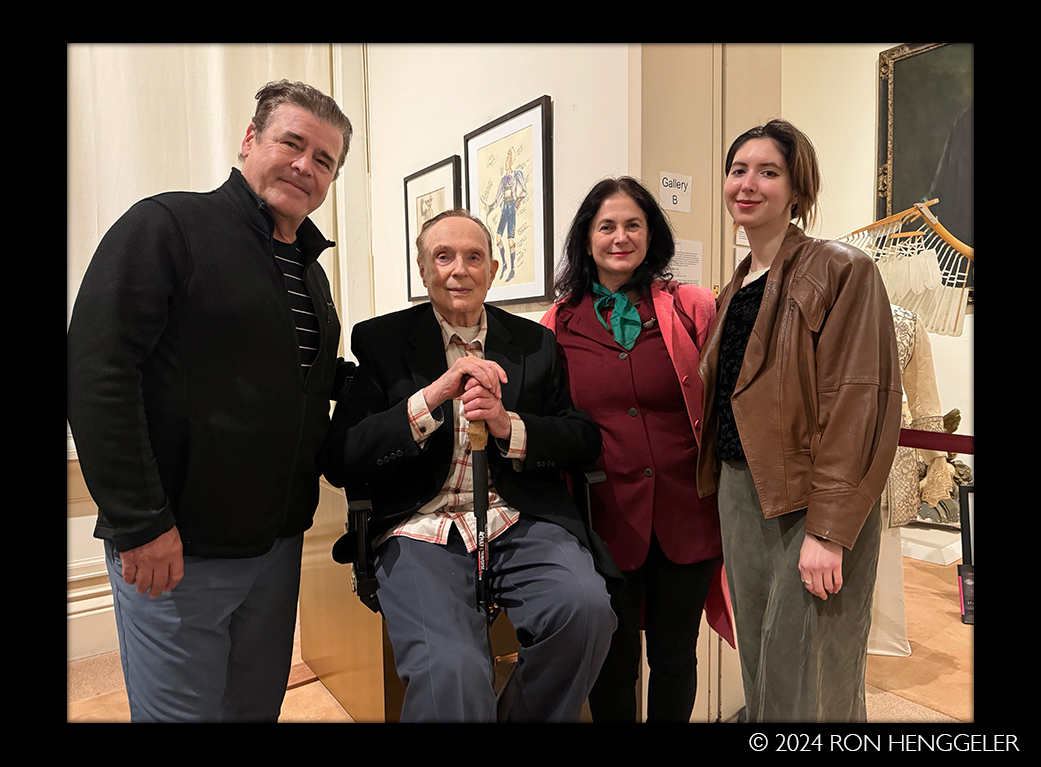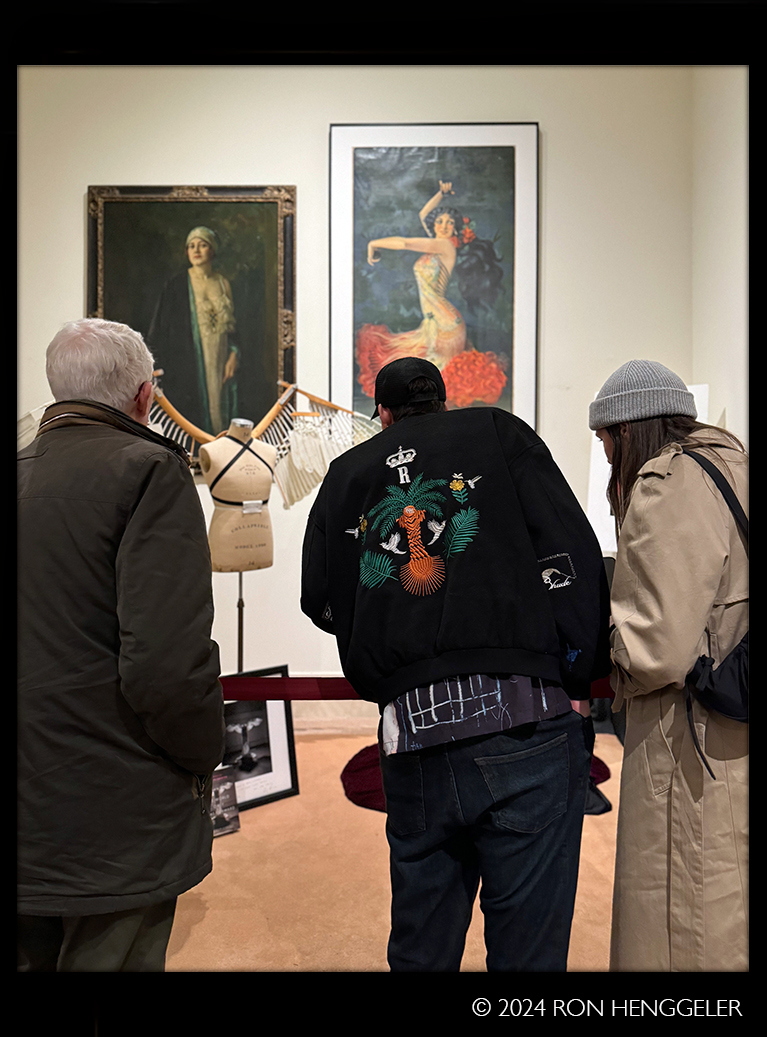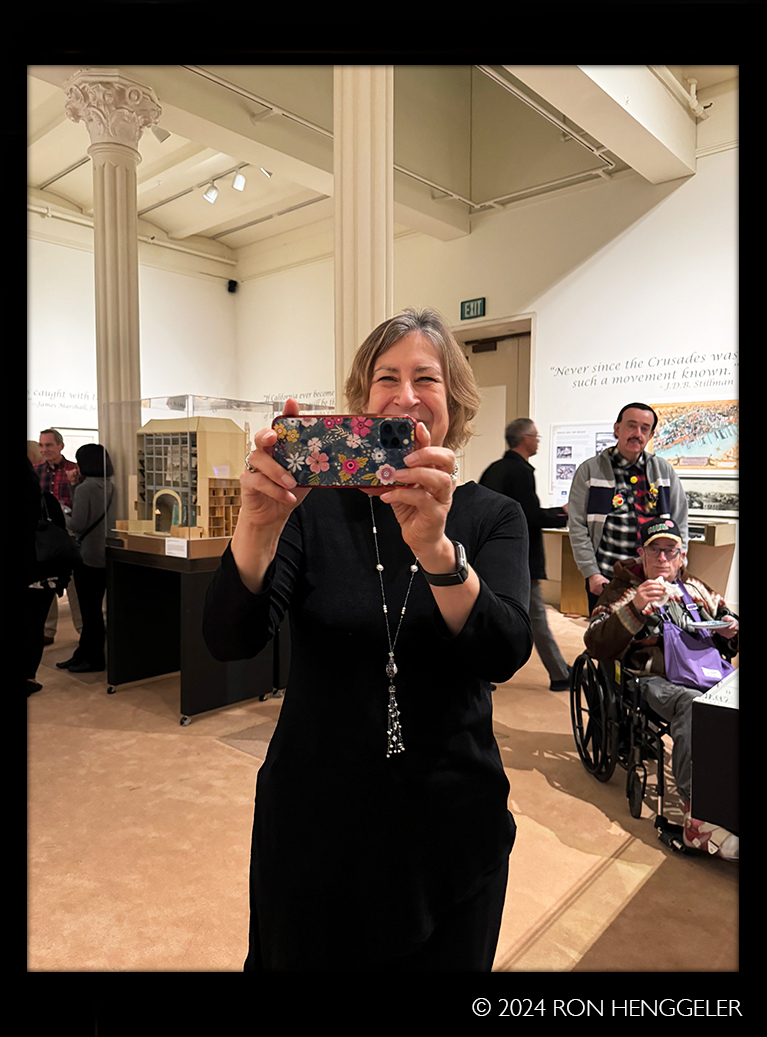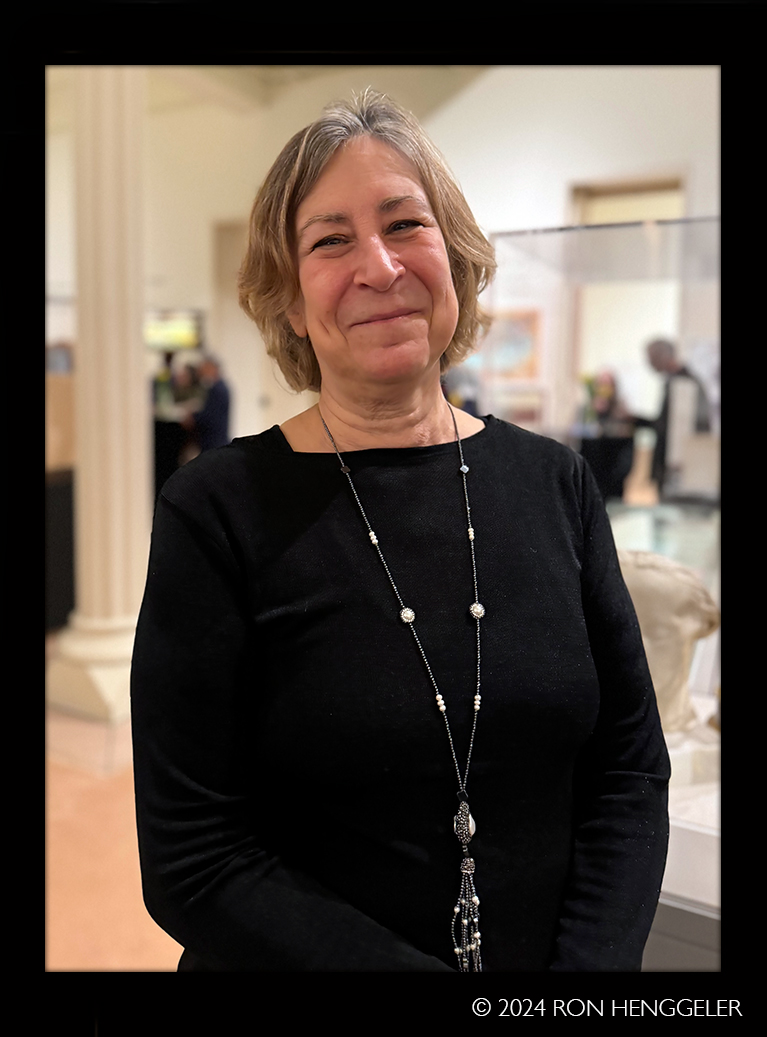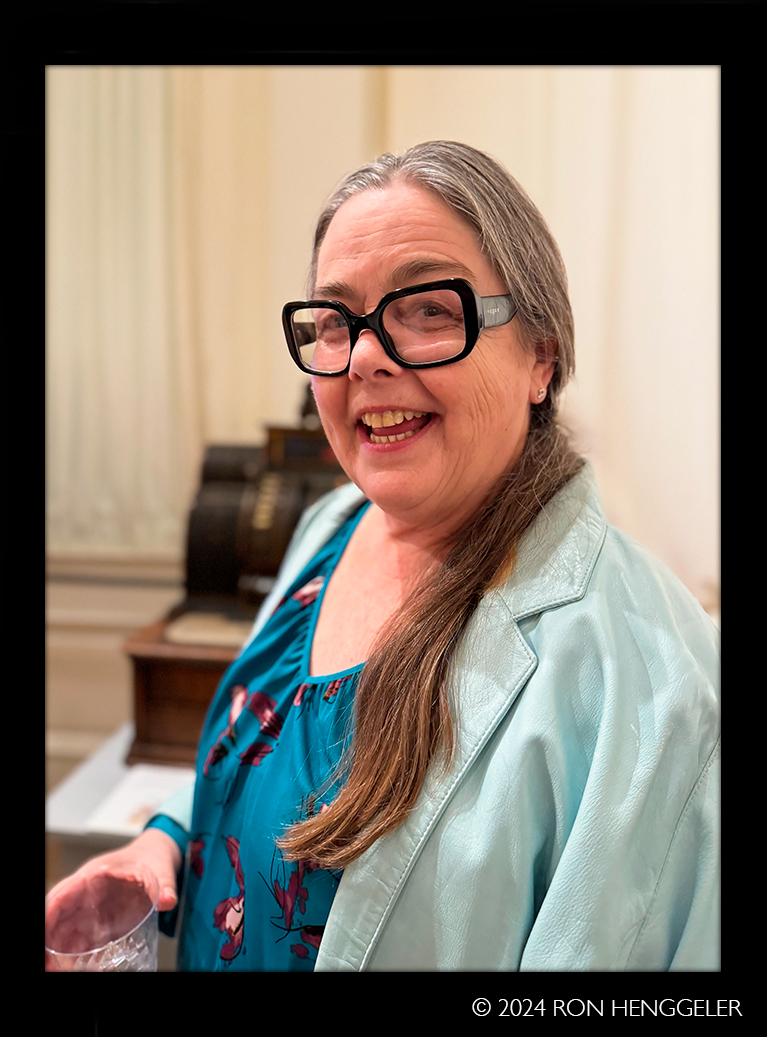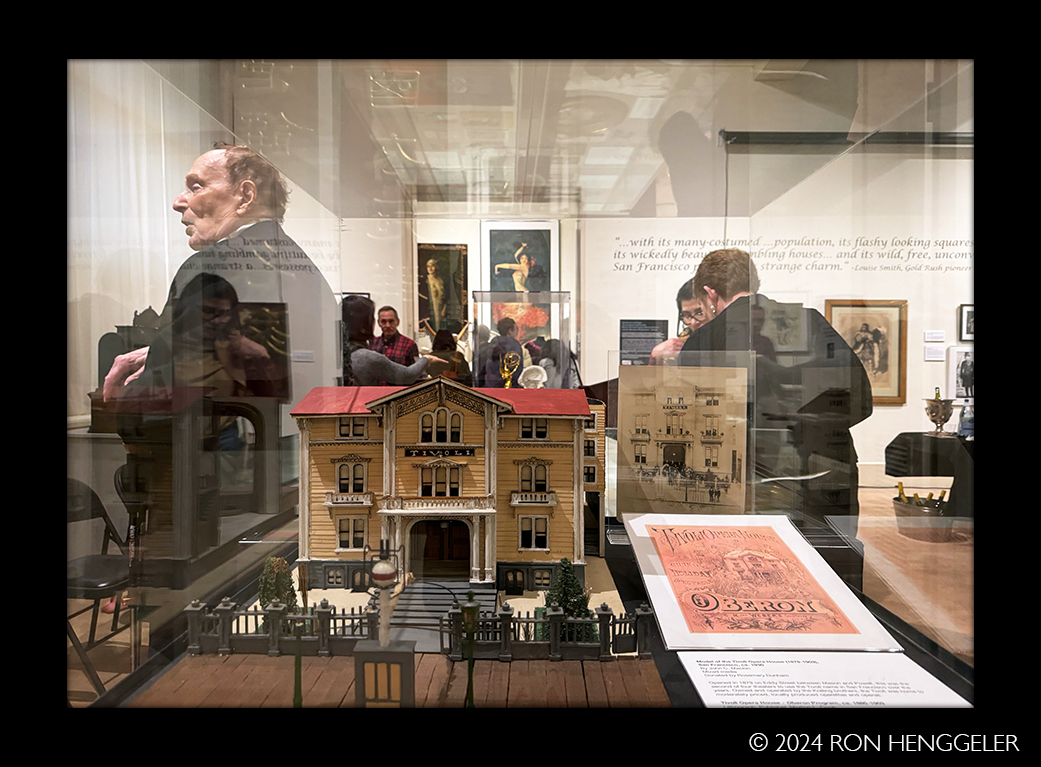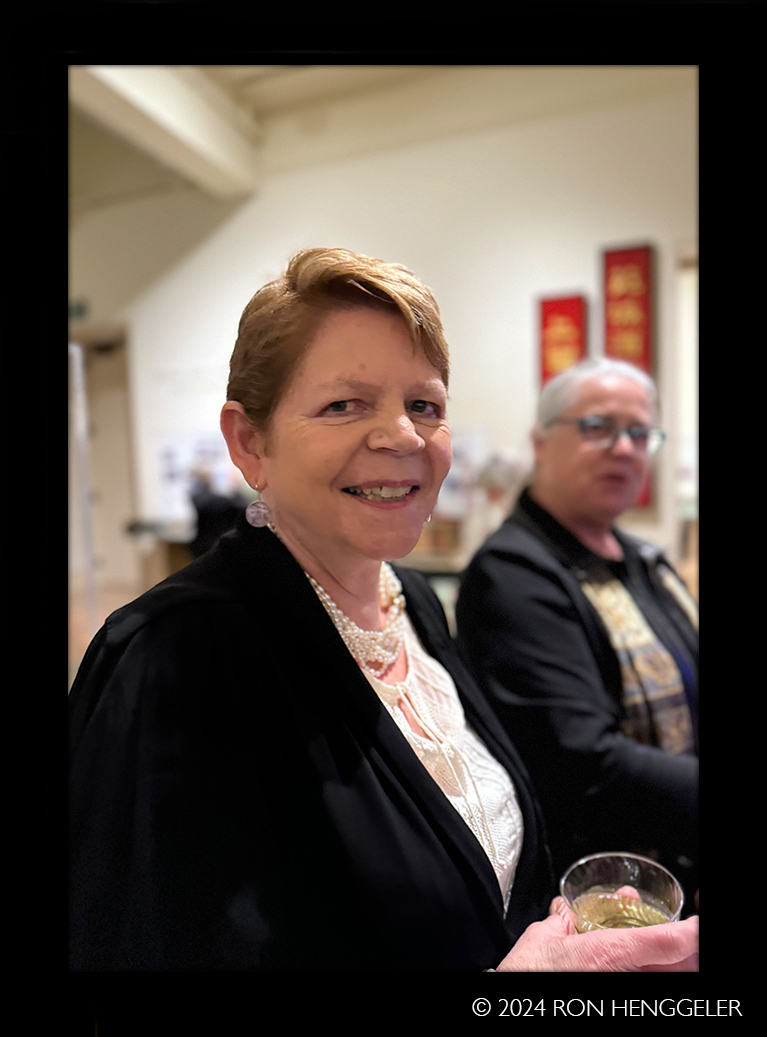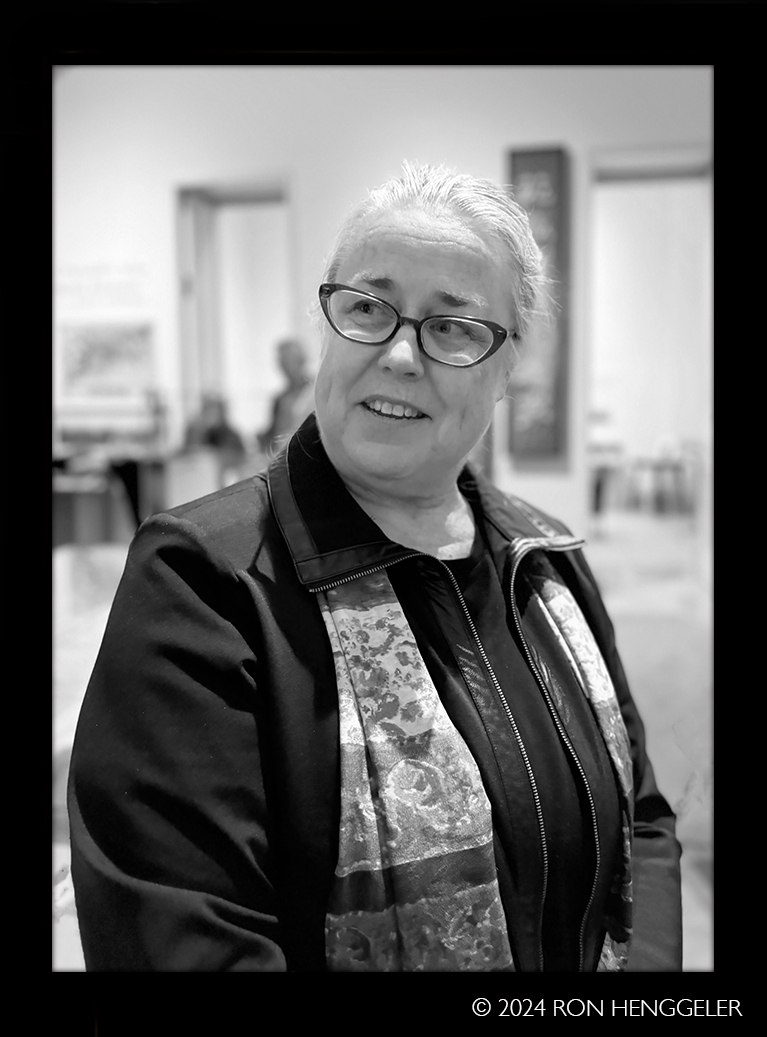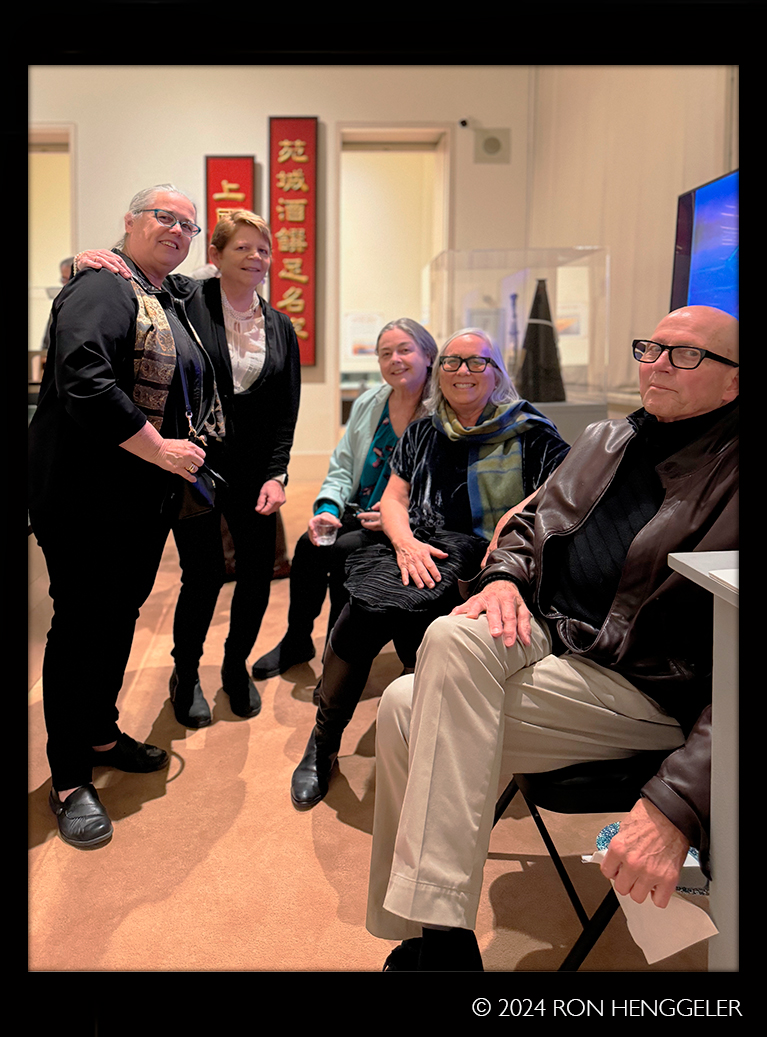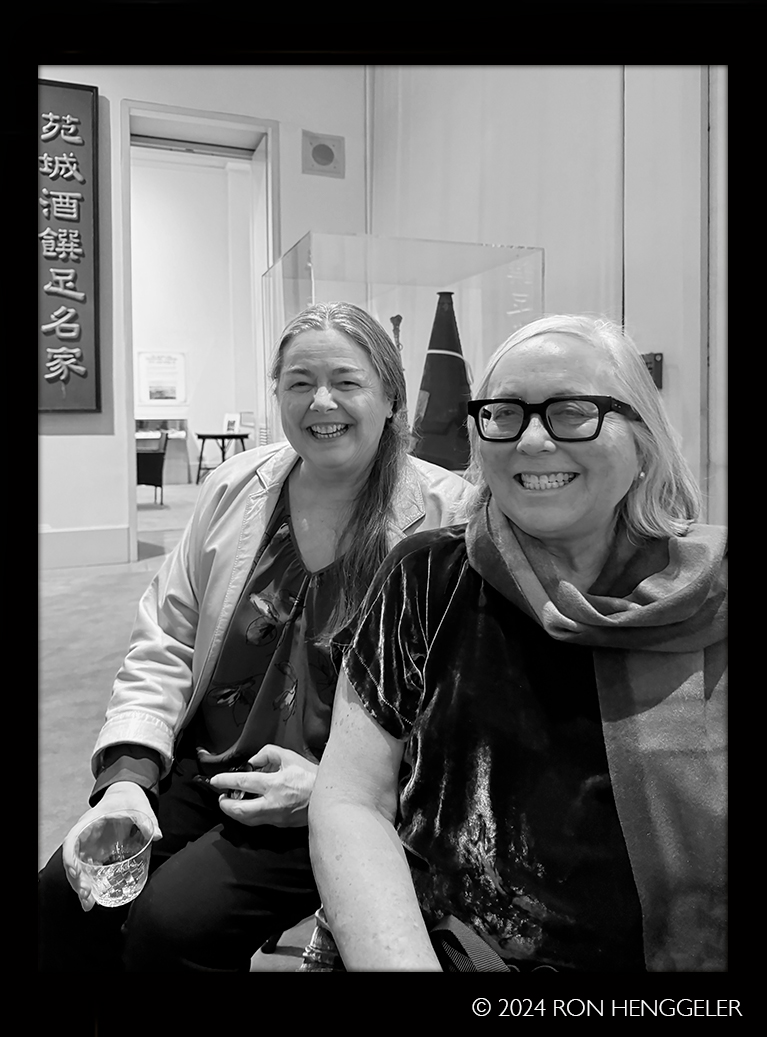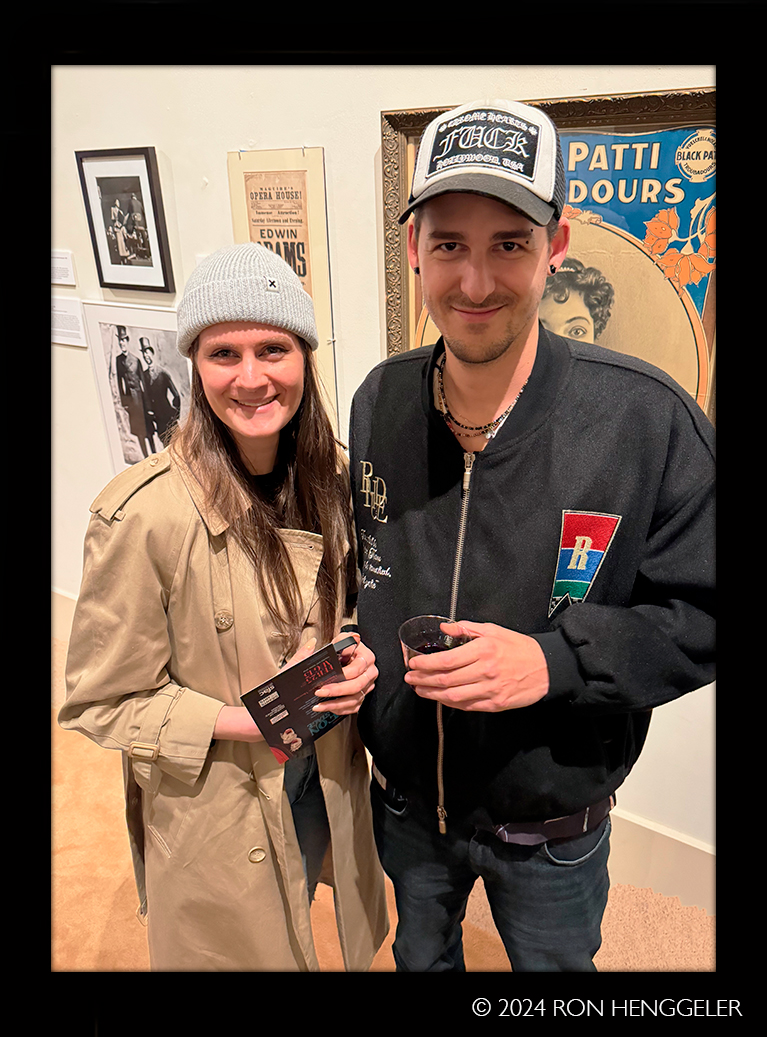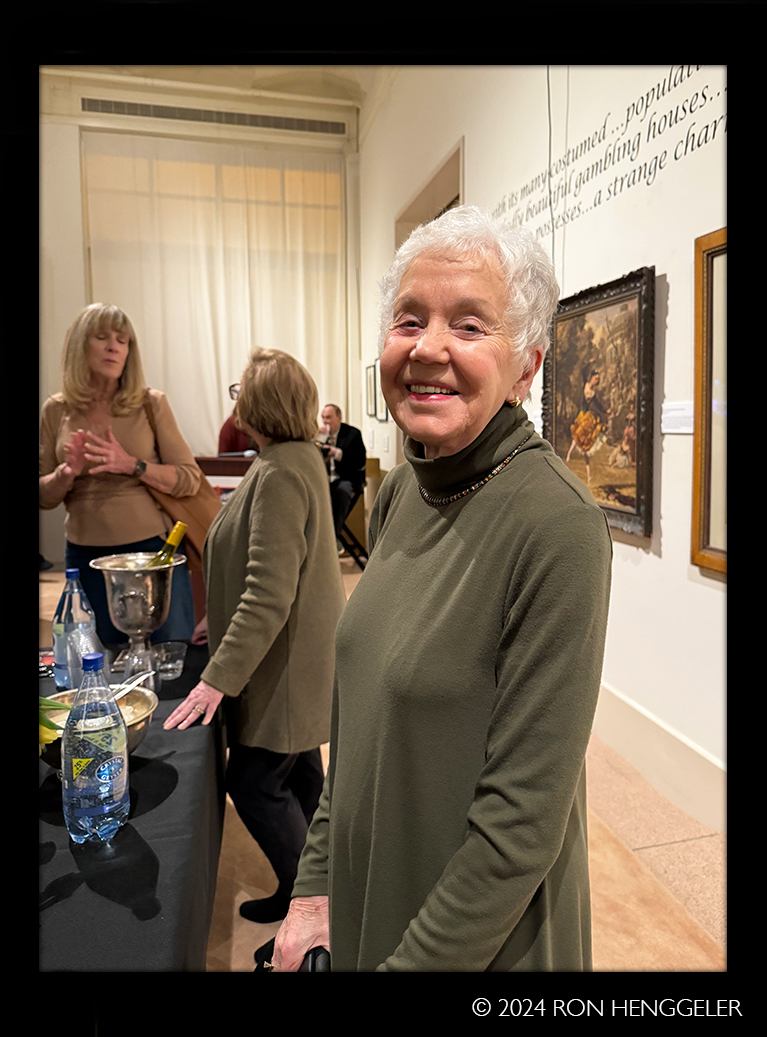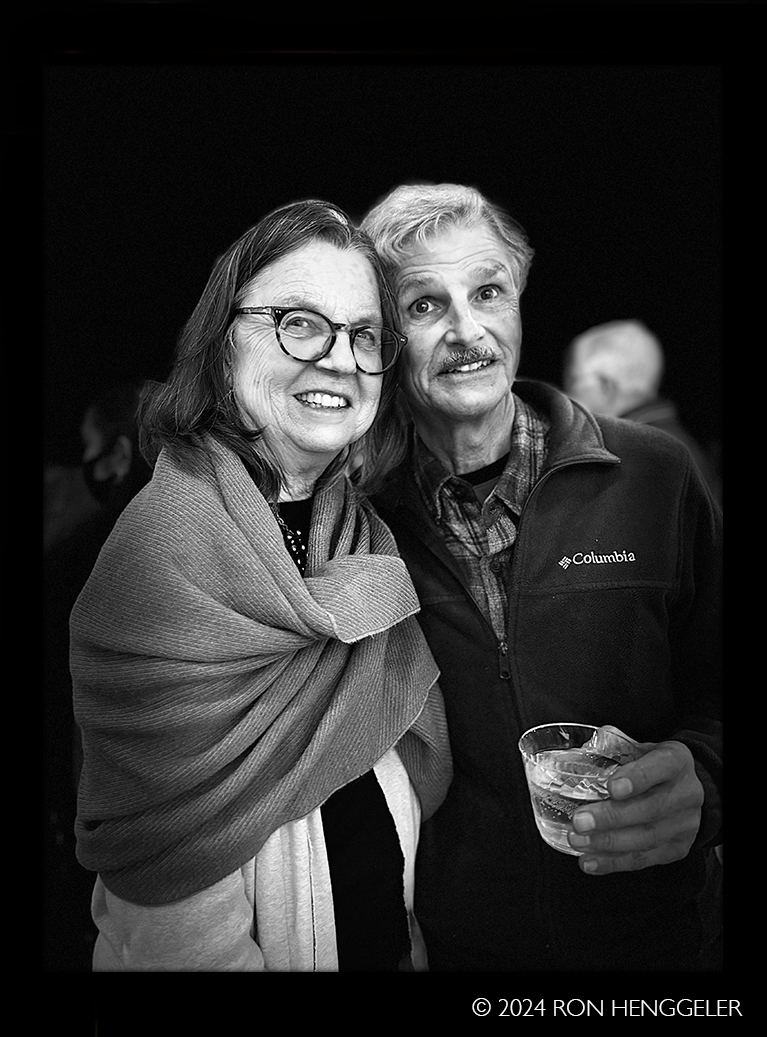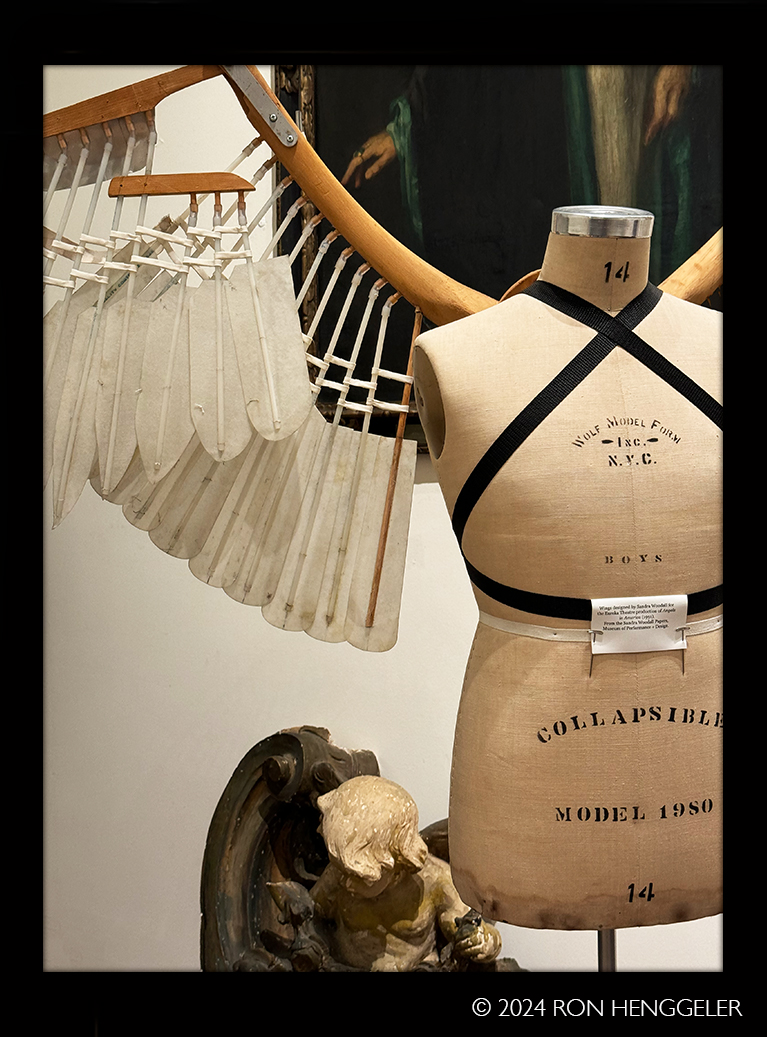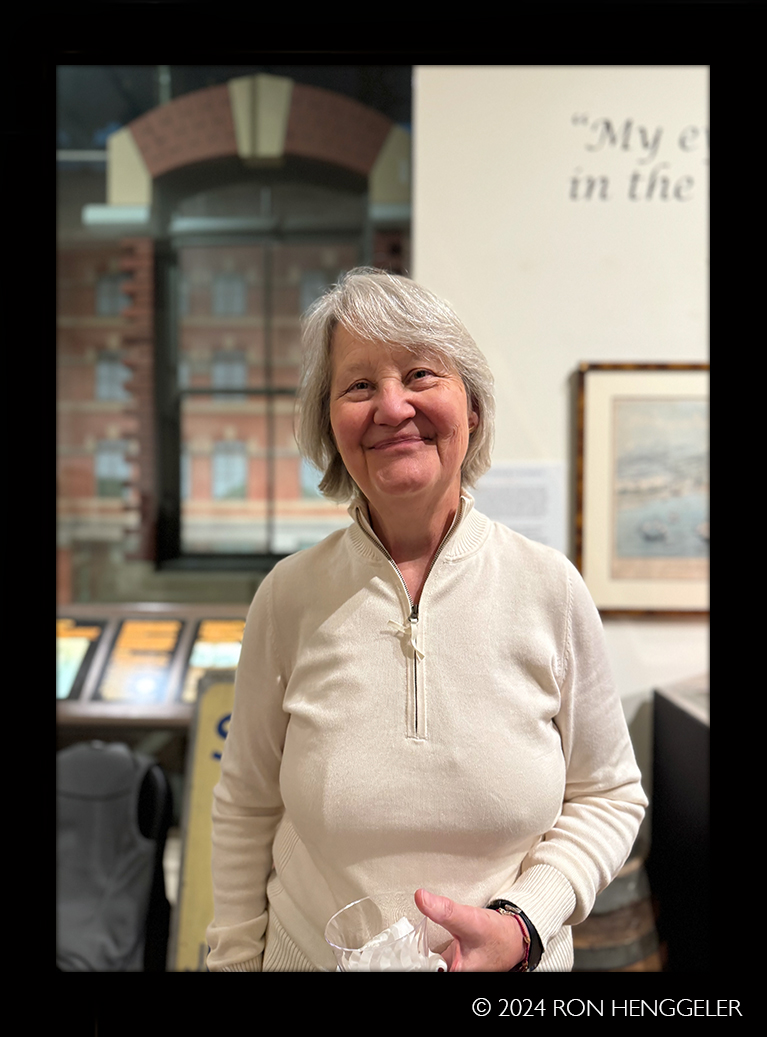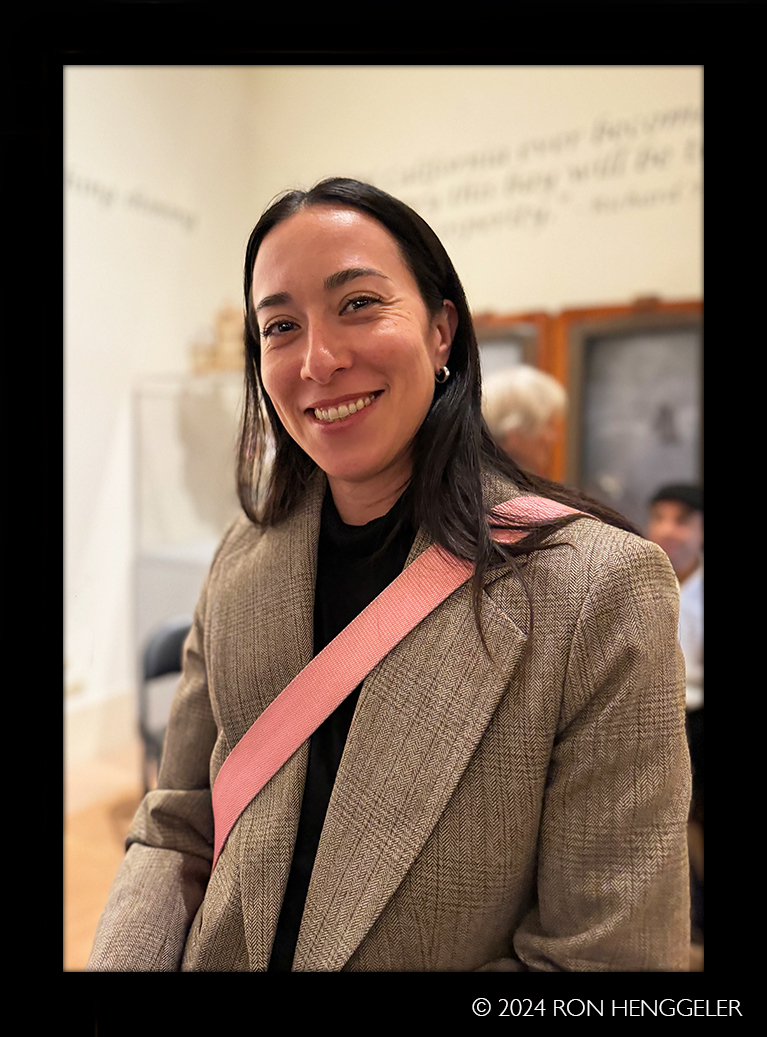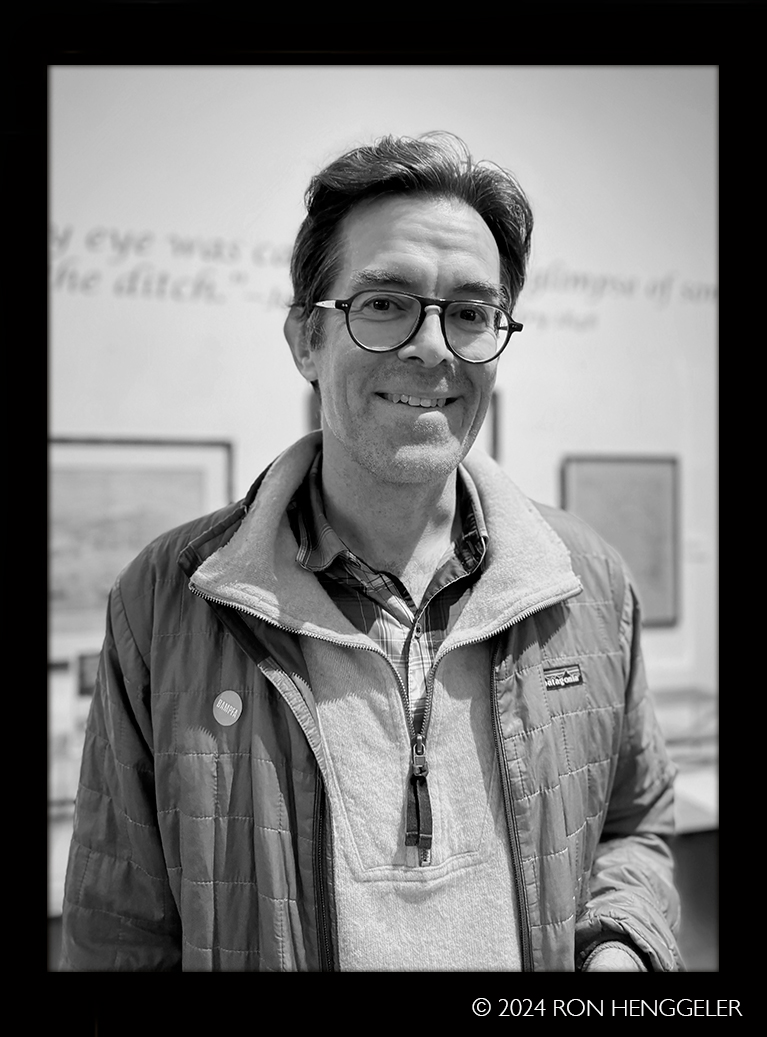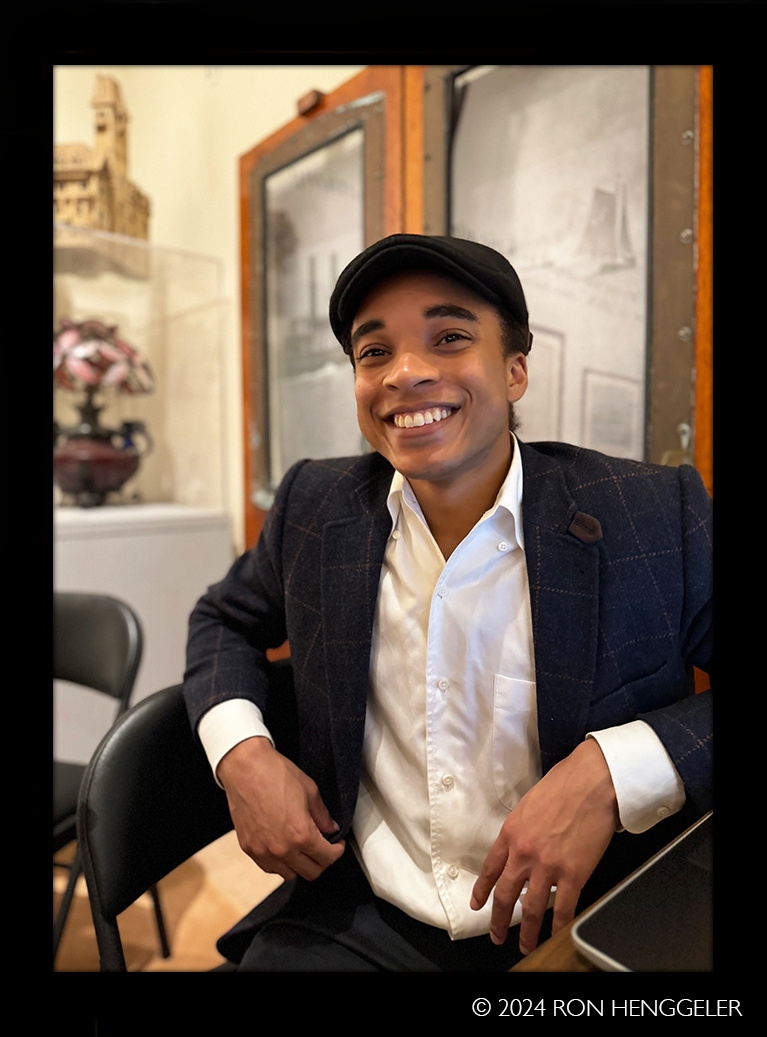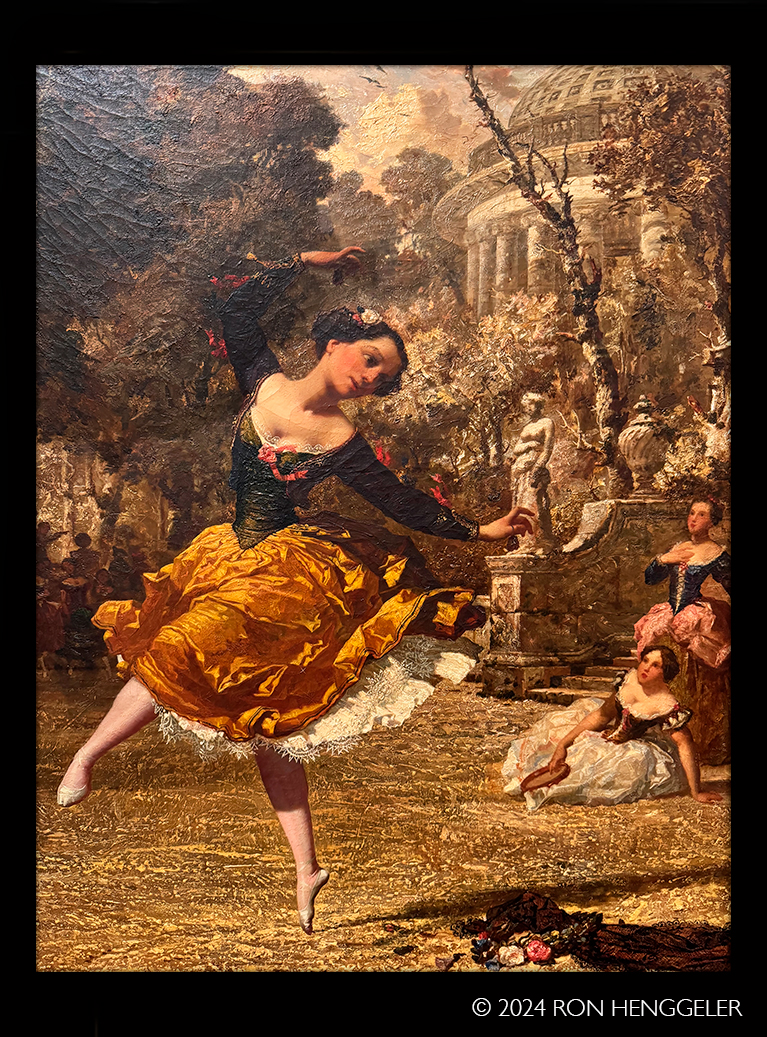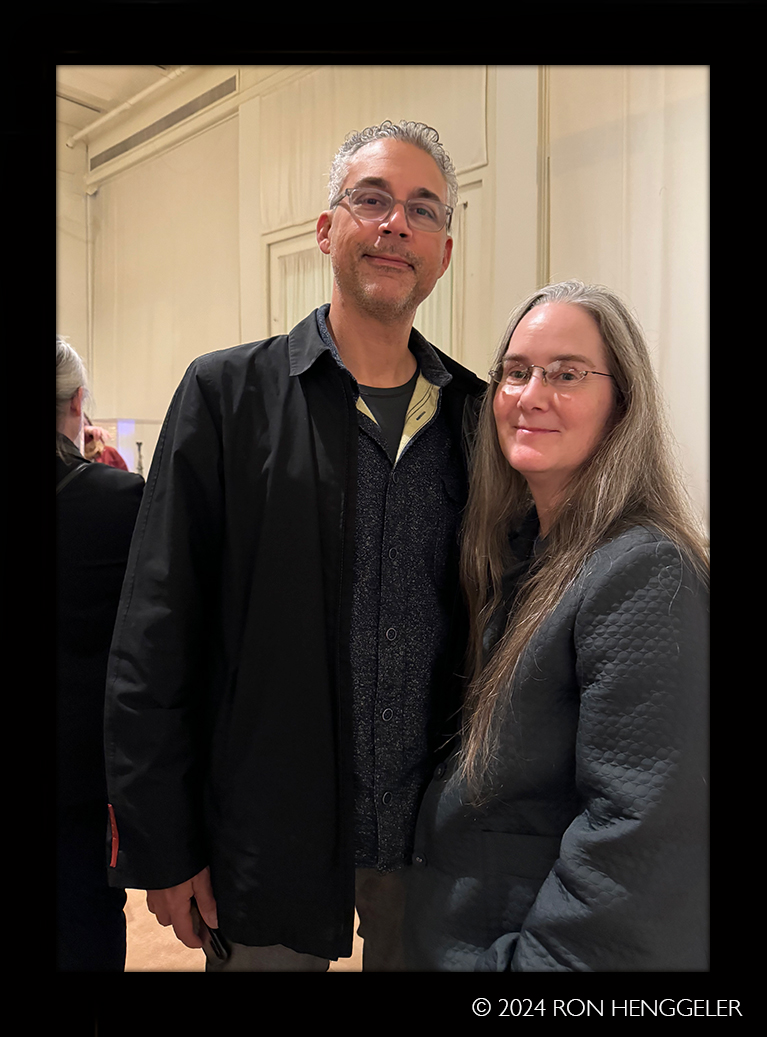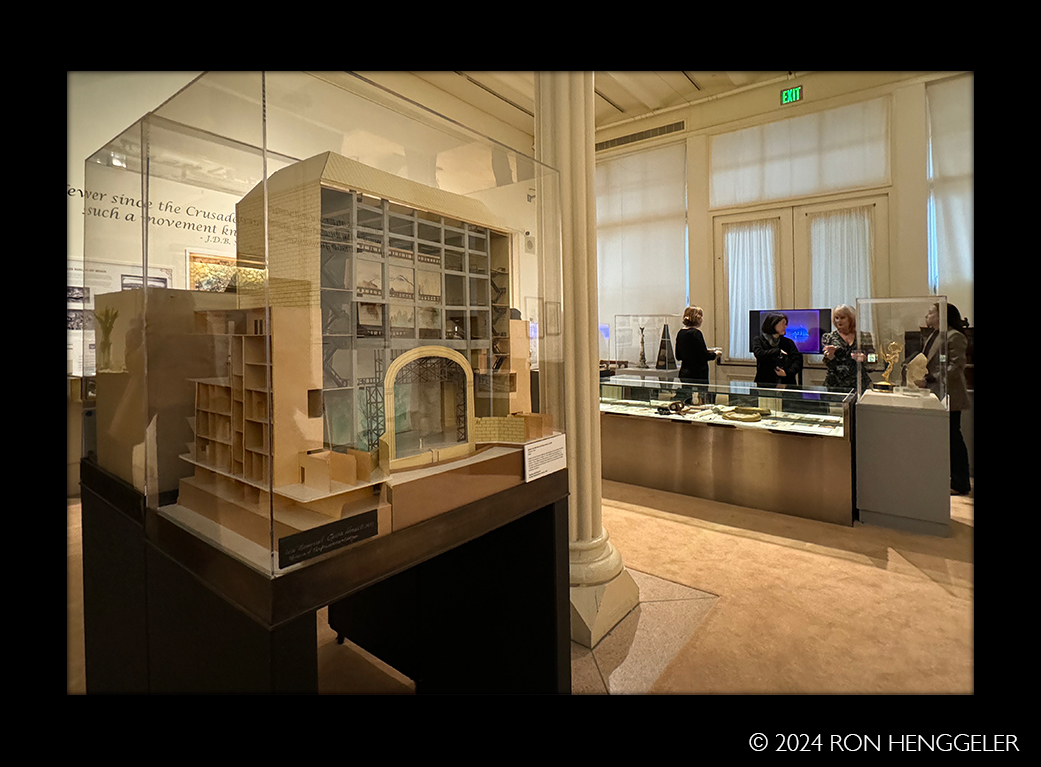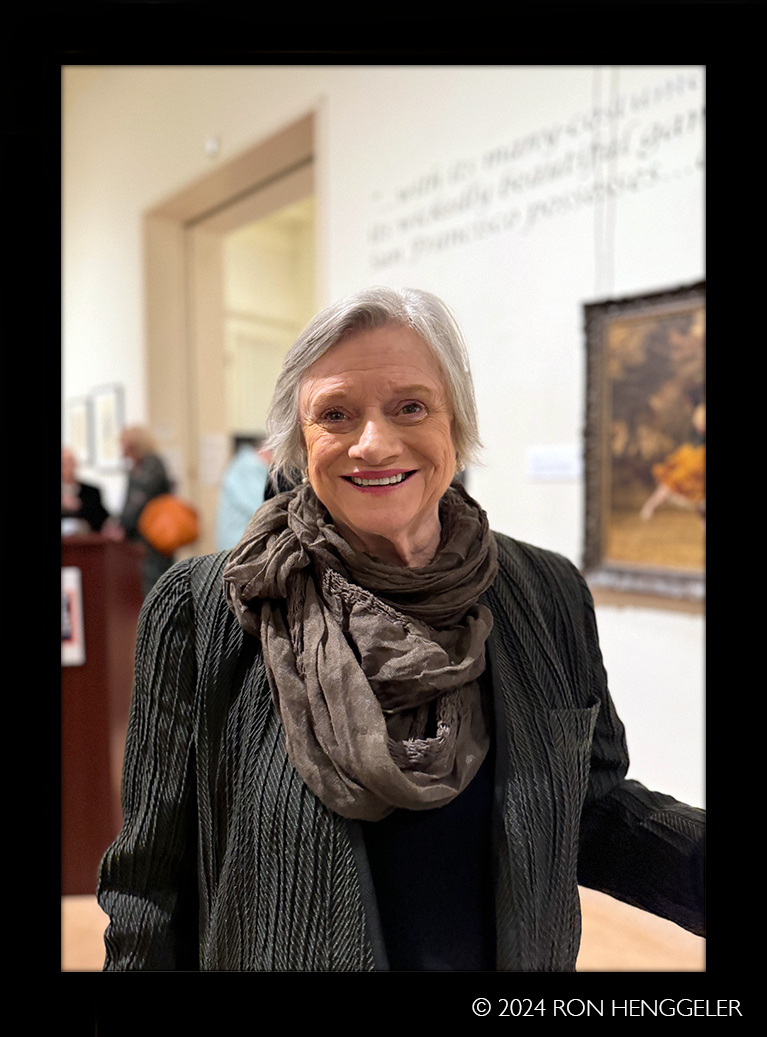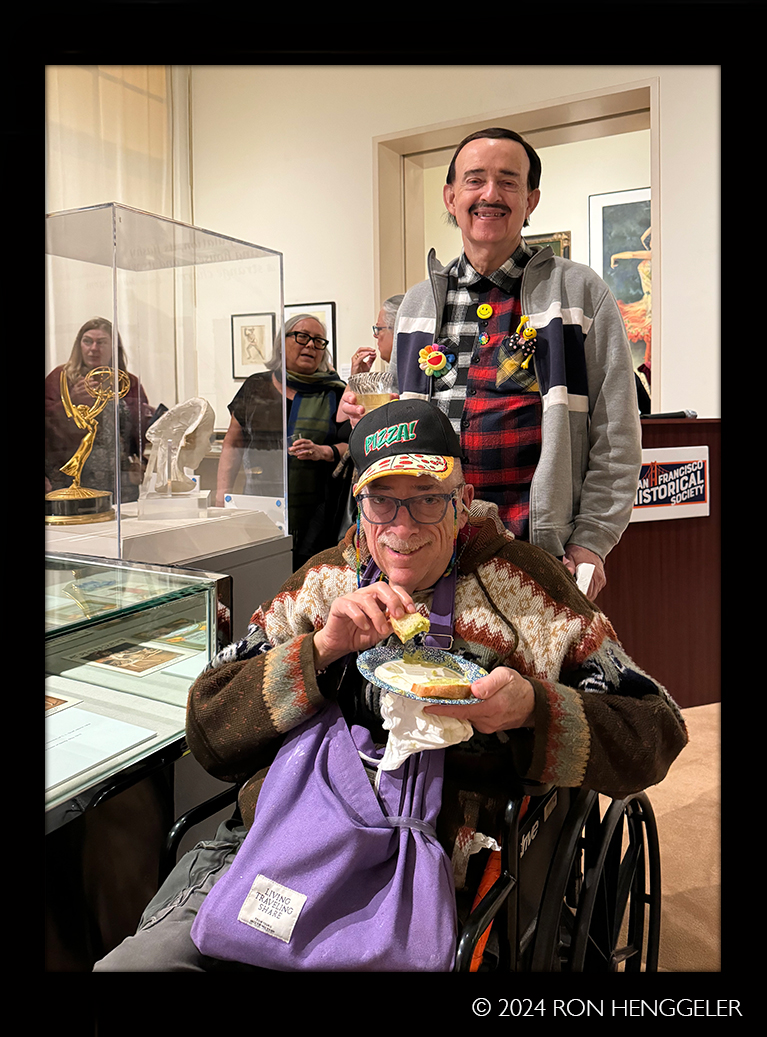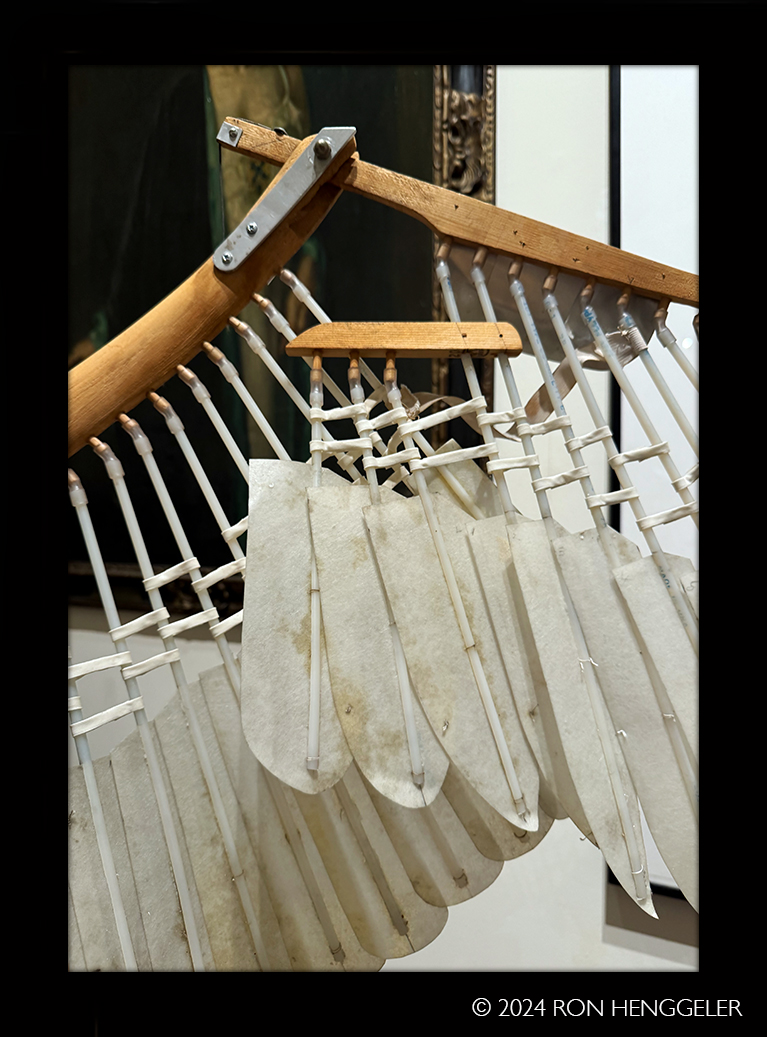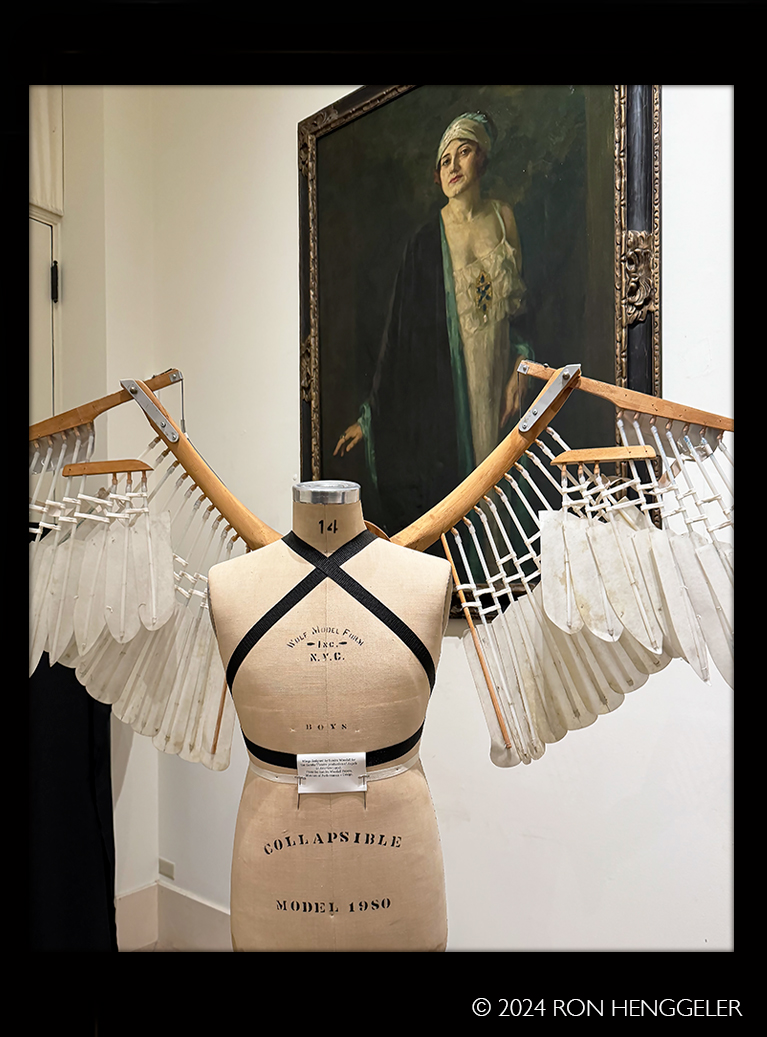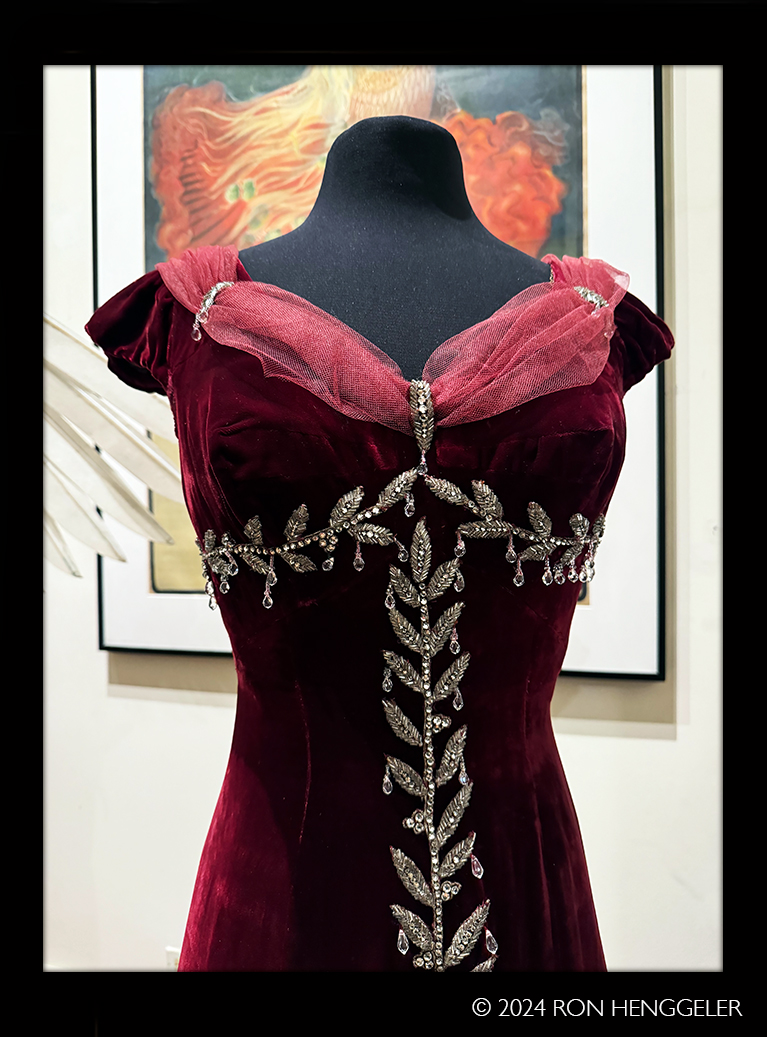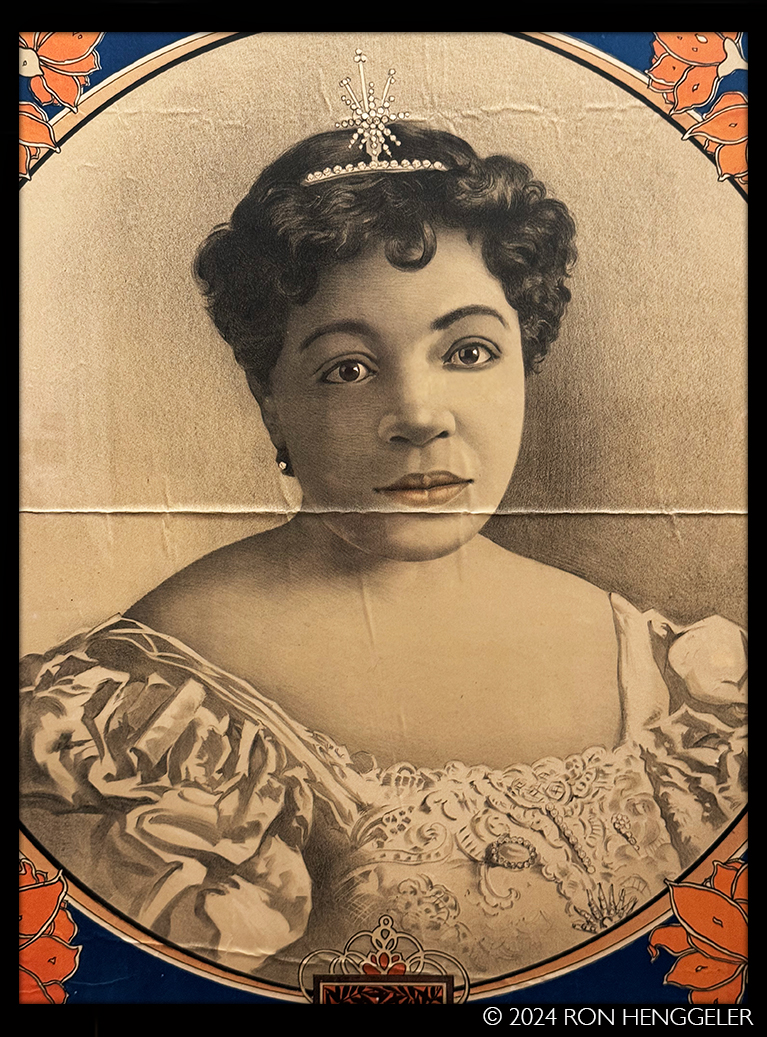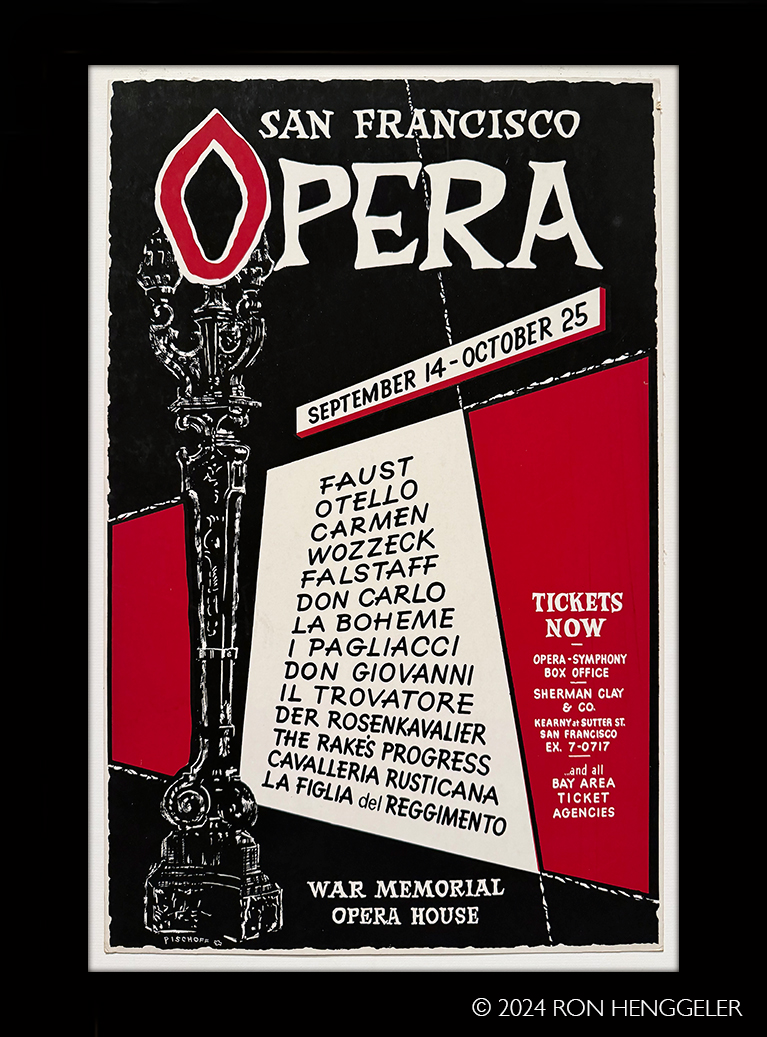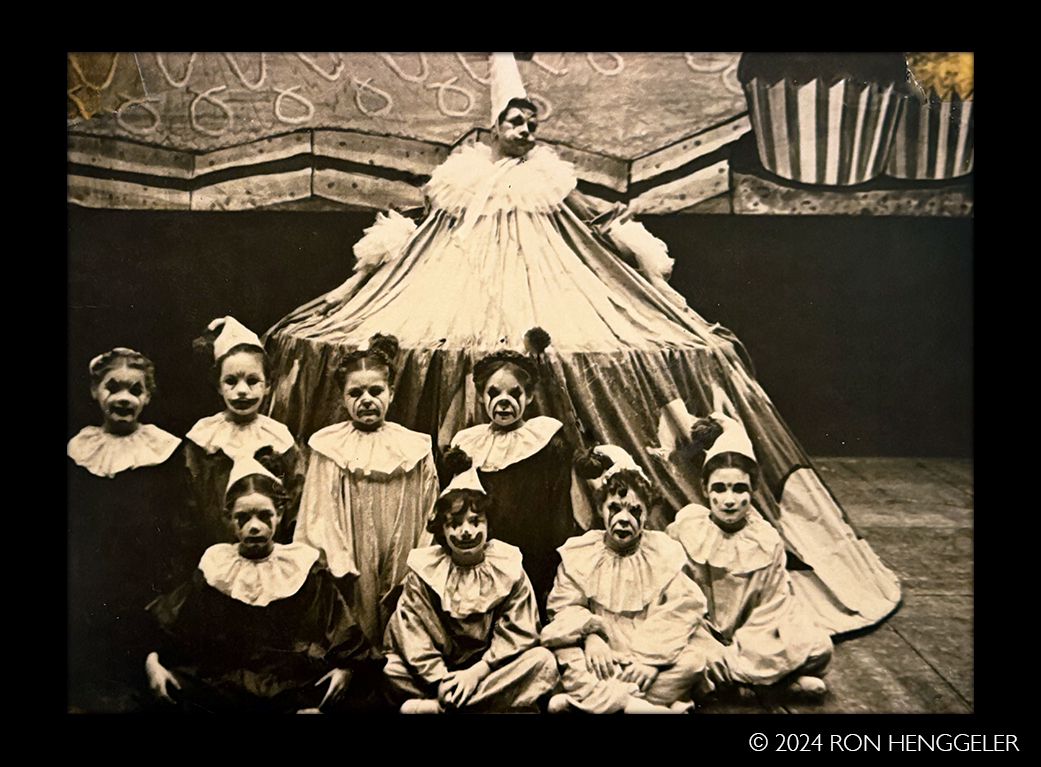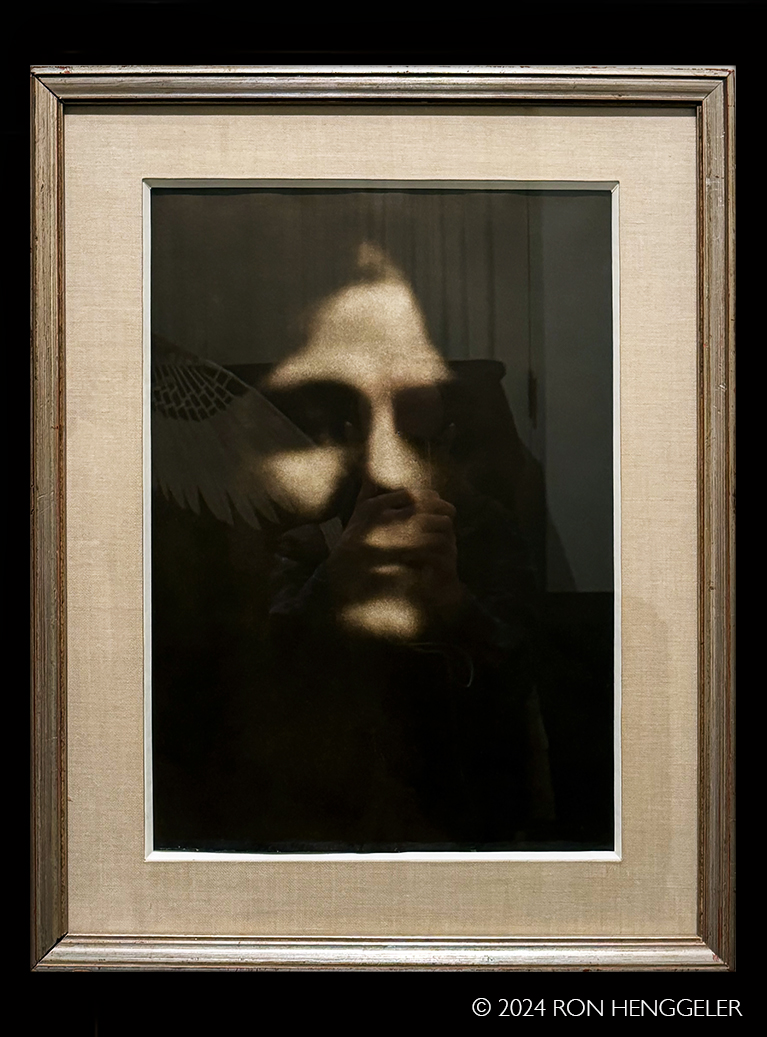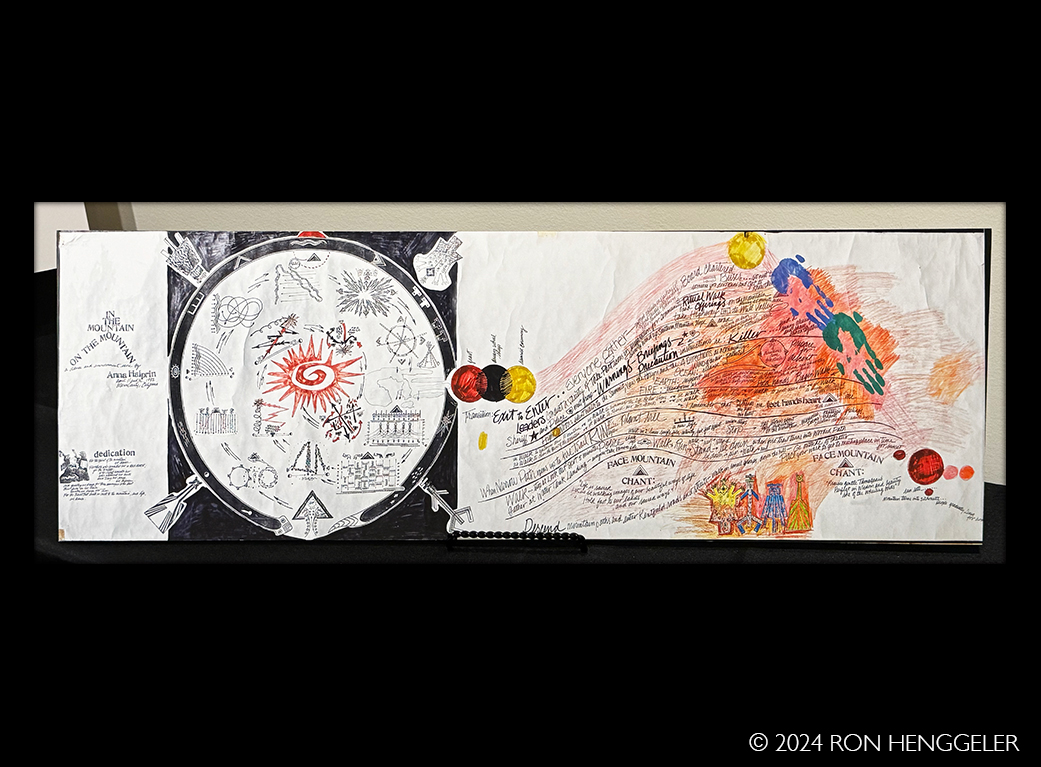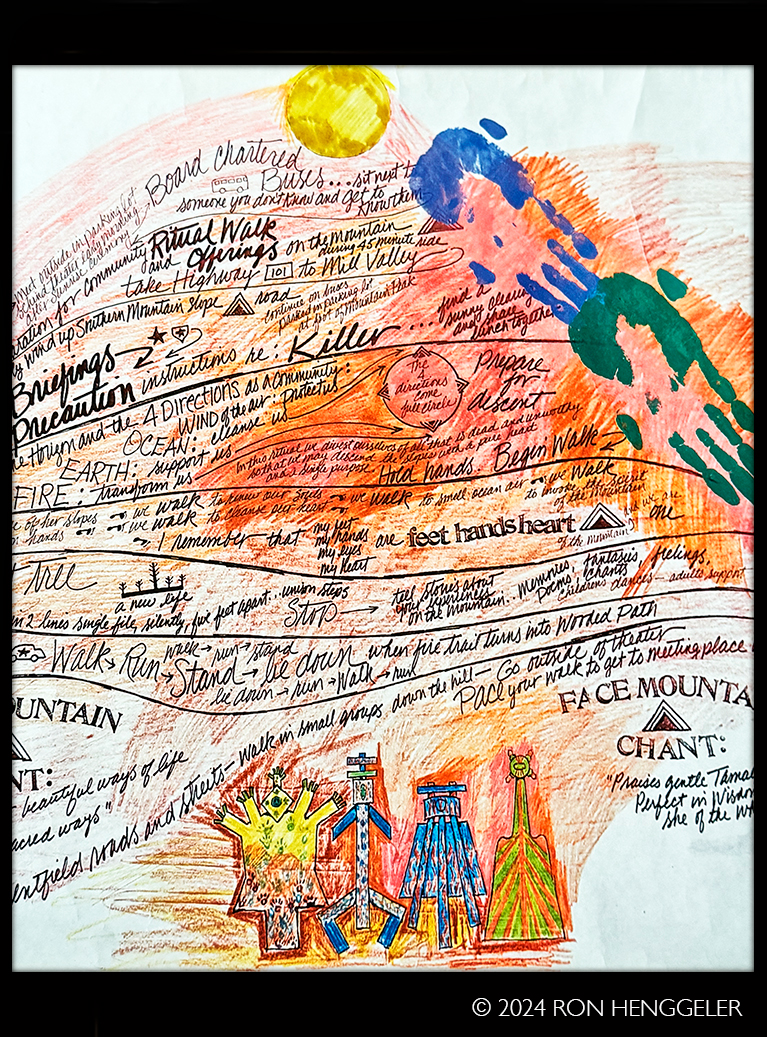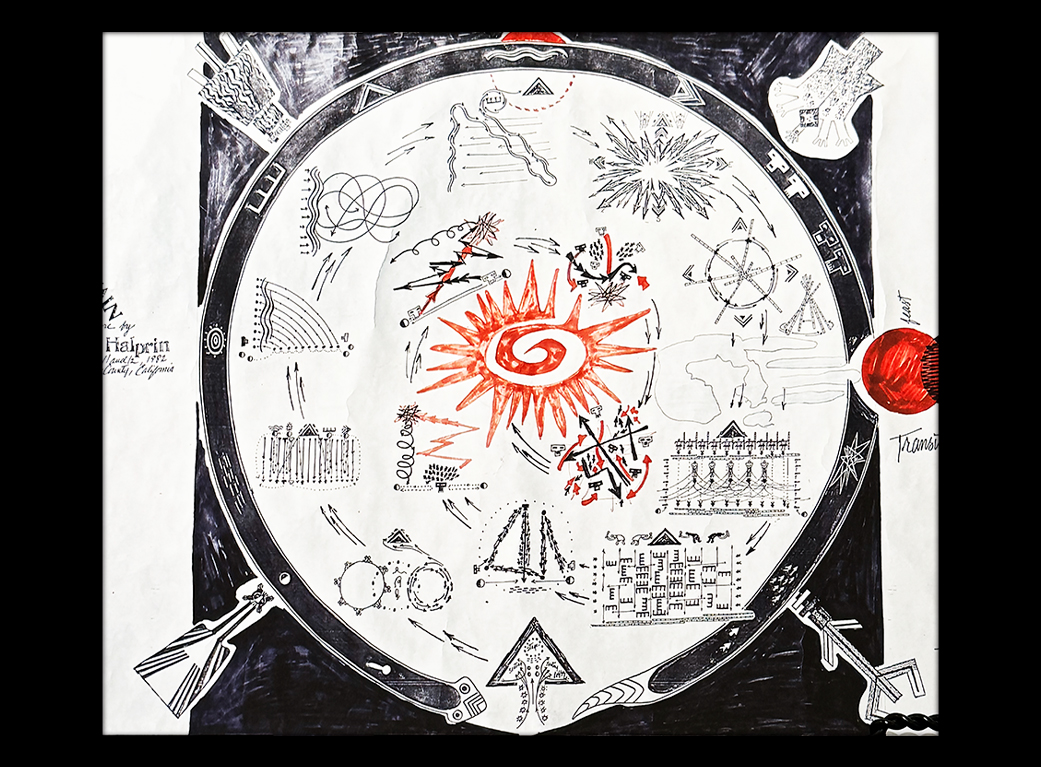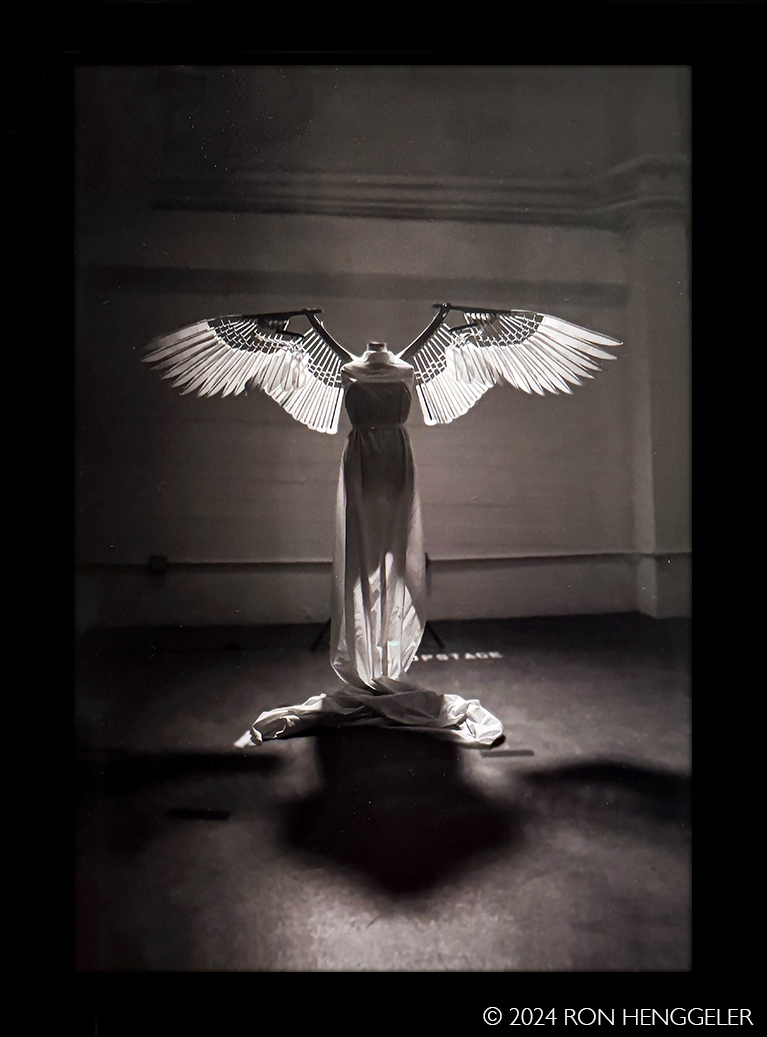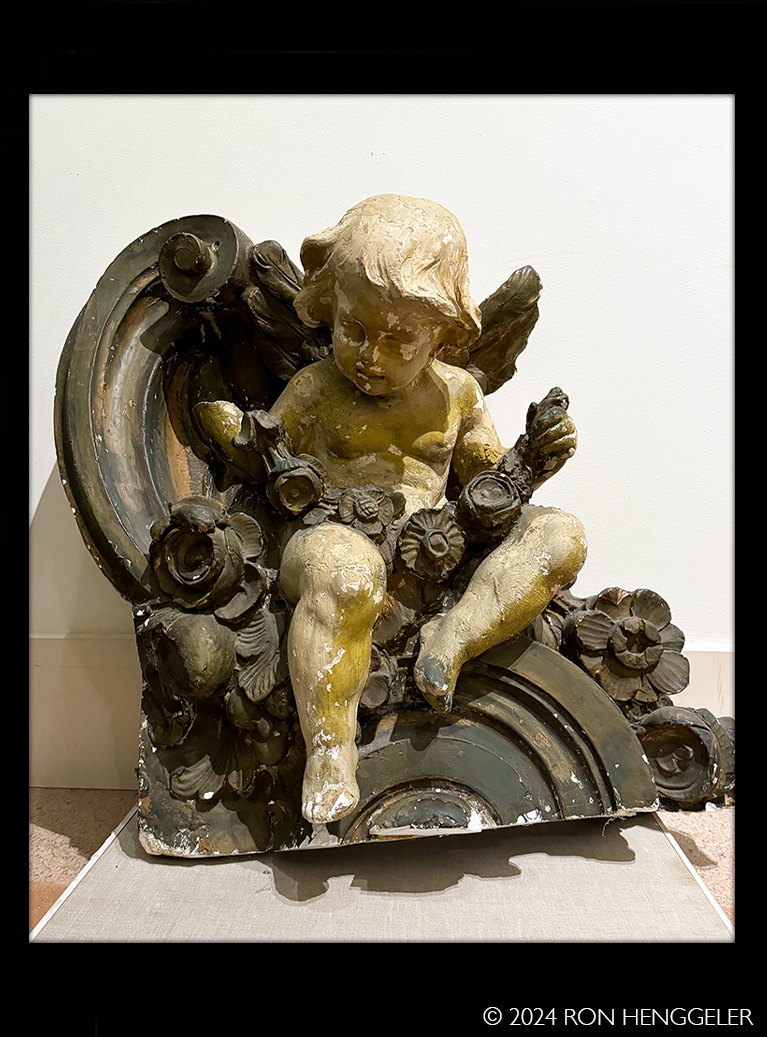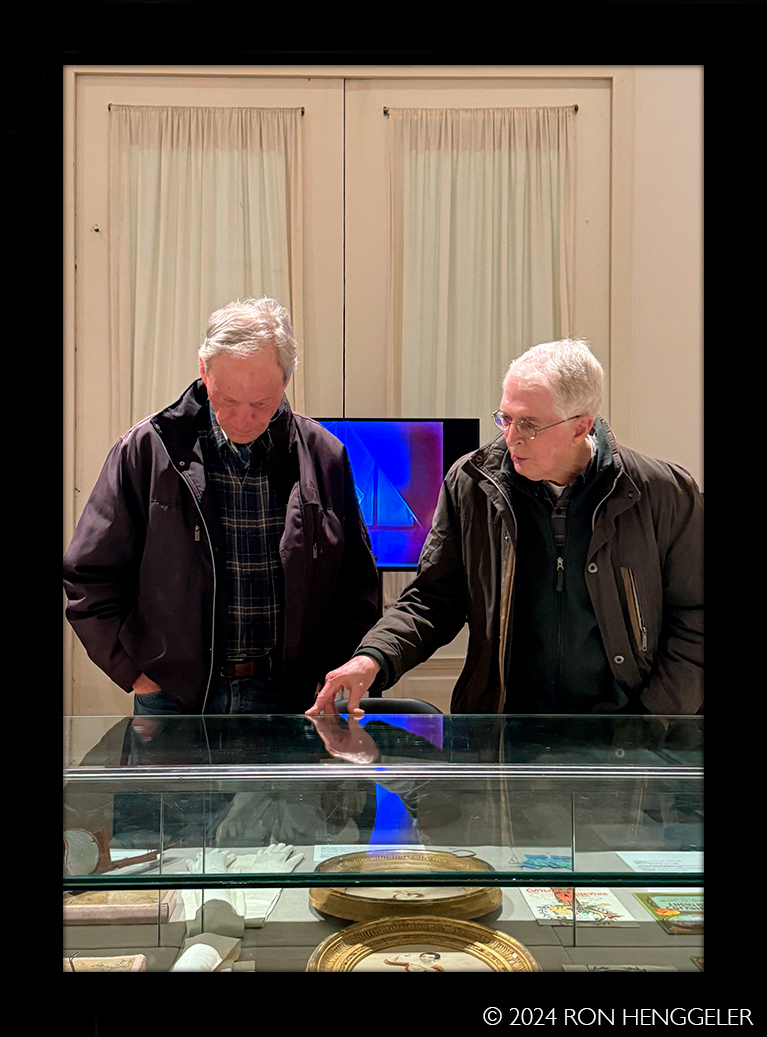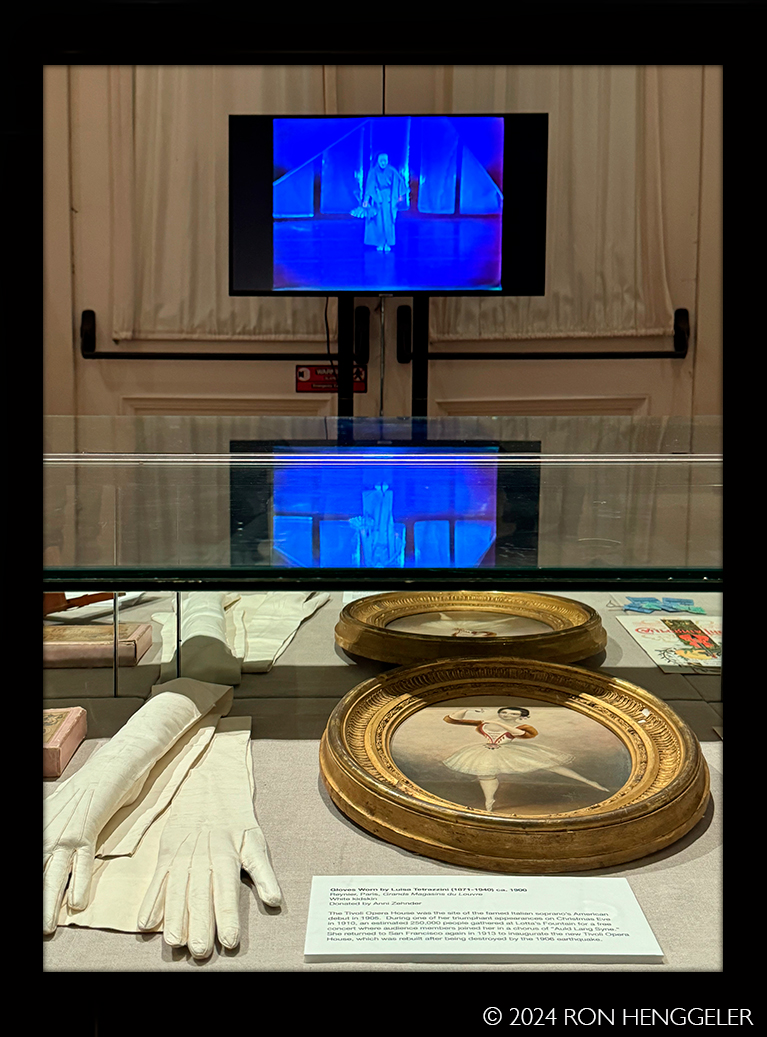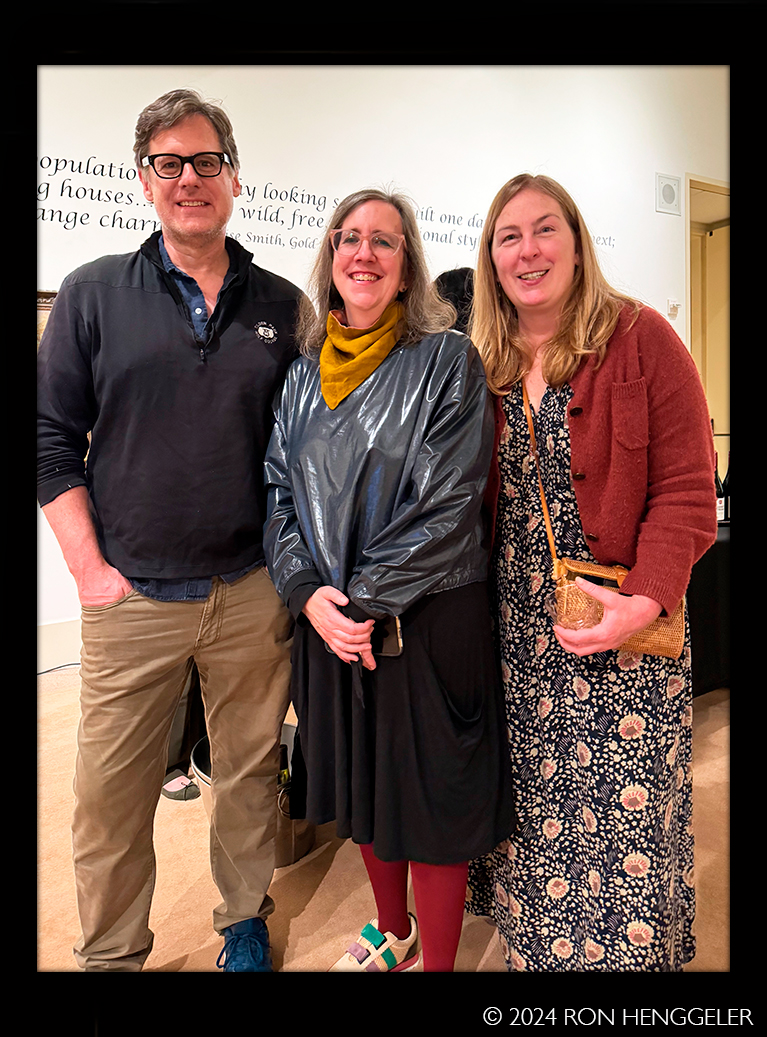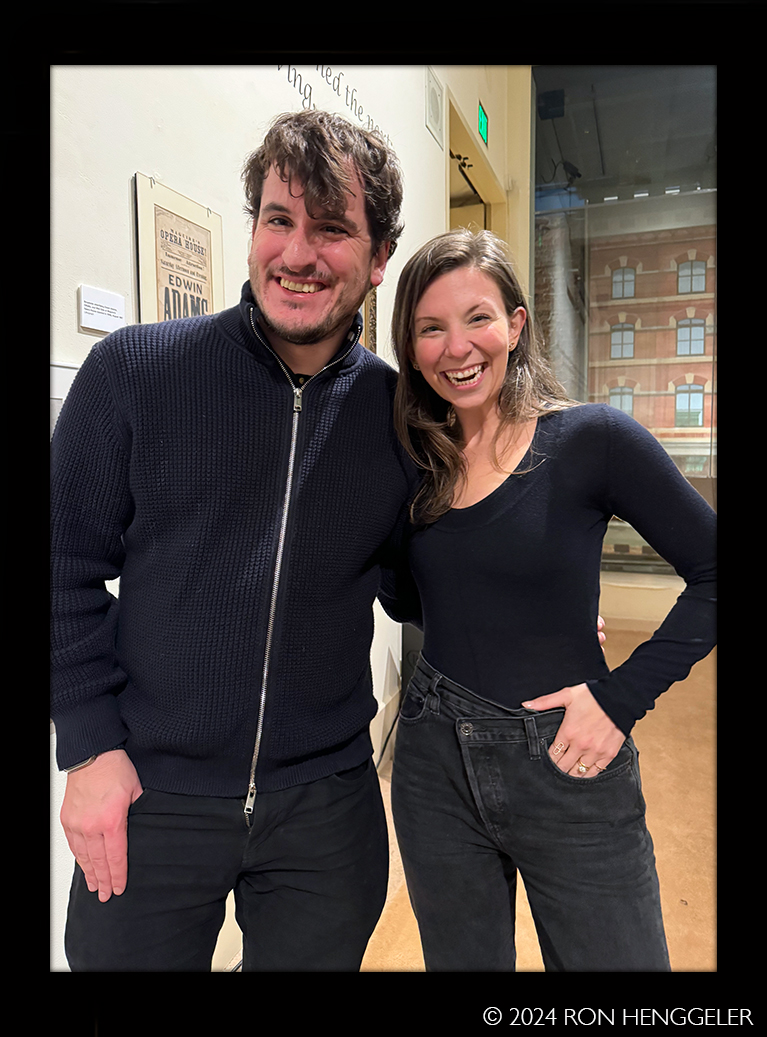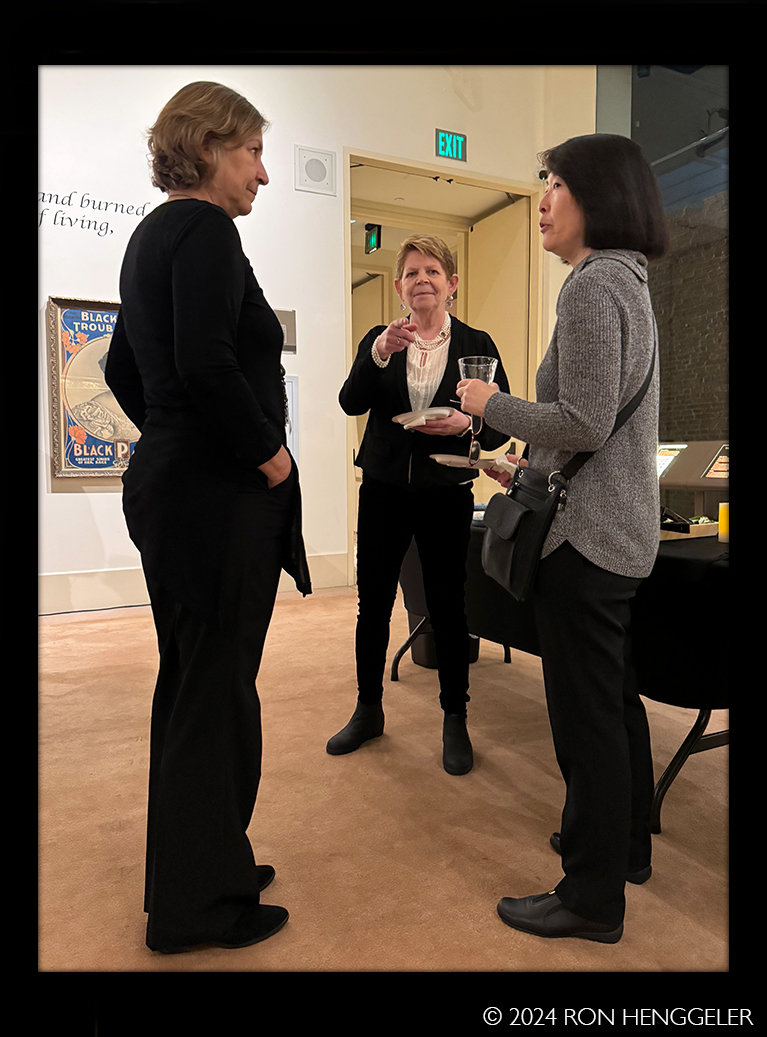| |
February 25, 2024
San Francisco on Stage |
|
| |
February 23rd to August 15th 2024 |
|
| |
On Thursday February 22nd, I attended the opening of a new exhibit at the SFHS Museum, 608 Commercial. Here are photos from the evening's festivities. |
|
|
|
| |
San Francisco On Stage:
The Inaugural Collaboration
Between the San Francisco Historical Society And the Museum of Performance + Design
San Francisco's emergence as a center for the performing arts began during the Gold Rush era. The influx of fortune-seekers from around the world brought a diverse population that craved entertainment, leading to the establishment of theaters, saloons, and performance venues that laid the foundation for a thriving cultural scene.
Our first collaborative exhibit features highlights of MP+D's collection across an array of performance genres, including dance, music, and theater.
SFHS and MP+D look forward to an ongoing relationship and a shared commitment to celebrate San Francisco's rich history of performing arts through ongoing exhibits, performances and presentations. |
|
| |
|
|
|
| |
If you would like to see this exhibit,
The San Francisco Historical Society's Museum is open on Thursday, Friday, and Saturday from 10am to 4pm. |
|
| |
|
|
|
| |
Set Model for San Francisco Ballet's Third
Production of Nutcracker, 1967
Robert O'Hearn (1921 - 2016), Artist. Restored by Alan Greenspan
Mixed media
San Francisco Ballet, the oldest professional ballet company in the United States, not only produced the first full-length Nutcracker in the country (1944), but also the first full-length American Coppelia (1938) and Swan Lake (1940).
MP+D serves as the official archive for San Francisco Ballet. |
|
| |
|
|
|
| |
Bill Eddelman & Lana Costantini |
|
| |
|
|
|
| |
Model of the War Memorial Opera House, ca. 1975
Unknown Artist
Paper
Home to the San Francisco Ballet and San Francisco Opera, the War Memorial Opera House opened on October 15, 1932, with the Opera's production of Puccini's Tosca. Designed by Arthur Brown, Jr. (architect of Coit Tower and City Hall) and built as a memorial to San Franciscans who served in World War 1, the War Memorial was the first opera house in America built entirely through community donations.
Opening night ticket for
the War Memorial Opera House, 1932 |
|
| |
|
|
|
| |
Model of the War Memorial Opera House, ca. 1975
Unknown Artist
Paper
Home to the San Francisco Ballet and San Francisco Opera, the War Memorial Opera House opened on October 15, 1932, with the Opera's production of Puccini's Tosca. Designed by Arthur Brown, Jr. (architect of Coit Tower and City Hall) and built as a memorial to San Franciscans who served in World War 1, the War Memorial was the first opera house in America built entirely through community donations.
Opening night ticket for
the War Memorial Opera House, 1932 |
|
| |
|
|
|
| |
|
|
| |
|
|
|
| |
|
|
| |
|
|
|
| |
|
|
| |
|
|
|
| |
Wings from Eureka Theatre's production of Angels in America, 1991
Designed by Sandra Woodall
In 1991, the Eureka Theatre presented the world premiere of the Pulitzer prizewinning play Angels in America. MP+D not only has the video recording of that production among its 6,000 performance videos, but also the original Angel wings, which were used on the cover of the book The World Only Spins Forward: The Ascent of Angels in America.
Book Cover for The World Only Spins Forward Depicting Angels In America Wings Costume, 2018 |
|
| |
|
|
|
| |
|
|
| |
|
|
|
| |
|
|
| |
|
|
|
| |
Marie Taglioni as "La Gitana-The Gypsy," 1839
Joseph Rubens Powell, Artist
Oil Painting
Though Marie Taglioni (a.k.a. the Comtesse de Voisins, born Sweden,
1804-1884), the greatest ballerina of the Romantic period, never danced in San Francisco, this painting has been in the City since the Gold Rush days.
It was brought to San Francisco by Col. R. B. Woodward, who exhibited it in his "What Cheer House," a men's club formerly located at Sacramento and Leidesdorff Streets. The painting was later hung at his art gallery in Woodward's Garden. |
|
| |
|
|
|
| |
|
|
| |
|
|
|
| |
|
|
| |
|
|
|
| |
Wings from Eureka Theatre's production of Angels in America, 1991
Designed by Sandra Woodall
Wood, aluminum, galvanized steel, bias tape, nylon rods, Filon, steel cables
Donated by Sandra Woodall
In 1991, the Eureka Theatre presented the world premiere of the Pulitzer prizewinning play Angels in America. MP+D not only has the video recording of that production among its 6,000 performance videos, but also the original Angel wings, which were used on the cover of the book The World Only Spins Forward: The Ascent of Angels in America.
Book Cover for The World Only Spins Forward Depicting Angels In America Wings Costume, 2018 |
|
| |
|
|
|
| |
Anna Pavlova Life Mask, 1925
Victor Frisch (1876-1939), Artist
Plaster
Donated by the Estate of George Pring
The life mask captures the other-worldly aura of legendary Russian Prima Ballerina Anna Pavlova (1881-1931). Her last appearance in San Francisco was in 1915 at the Cort Theater, where she premiered in California Poppy as a gift to her West Coast admirers. Born in St. Petersburg, Russia to a poor family, Pavlova is regarded as one of the most celebrated ballerinas of all time.
Pavlova's fame came from her innate sense of interpretation, translating complex characters into graceful movements.
|
|
| |
|
|
|
| |
|
|
| |
|
|
|
| |
Emmy® Awarded to Michael Smuin for Outstanding Achievement in Choreography for San Francisco Ballet's A Song for Dead Warriors, 1983
Copper, nickel, silver and gold Donated by Stephen Smuin
Ballet dancer and award-winning choreographer Michael Smuin (1938-2007) danced with American Ballet Theatre and San Francisco Ballet, where he also served as Co-artistic Director for 12 years. |
|
| |
|
|
|
| |
|
|
| |
|
|
|
| |
|
|
| |
|
|
|
| |
Costume worn by Opera Singer Blanche Thebom in Der Rosenkavalier, ca. 1950s
Helene Pons (1898 - 1990), Artist
Satin, silk, rhinestones
Donated by San Francisco Opera
American mezzo-soprano Blanche Thebom (1915-2010) made her
San Francisco Opera debut in 1947, where she performed frequently through 1963. In 1980, she was appointed director of the opera program at San Francisco State University and co-founded the Opera Arts
Training Program for the San Francisco Girls' Chorus. |
|
| |
|
|
|
| |
Cherub from the Fox Theatre, San Francisco (Built in 1929; Demolished in 1963)
Thomas Lamb, Architect
Plaster
Donated by Jill Demeter
Photograph of The Grand Lobby of the Fox Theatre, ca. 1929
Opened in 1929, the 4,600-seat Fox Theatre, located at Market and Hayes, was considered one of the grandest movie palaces in the Bay Area before it was demolished in 1963. It was replaced by Fox Plaza. |
|
| |
|
|
|
| |
Wings from Eureka Theatre's production of Angels in America, 1991
Designed by Sandra Woodall
Wood, aluminum, galvanized steel, bias tape, nylon rods, Filon, steel cables
Donated by Sandra Woodall
In 1991, the Eureka Theatre presented the world premiere of the Pulitzer prizewinning play Angels in America. MP+D not only has the video recording of that production among its 6,000 performance videos, but also the original Angel wings, which were used on the cover of the book The World Only Spins Forward: The Ascent of Angels in America.
Book Cover for The World Only Spins Forward Depicting Angels In America Wings Costume, 2018 |
|
| |
|
|
|
| |
Detail of:
Costume worn by Dorothy Kirsten in Tosca, 1950s Edith Head (1897-1981), Designer
Silk, velvet, satin
Donated by Vicki Hillebrand
American soprano Dorothy Kirsten (1910-1992) made her San Francisco Opera debut in 1947 and continued to appear in leading roles with the company over the next three decades. In 1970, she was the recipient of the first San Francisco Opera medal, the Company's highest honor. |
|
| |
|
|
|
| |
|
|
| |
|
|
|
| |
|
|
| |
|
|
|
| |
|
|
| |
|
|
|
| |
|
|
| |
|
|
|
| |
|
|
| |
|
|
|
| |
|
|
| |
|
|
|
| |
|
|
| |
|
|
|
| |
|
|
| |
|
|
|
| |
Junius Brutus Booth as Richard Ill, late 19th century
Unknown Artist
Lithograph
Junius Brutus Booth (1796-1852), one of the most celebrated Shakespearean actors of his day, was near the end of his career when he arrived in San Francisco in 1852 with two of his three sons, actors Junius Jr. and Edwin.
Junius, Jr. traveled to Sacramento to learn theater management and Edwin honed his acting skills in the mining camps before becoming known as the
"Prince of Players." Booth's youngest son, John Wilkes, became infamous for assassinating President Abraham Lincoln. |
|
| |
|
|
|
| |
Marian Anderson performing on The Standard Hour Radio Broadcast, 1937
Jon Brenneis, Photographer
Gelatin silver print photograph
Donated by Lily Michaelis.
On February 24, 1937, contralto Marian Anderson (1897-1993) made her San Francisco debut, performing a solo concert at the War Memorial Opera House.
Ten days later, Anderson appeared as a guest soloist with the San Francisco Symphony under the direction of Pierre Monteux. One of the greatest singers of the 20th century, Anderson was the first Black Presidential inauguration performer and broke the Metropolitan Opera's color barrier. |
|
| |
|
|
|
| |
Williams & Walker, ca. 1900
Unknown photographer
Gelatin silver print photograph (reproduction of original)
Bert Williams (1874-1922) and George Walker (1873-1911) met on San Francisco's Market Street in 1893 and soon after began their career together in the ten-man integrated troupe of Martin and Seig's Mastodon Minstrels. The two talented performers worked hard to develop their own musical-comedy variety act without the stereotypical blackface makeup, but found it difficult to become a hit with White audiences without the minstrel props and mannerisms. They eventually incorporated the minstrel dialect and blackface makeup into their act and became the most popular African American musical comedy duo in the nation.
The quality of their work shone through the stereotypical facade they had to adopt, and paved the way for other African American singers and dancers to break out of minstrelsy into other performing art forms on the American stage. |
|
| |
|
|
|
| |
Broadside advertising Edwin Adams, Othello, and Wild Oats at Maguire's Opera House (opened in 1856), August 1867
Lithograph |
|
| |
|
|
|
| |
Poster for Matilda Sissieretta Joyner Jones performing as "The Black Patti," ca. 1896
Ink on paper
Published by National Printing & Engraving Company
Donated by Margaret Norton
African American performer Sissieretta Jones (1868-1933) was given the stage nameThe Black Patti because audiences compared her stellar voice to that of world-renowned Italian opera singer Adelina Patti. In 1892, Jones made her debut at New York's Carnegie Hall. The New York Echo wrote of this performance, "If Mme. Jones is not the equal of Adelina Patti, she at least can come nearer to it than anything the American public has heard. Her notes are clear as a mockingbird's and her enunciation perfect." In spite of her prodigious talent, Jones found that racism kept her from performing in many of the major opera venues. As a consequence, she formed the Black Patti Troubadours in 1896 (later renamed the Black Patti Musical Comedy Company), which included skits and acrobatic routines as well as her operatic singing.
Jones performed at the White House three times for three different presidents during her illustrious career. In the early 1900s, she toured in over 2,400 shows across the United States, accompanied by her talented group of African American singers, dancers, musicians, and comedians. San Francisco was a favorite stop, with sold-out crowds packing the Orpheum every night to cheer the troupe. Eubie Blake and Josephine Baker were among the performers who began their careers in Black Patti's Trou-badours. While revenue from the company's performances provided her with a modest income, it did not allow her to save for her retirement. Jones continued to perform until 1915, but died in poverty. |
|
| |
|
|
|
| |
|
|
| |
|
|
|
| |
|
|
| |
|
|
|
| |
|
|
| |
|
|
|
| |
Cherub from the Fox Theatre, San Francisco (Built in 1929; Demolished in 1963)
Thomas Lamb, Architect
Plaster
Donated by Jill Demeter
Photograph of The Grand Lobby of the Fox Theatre, ca. 1929
Opened in 1929, the 4,600-seat Fox Theatre, located at Market and Hayes, was considered one of the grandest movie palaces in the Bay Area before it was demolished in 1963. It was replaced by Fox Plaza. |
|
| |
|
|
|
| |
|
|
| |
|
|
|
| |
Betty Boop Sheet Music, 1932
Lithograph, Fleischer Cartoons
Donated by Bob Johnson
This piece of sheet music is from the Museum of Performance + Design's Bob Johnson Sheet Music Collection, a 60,000-piece assemblage of songs from films, stage, and more than twenty other categories ranging from rock and pop to wars and world's fairs. |
|
| |
|
|
|
| |
The Baldwin Program, 1885
Printed by Bancroft Lith, lithograph
Program for Miss Jeffreys Lewis in Herman Merivales' drama Forget Me Not |
|
| |
|
|
|
| |
|
|
| |
|
|
|
| |
|
|
| |
|
|
|
| |
|
|
| |
|
|
|
| |
Lana Costantini
|
|
| |
|
|
|
| |
|
|
| |
|
|
|
| |
Bill Eddelman |
|
| |
|
|
|
| |
|
|
| |
|
|
|
| |
|
|
| |
|
|
|
| |
Bill Eddelman and Lana Costantini |
|
| |
|
|
|
| |
Bill Eddelman |
|
| |
|
|
|
| |
|
|
| |
|
|
|
| |
|
|
| |
|
|
|
| |
|
|
| |
|
|
|
| |
|
|
| |
|
|
|
| |
|
|
| |
|
|
|
| |
|
|
| |
|
|
|
| |
|
|
| |
|
|
|
| |
Lana Costantini
|
|
| |
|
|
|
| |
|
|
| |
|
|
|
| |
|
|
| |
|
|
|
| |
|
|
| |
|
|
|
| |
|
|
| |
|
|
|
| |
|
|
| |
|
|
|
| |
|
|
| |
|
|
|
| |
|
|
| |
|
|
|
| |
Detail of:
Wings from Eureka Theatre's production of Angels in America, 1991
Designed by Sandra Woodall
Wood, aluminum, galvanized steel, bias tape, nylon rods, Filon, steel cables
Donated by Sandra Woodall
In 1991, the Eureka Theatre presented the world premiere of the Pulitzer prizewinning play Angels in America. MP+D not only has the video recording of that production among its 6,000 performance videos, but also the original Angel wings, which were used on the cover of the book The World Only Spins Forward: The Ascent of Angels in America.
Book Cover for The World Only Spins Forward Depicting Angels In America Wings Costume, 2018 |
|
| |
|
|
|
| |
|
|
| |
|
|
|
| |
|
|
| |
|
|
|
| |
|
|
| |
|
|
|
| |
|
|
| |
|
|
|
| |
Detail of: Marie Taglioni as "La Gitana-The Gypsy," 1839
Joseph Rubens Powell, Artist
Oil Painting
Though Marie Taglioni (a.k.a. the Comtesse de Voisins, born Sweden,
1804-1884), the greatest ballerina of the Romantic period, never danced in San Francisco, this painting has been in the City since the Gold Rush days.
It was brought to San Francisco by Col. R. B. Woodward, who exhibited it in his "What Cheer House," a men's club formerly located at Sacramento and Leidesdorff Streets. The painting was later hung at his art gallery in Woodward's Garden. |
|
| |
|
|
|
| |
|
|
| |
|
|
|
| |
|
|
| |
|
|
|
| |
Model of the War Memorial Opera House, ca. 1975
Unknown Artist
Paper
Home to the San Francisco Ballet and San Francisco Opera, the War Memorial Opera House opened on October 15, 1932, with the Opera's production of Puccini's Tosca. Designed by Arthur Brown, Jr. (architect of Coit Tower and City Hall) and built as a memorial to San Franciscans who served in World War 1, the War Memorial was the first opera house in America built entirely through community donations.
Opening night ticket for
the War Memorial Opera House, 1932 |
|
| |
|
|
|
| |
|
|
| |
|
|
|
| |
|
|
| |
|
|
|
| |
Detail of: Wings from Eureka Theatre's production of Angels in America, 1991
Designed by Sandra Woodall
Wood, aluminum, galvanized steel, bias tape, nylon rods, Filon, steel cables
Donated by Sandra Woodall
In 1991, the Eureka Theatre presented the world premiere of the Pulitzer prizewinning play Angels in America. |
|
| |
|
|
|
| |
Wings from Eureka Theatre's production of Angels in America, 1991
Designed by Sandra Woodall
Wood, aluminum, galvanized steel, bias tape, nylon rods, Filon, steel cables
Donated by Sandra Woodall
In 1991, the Eureka Theatre presented the world premiere of the Pulitzer prizewinning play Angels in America. MP+D not only has the video recording of that production among its 6,000 performance videos, but also the original Angel wings, which were used on the cover of the book The World Only Spins Forward: The Ascent of Angels in America.
|
|
| |
|
|
|
| |
Detail of:
Costume worn by Dorothy Kirsten in Tosca, 1950s Edith Head (1897-1981), Designer
Silk, velvet, satin
Donated by Vicki Hillebrand
American soprano Dorothy Kirsten (1910-1992) made her San Francisco Opera debut in 1947 and continued to appear in leading roles with the company over the next three decades. In 1970, she was the recipient of the first San Francisco Opera medal, the Company's highest honor. |
|
| |
|
|
|
| |
Costume worn by Dorothy Kirsten in Tosca, 1950s Edith Head (1897-1981), Designer
Silk, velvet, satin
Donated by Vicki Hillebrand
American soprano Dorothy Kirsten (1910-1992) made her San Francisco Opera debut in 1947 and continued to appear in leading roles with the company over the next three decades. In 1970, she was the recipient of the first San Francisco Opera medal, the Company's highest honor. |
|
| |
|
|
|
| |
Detail of:
Poster for Matilda Sissieretta Joyner Jones performing as "The Black Patti," ca. 1896
Ink on paper
Published by National Printing & Engraving Company
Donated by Margaret Norton
African American performer Sissieretta Jones (1868-1933) was given the stage nameThe Black Patti because audiences compared her stellar voice to that of world-renowned Italian opera singer Adelina Patti. In 1892, Jones made her debut at New York's Carnegie Hall. The New York Echo wrote of this performance, "If Mme. Jones is not the equal of Adelina Patti, she at least can come nearer to it than anything the American public has heard. Her notes are clear as a mockingbird's and her enunciation perfect." In spite of her prodigious talent, Jones found that racism kept her from performing in many of the major opera venues. As a consequence, she formed the Black Patti Troubadours in 1896 (later renamed the Black Patti Musical Comedy Company), which included skits and acrobatic routines as well as her operatic singing.
Jones performed at the White House three times for three different presidents during her illustrious career. In the early 1900s, she toured in over 2,400 shows across the United States, accompanied by her talented group of African American singers, dancers, musicians, and comedians. San Francisco was a favorite stop, with sold-out crowds packing the Orpheum every night to cheer the troupe. Eubie Blake and Josephine Baker were among the performers who began their careers in Black Patti's Trou-badours. While revenue from the company's performances provided her with a modest income, it did not allow her to save for her retirement. Jones continued to perform until 1915, but died in poverty. |
|
| |
|
|
|
| |
San Francisco Opera Poster, 1962
Artist: Pischoff
Lithograph
Founded in 1923 by Italian Gaetano Merola (1881-1953), San Francisco Opera is one of the 10 largest opera companies in the United States and the oldest operating on the West Coast. With its throng of Italian, French, and German settlers during the Gold Rush, San Francisco was an ideal opera town, with the visiting Pelligrini Opera Troupe staging California's first actual opera production on February 12, 1851. |
|
| |
|
|
|
| |
Photograph from San Francisco Ballet's
Nutcracker
Russell Hartley as Mother Buffoon in San Francisco Ballet's Nutcracker, 1944 |
|
| |
|
|
|
| |
Isadora Duncan (1877 - 1927)
Arnold Genthe (1869 - 1942), Photographer
Gelatin silver print
Considered the "Mother of Modern Dance," native San Franciscan Isadora Duncan was a legendary individual whose free lifestyle, scandals, and tragedies sometimes overshadowed her talent. Rebelling against the tight restrictions placed on women during the Victorian era, Duncan earned her reputation in Europe before her innovative dance style received acclaim in the United States. |
|
| |
|
|
|
| |
Score for In and On the Mountain, 1981
Anna Halprin, Artist
Ink, crayon, felt tip marker, and acrylic on paper
Audio caption by Anna Halprin
Donated by Anna Halprin
Anna Halprin's career in dance spanned more than 75 years. Arriving in San Francisco in 1945, Hal-prin (1920-2021) developed some of the most groundbreaking and influential performance works of the 20th century.As an alternative to set choreography, Halprin developed a unique visual method of scoring her dances, which render as independent works of art. Her dance scores like the one on view visually communicate the essential spatial, temporal, and physical instructions for each performance work. These two-dimensional renderings are designed so that dance directors and dancers can add their own creative sensibilities to the work. |
|
| |
|
|
|
| |
Detail of:
Score for In and On the Mountain, 1981
Anna Halprin, Artist
Ink, crayon, felt tip marker, and acrylic on paper
Audio caption by Anna Halprin
Donated by Anna Halprin
Anna Halprin's career in dance spanned more than 75 years. Arriving in San Francisco in 1945, Hal-prin (1920-2021) developed some of the most groundbreaking and influential performance works of the 20th century.As an alternative to set choreography, Halprin developed a unique visual method of scoring her dances, which render as independent works of art. Her dance scores like the one on view visually communicate the essential spatial, temporal, and physical instructions for each performance work. These two-dimensional renderings are designed so that dance directors and dancers can add their own creative sensibilities to the work. |
|
| |
|
|
|
| |
Detail of:
Score for In and On the Mountain, 1981
Anna Halprin, Artist
Ink, crayon, felt tip marker, and acrylic on paper
Audio caption by Anna Halprin
Donated by Anna Halprin |
|
| |
|
|
|
| |
Wings from Eureka Theatre's production of Angels in America, 1991
Designed by Sandra Woodall
Book Cover for The World Only Spins Forward Depicting Angels In America Wings Costume, 2018 |
|
| |
|
|
|
| |
Cherub from the Fox Theatre, San Francisco (Built in 1929; Demolished in 1963)
Thomas Lamb, Architect
Plaster
Donated by Jill Demeter
Photograph of The Grand Lobby of the Fox Theatre, ca. 1929
Opened in 1929, the 4,600-seat Fox Theatre, located at Market and Hayes, was considered one of the grandest movie palaces in the Bay Area before it was demolished in 1963. It was replaced by Fox Plaza. |
|
| |
|
|
|
| |
Backside detail of:
Wings from Eureka Theatre's production of Angels in America, 1991
Designed by Sandra Woodall
Wood, aluminum, galvanized steel, bias tape, nylon rods, Filon, steel cables
Donated by Sandra Woodall
|
|
| |
|
|
|
| |
|
|
| |
|
|
|
| |
|
|
| |
|
|
|
| |
|
|
| |
|
|
|
| |
|
|
| |
|
|
|
| |
|
|
| |
|
|
|
| |
San Francisco On Stage:
The Inaugural Collaboration
Between the San Francisco Historical Society And the Museum of Performance + Design
San Francisco's emergence as a center for the performing arts began during the Gold Rush era. The influx of fortune-seekers from around the world brought a diverse population that craved entertainment, leading to the establishment of theaters, saloons, and performance venues that laid the foundation for a thriving cultural scene.
Our first collaborative exhibit features highlights of MP+D's collection across an array of performance genres, including dance, music, and theater.
SFHS and MP+D look forward to an ongoing relationship and a shared commitment to celebrate San Francisco's rich history of performing arts through ongoing exhibits, performances and presentations. |
|
| |
|
|
|
| |
If you would like to see this exhibit,
The San Francisco Historical Society's Museum is open on Thursday, Friday, and Saturday from 10am to 4pm. |
|
| |
|
|
